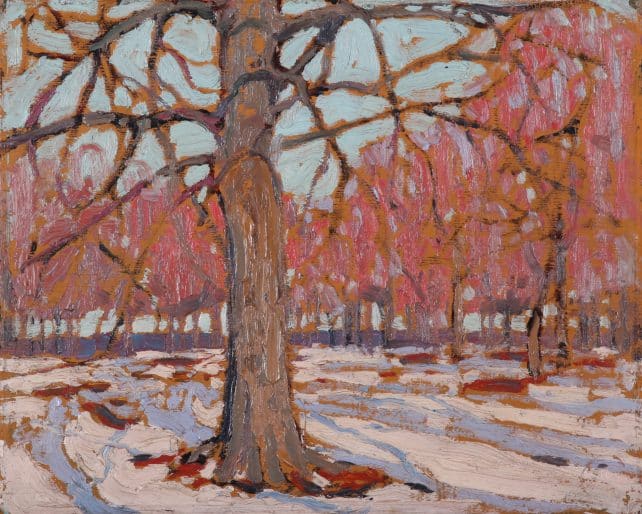
Tom Thomson, First Snow, 1916, oil on cardboard. Gift of the Queen’s University Art Foundation, 1941 (00-127). Photo: Bernard Clark
Situated within territories of the Anishinaabe, Haudenosaunee and Huron-Wendat, the Agnes Etherington Art Centre is a curatorially-driven and research-intensive professional art centre that proudly serves a dual mandate as a leading, internationally recognized public art gallery and as an active pedagogical resource at Queen’s University in Kingston. By commissioning, researching, collecting and stewarding works of art, and by exhibiting and interpreting visual culture through an intersectional lens, Agnes creates opportunities for participation and exchange across communities, cultures, histories and geographies.
Its collections—numbering over 17,000 works—include cutting-edge contemporary art and fine examples of Canadian historical art, Indigenous art and historicized ancestors, and material culture including the Collection of Canadian Dress and the Lang Collection of African Art. The Bader Collection, comprising over 500 works with a focus on seventeenth-century Dutch and Flemish painting, includes one portrait and three exquisite character studies by Rembrandt.
Agnes is committed to anti-racism. We work to eradicate institutional biases and develop accountable programs that support and centre the artistic expression and lived experience of Black, Indigenous and People of Colour. Agnes promotes 2SLGBTQIAP+ positive spaces. Admission is free and everyone is welcome.
Agnes Etherington, a longstanding patron of the arts in Kingston and member of the suffragette movement, planted the seeds for Agnes Etherington Art Centre as early as the 1920s and 1930s when she created a summer school for artists at Queen’s. But it was with her invitation to André Biéler to come to Kingston as an artist-in-residence that her plans grew. Upon her death in 1954, she bequeathed her house to Queen’s University in order to “further the cause of art and community.” Officially, the Agnes Etherington Art Centre opened its doors to the public in 1957 and since has grown to be a gallery of national and international importance—affectionately known early on as The Agnes. Bieler became the first director of the Art Centre (1957-1962) and Frances K. Smith was hired as Agnes’s first curator. To fulfill the gallery’s expanding role as a public art gallery and as collections, exhibitions, and programs grew, extensions to the building were made in 1962, 1975, 1978 and 2000. Since, Agnes has developed superb collections and staff expertise while expanding to encompass nine elegant galleries totaling 9,600 square feet, with additional accessible spaces for learning and creation, and museum-grade vaults. Strategic development and sector leadership of Agnes’s public profile has steadily advanced through the work of visionary women Directors: Janet M. Brooke (2002–2012) and Jan Allen (2014–2019).
With over 17,000+ works with strengths in Canadian contemporary and historical art in all media, Indigenous art, European paintings and works on paper from the 16th to the 20th century, historical African art, and Canadian decorative arts, quilts, and historical dress, Agnes is one of the largest and most significant university-affiliated galleries in Canada. Agnes is unique in this regard: it is one of the few museums in Canada where we can take up the idea of history while working in the present. This is because we have all the trappings of a public museum, but because we are university-affiliated we are nimble enough to change: we are artistic catalysts charged with the responsibility toward artistic experimentation and curatorial risk-taking.
Over the years, Agnes has emerged as a platform for artists, researchers, curators, scholars and community members to experience and participate in art and its societal importance. Agnes’s success as an experiential research site for visual and media artists, curators, and diverse communities near and far is reflected in its on-site programs and robust online profile as well as its active exchange and partnerships locally, nationally and internationally and its capacity to nurture artistic production. Since 2013, Agnes has developed artist residencies as a powerful tool of intersectional engagement and in 2017, Agnes founded the Stonecroft Foundation Artist-in-Residence program. Agnes has always worked along a continuum, with artists shaping its future-oriented work.
In 2020, with an announcement of a $40 Million (US) lead gift from Bader Philanthropies, Inc., and the appointment its new Director and Curator, Emelie Chhangur, Agnes has entered an intensive planning phase for a transformative facility expansion and a renewed commitment to the art centre’s social role, civic function, and pedagogical impact, bringing it back to its roots, “to further the cause of art in the community,” and coming full circle: reinvesting in the origins of the art centre as a home by committing to forms of hospitality as a guiding institutional ethos. Strategically, eliminating the “the” in front of Agnes, we personify this forward-thinking museum poised to enact important change as a 21st Century museum. Agnes will emerge as the largest public, university-affiliated gallery in the country and a leading champion of museological change by asking: what do we need to do now to ensure that the museums of Canada’s future no longer look like those of Canada’s colonial past? What better place to do this than the original capital of Canada … and who better to do this than a space named after a powerful and visionary woman: Agnes!

The Agnes Etherington Art Centre formally opens to the public on 12 October, in a building bequeathed by local philanthropist Agnes McCausland Etherington (née Richardson). Tea is served to 130 assembled guests, who view the exhibition Canadian Paintings on Loan from Kingston Collections. Artist and Queen’s professor André Biéler is inaugural director, having supervised renovations that turned Etherington’s lifetime home into a cultural institution for the university and Kingston community.
As a “Centre,” the Agnes houses exhibition and lecture spaces in the former dining room and kitchen, as well as an art library and studio spaces upstairs, shared by Queen’s Department of Art, the Summer School of Fine Arts and community art classes. Frances K. Smith is hired as Biéler’s assistant. Works of art given to the university in preceding years, through the Queen’s University Art Foundation and other donors, form the nucleus of the Agnes’s permanent collection.

Tom Thomson, First Snow, 1916, oil on cardboard. Gift of the Queen’s University Art Foundation, 1941 (00-127). Photo: Bernard Clark
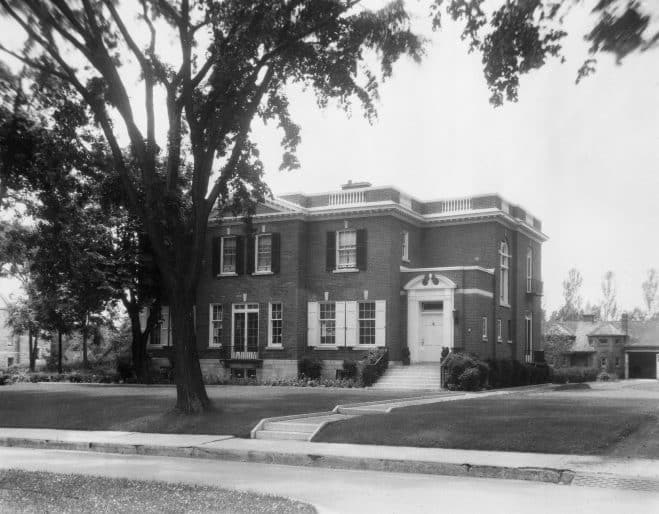
Agnes Etherington’s home (with carriage house in the background) prior to becoming an art gallery, 1930s–1940s

Invitation, official opening, 1957
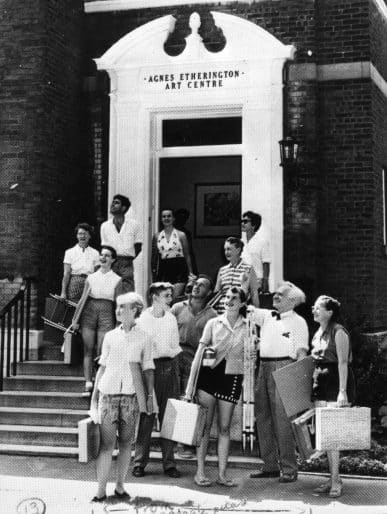
André Biéler and art students at the entrance of the new Agnes Etherington Art Centre, 1958
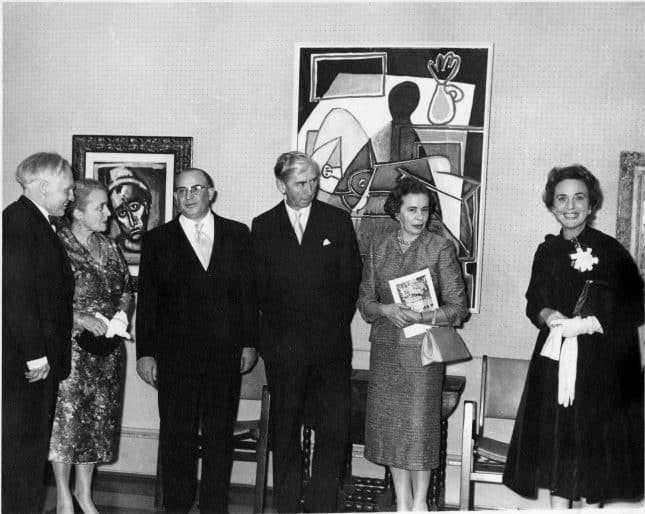
André and Jeannette Biéler, Samuel Zacks, British art historian Herbert Read and his wife Evelyn, and Ayala Zacks, at the opening of the exhibition of the Zackses’ collection of late 19th and early 20th century paintings, 8 November 1957

Upstairs studio, around 1960

Tom Thomson, First Snow, 1916, oil on cardboard. Gift of the Queen’s University Art Foundation, 1941 (00-127). Photo: Bernard Clark

Agnes Etherington’s home (with carriage house in the background) prior to becoming an art gallery, 1930s–1940s
The Agnes becomes the regular home for an annual juried Spring Exhibition, initially organized by the Kingston Art Association. Over the next seventeen years, the Spring Exhibition draws submissions from Kingston and beyond, which are juried by invited artists, art critics and curators. In 1960, art critic Pearl McCarthy chooses ninety-eight works from twice as many entries and writes about her jurying experience in The Globe and Mail. By the 1975 Spring Exhibition, which focuses exclusively on drawing, there are 591 entries by 199 artists from across Ontario.
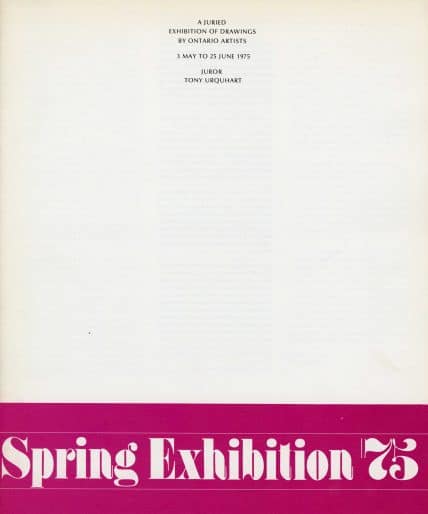
Spring Exhibition ’75, 1975

Postcard, Agnes Etherington Art Centre, 1958

Frances K. Smith and André Biéler examining Annual Spring Exhibition submissions, 1959. Photo: DEWAR
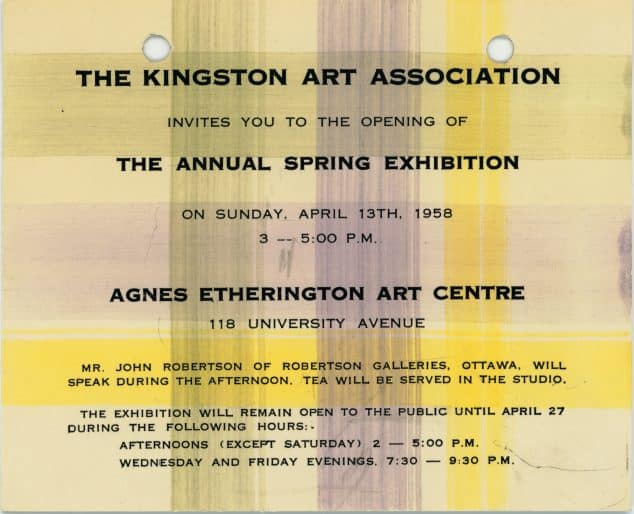
Invitation, Agnes Etherington Art Centre, 1958

Brochure, Spring Exhibition, 1971

Spring Exhibition ’75, 1975

Postcard, Agnes Etherington Art Centre, 1958
Canadian artists are invited from across Canada to send works for the inauguration of picture loan services in Kingston. For a nominal fee, Kingstonians can borrow an original work of art for one month or more. Reproductions and prints also become available to Queen’s students for the academic year. The art rental program at the Agnes, which continues through 2014, is first run by a volunteer committee, and later by the Gallery Association.

Daphne Franks, volunteer Director, Gallery Association’s Art Rental Gallery, 1990s. Photo: Robert Mooy

Bulletin, September 1959
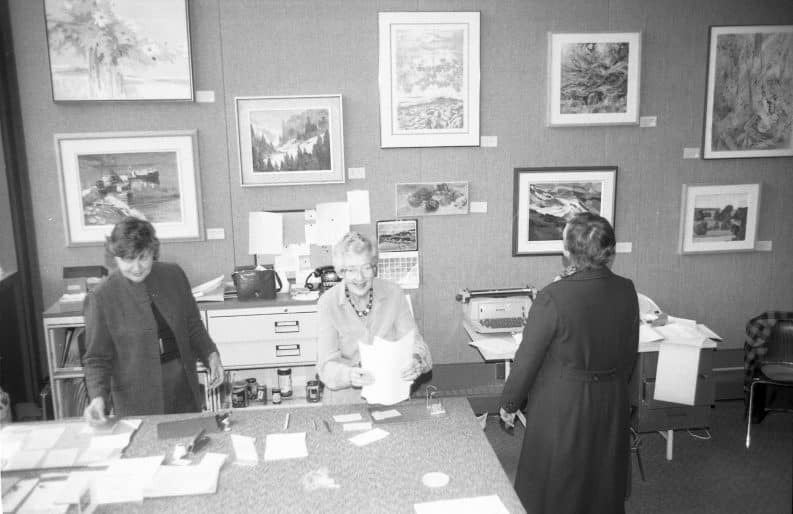
Kay Davis and Mimi Schwob, volunteers, Gallery Association’s Art Rental Gallery, 1986
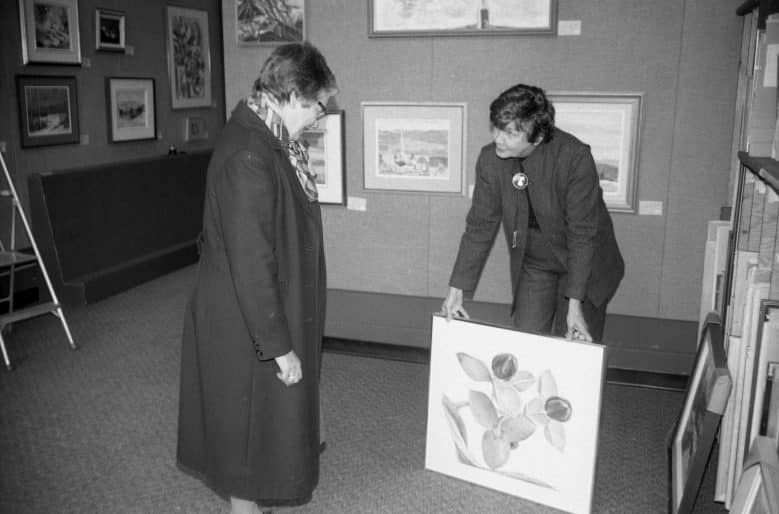
Kay Davis, volunteer, Gallery Association’s Art Rental Gallery, 1986
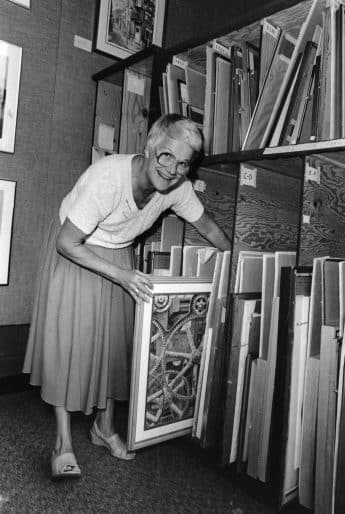
Muriel Rush, volunteer, Gallery Association’s Art Rental Gallery, 1990s. Photo: Lisa Lowry

Daphne Franks, volunteer Director, Gallery Association’s Art Rental Gallery, 1990s. Photo: Robert Mooy

Bulletin, September 1959
The Agnes plays a vital role in the summer Emily Carr Festival. An exhibition of the artist’s paintings, on loan from Toronto collector Charles S. Band, coincides with Queen’s Department of Drama’s production of Emily Carr, A Stage Biography with Pictures, a new play by Herman Voaden. A public lecture on Carr’s work by her artist-friend Yvonne Housser and a screening of the National Film Board of Canada’s Klee Wyck also take place in nearby Ellis Hall. Twenty-three years later, in 1983, the Agnes acquires its first Carr paintings, by purchase and gift, through Montreal art dealer Max Stern.
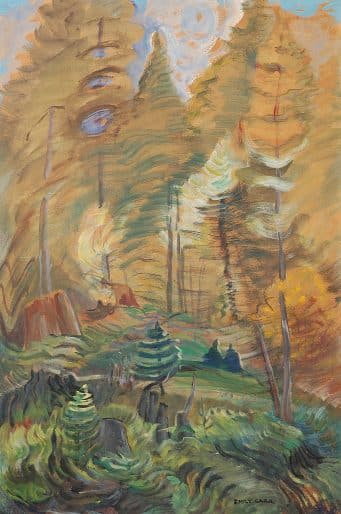
Emily Carr, Young and Old Trees, 1935, oil on paper. Gift of Dr. Max Stern in honour of Frances K. Smith, Curator Emeritus, 1983 (26-026)
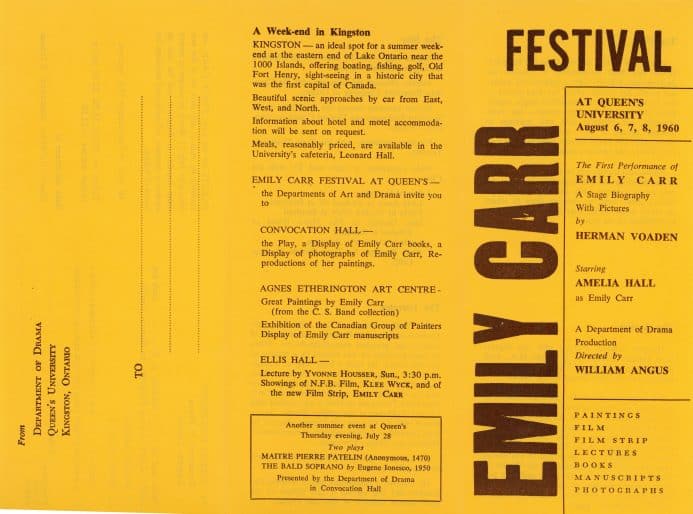
Flyer, Emily Carr Festival, 1960
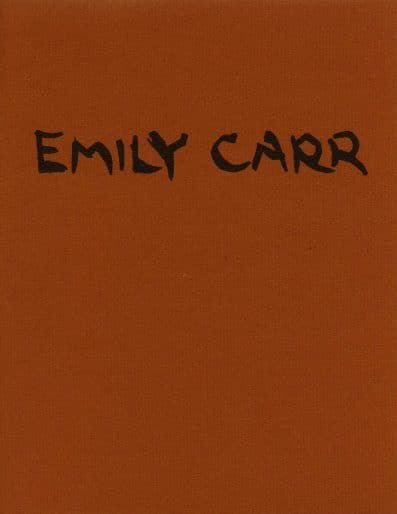
Invitation, Members’ preview of Carr acquisitions, 1983

Emily Carr, Young and Old Trees, 1935, oil on paper. Gift of Dr. Max Stern in honour of Frances K. Smith, Curator Emeritus, 1983 (26-026)

Flyer, Emily Carr Festival, 1960
The Agnes makes its first purchase of an Inuit print, Natsivaar’s Angels in the Moon (1960), from a display of the second Cape Dorset Annual Print Collection, courtesy of the Arts and Crafts Shop (Domus), Kingston. Concurrently, Paintings, Drawings and Prints by Tony Urquhart is the first solo exhibition of a Canadian artist at the gallery. Prior to its Kingston opening, the exhibition tours through the Queen’s Art Circuit, initiated by the Agnes to facilitate the circulation of exhibitions in Southern Ontario.
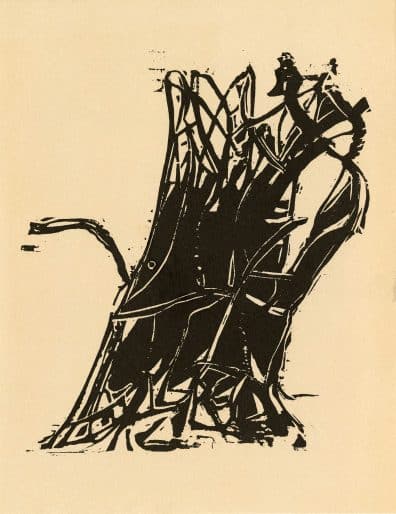
Exhibition brochure, Paintings, Drawings and Prints by Tony Urquhart, 1960

Natsivaar, Angels in the Moon, 1960, stonecut on paper. Purchase, George Taylor Richardson Memorial Fund, 1961 (04-001)

Exhibition brochure, Paintings, Drawings and Prints by Tony Urquhart, 1960

Natsivaar, Angels in the Moon, 1960, stonecut on paper. Purchase, George Taylor Richardson Memorial Fund, 1961 (04-001)
The Agnes undertakes its first expansion, funded by Queen’s University and the Canada Council for the Arts. With André Biéler’s input, the architectural firm Mackenzie, Marshall and Merrett designs a new exhibition gallery, sculpture terrace and studio space. The main entrance moves to the south side, off Queen’s Crescent (today Bader Lane). The Festival of Art and Music and an exhibition of British art, Constable to Bacon, mark the occasion. Queen’s Department of Art—including art history and studio classes—continues to be located at the Agnes until the late 1960s.
At the end of the year, Queen’s alumnus Samuel Zacks and his wife Ayala donate ninety works of art, primarily contemporary Canadian, the largest gift to the collection to date.

Jack Bush, Spot on Red, 1960, oil on canvas. Gift of Ayala and Samuel Zacks, 1962 (05-025)

Main entrance, from 1962 to 1978

Sculpture terrace, approaching Etherington House, 1962
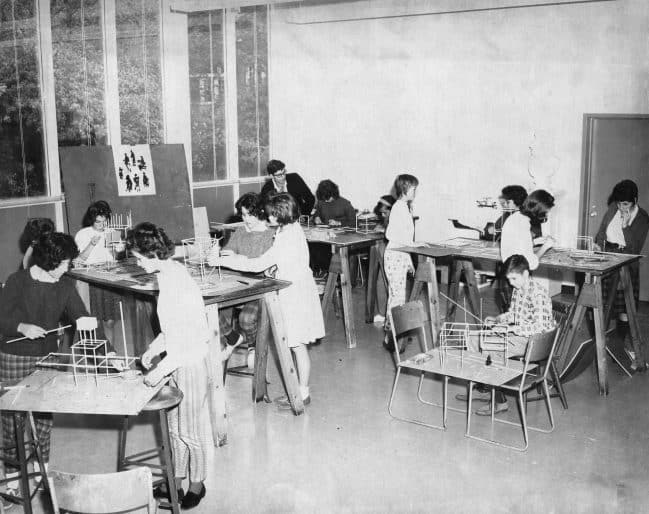
Saturday morning teen art class in the Studio, 1962
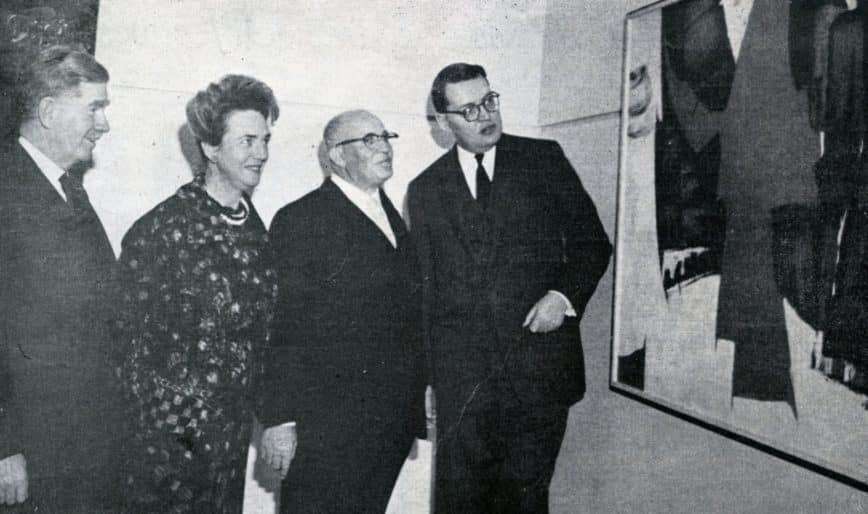
Official presentation of the Zacks gift, 1963. James Corry, Principal of Queen’s University, Ayala and Samuel Zacks, and Evan Turner, Director of the Montreal Museum of Fine Arts, with Jock Macdonald’s Clarion Call (1953). Photo: Kingston Whig-Standard, 7 January 1963

Jack Bush, Spot on Red, 1960, oil on canvas. Gift of Ayala and Samuel Zacks, 1962 (05-025)

Main entrance, from 1962 to 1978
André Biéler’s retirement as founding director is marked by a retrospective exhibition with works from the Agnes collection, other public galleries and private collectors. Quoting the poet John Keats, Queen’s principal James Corry writes in the catalogue, “It is a fitting climax that these splendid new galleries in the Art Centre should ‘hold like rich garners the full ripen’d grain.’”
Subsequent directors of the Agnes are Ralph Allen (1963–1973), Michael Bell (1973–1978), Robert Swain (1978–1990), David McTavish (1991–2001), Janet M. Brooke (2002–2012) and Jan Allen (2014–present).

Jan Allen, Director, 2016
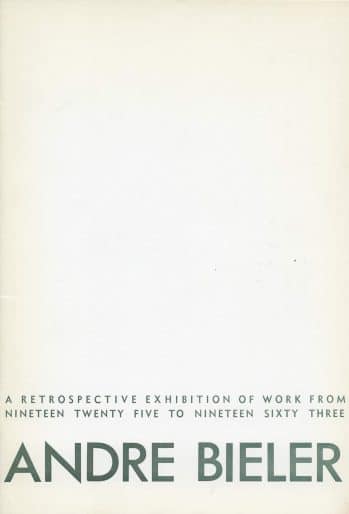
André Biéler: A Retrospective Exhibition of Work from Nineteen Twenty Five to Nineteen Sixty Three, 1963

Ralph Allen, André Biéler, Robert Swain and Michael Bell, Directors, with Frances K. Smith, Curator Emeritus, 1982. Photo: Lisa Lowry
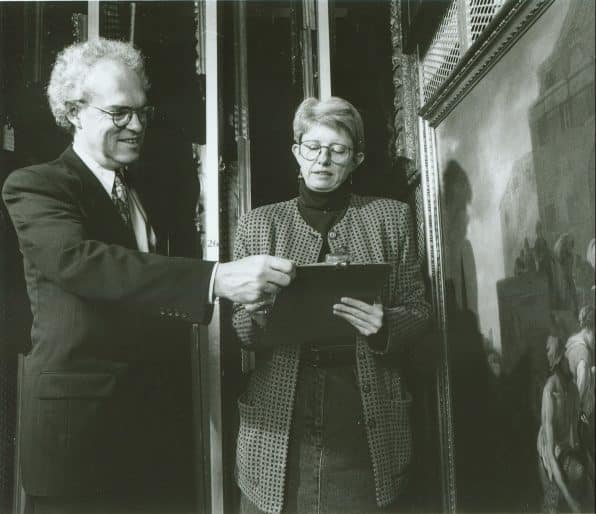
David McTavish, Director, and Dorothy Farr, Curator and Associate Director, 1990s
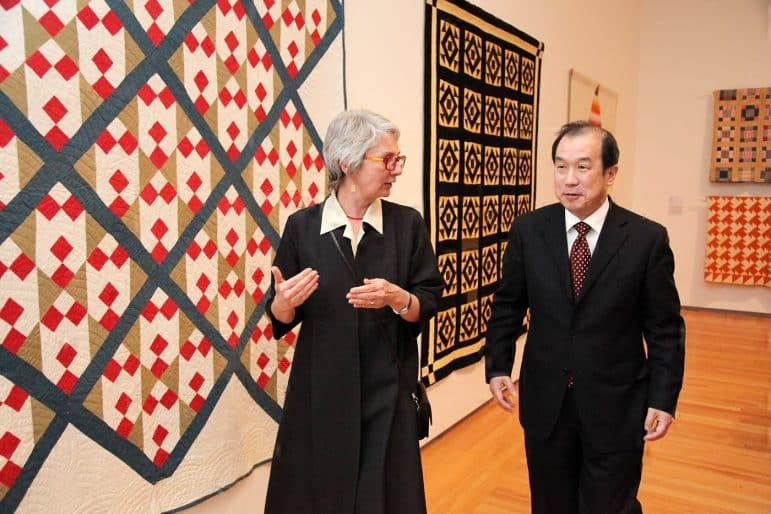
Janet Brooke, Director, with His Excellency Zhang Junsai, Ambassador of the People’s Republic of China to Canada, 2011

Jan Allen, Director, 2016

André Biéler: A Retrospective Exhibition of Work from Nineteen Twenty Five to Nineteen Sixty Three, 1963
Early Canadian Dress is the first public display of Kingston family heirlooms from the Museum Collection of Dress (today the Queen’s University Collection of Canadian Dress), selected by its founder and curator Margaret Angus. Having originated as costume donations for Queen’s drama productions, the collection is placed under the care of the Agnes in the mid-1980s, and moves to the gallery’s premises in 2000 when new storage facilities are made possible through the generous support of Dr. Isabel Bader.
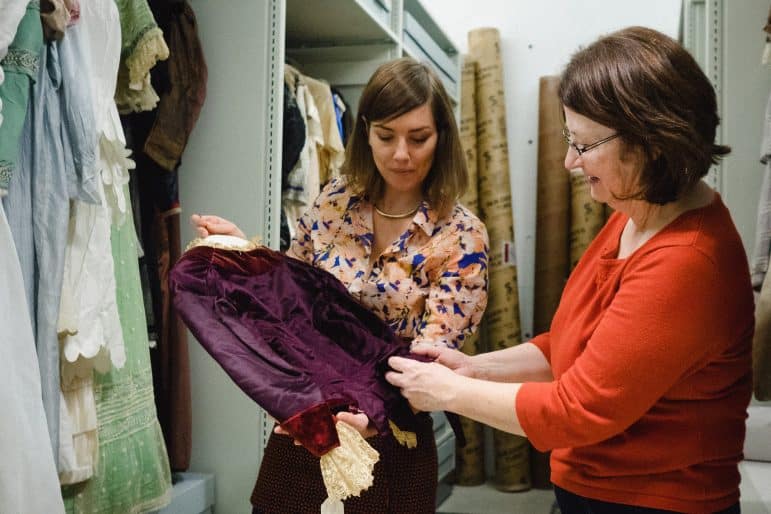
Emma Neale and Elaine MacKay, Isabel Bader Graduate Intern and Fellow in Textile Conservation and Research, with the Queen’s University Collection of Canadian Dress, 2015
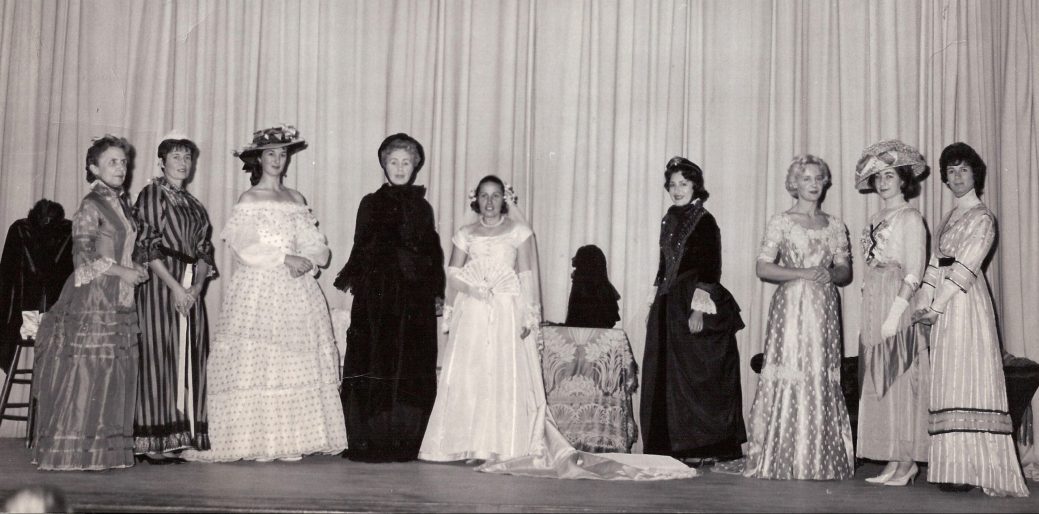
Presentation of Queen’s University Collection of Canadian Dress, after 1963. Margaret Angus, far left

Unknown maker, Carriage Dress, 1885, silk velvet and taffeta. Gift of Mrs. W. R. P. Bridger, 1962 (C62-552.2). Photo: Paul Litherland
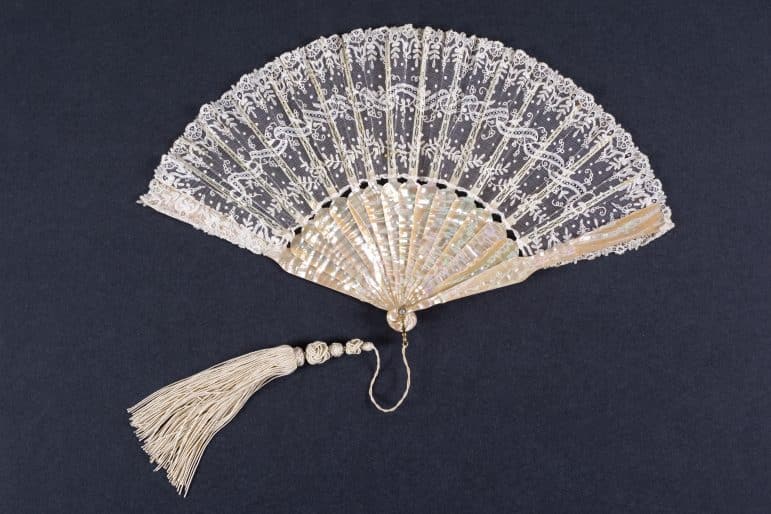
Tiffany and Co., New York, Fan, around 1867, lace and mother of pearl. Gift of Alison (Mrs. William) Tett, 2008 (C08-003.01)

Emma Neale and Elaine MacKay, Isabel Bader Graduate Intern and Fellow in Textile Conservation and Research, with the Queen’s University Collection of Canadian Dress, 2015

Presentation of Queen’s University Collection of Canadian Dress, after 1963. Margaret Angus, far left
The Gallery Association (GA) is formed in September “to develop an expanded program of art activities in cooperation with the Art Centre and to provide valuable auxiliary services.” Active for almost fifty years, the GA is a vibrant organization with various committees, responsible for the art rental program, guide service, school groups, film program, bus tours, public lectures, special events, and other activities. Funds are raised to support art purchases and other gallery activities. In 2014, the Agnes introduces a direct membership structure and renewed framework for community volunteers.
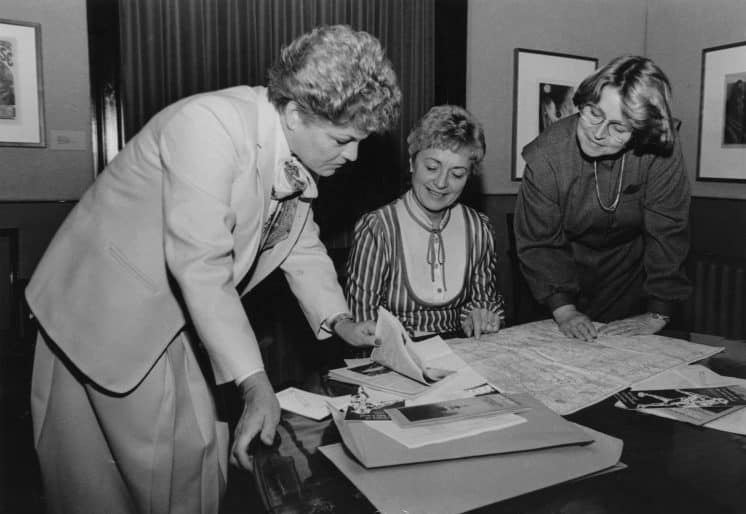
Jeanne Wigle, Jean Dyszuk and Betty Clark, Gallery Association tour committee, 1984
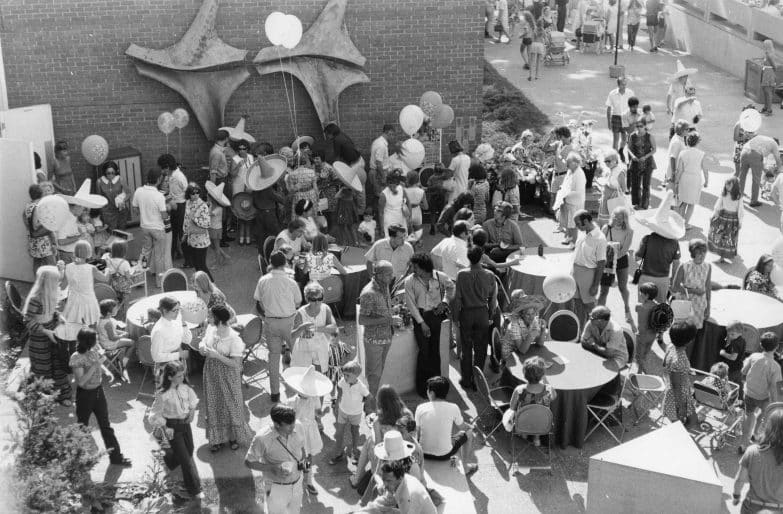
Mexican Fiesta, organized by the Gallery Association for the opening of André Biéler: Fifty Years, 1971
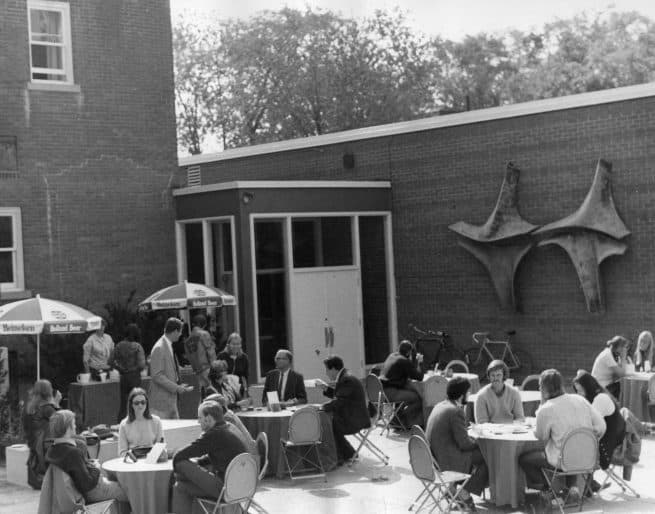
Gallery Association Café, organized by Clair Still, during Queen’s orientation week, 1972

Jeanne Wigle, Jean Dyszuk and Betty Clark, Gallery Association tour committee, 1984

Mexican Fiesta, organized by the Gallery Association for the opening of André Biéler: Fifty Years, 1971
Jean Dallaire’s Still Life (1963) and William Kurelek’s Lest We Repent (1964) are among purchases made through the George Taylor Richardson Memorial Fund. The fund arose from Agnes Etherington’s savvy stewardship of funds bequeathed to her for the stimulation of art at Queen’s, by her brother George Richardson upon his death in World War I. Transferred to the university in 1955, the fund becomes a key resource for acquisitions, exhibitions and programs—with an emphasis on the latter two activities in recent years—from which the Agnes has benefitted since 1958.

William Kurelek, Lest We Repent, 1964, oil on board. Purchase, George Taylor Richardson Memorial Fund, 1996 (09-006). Photo: Bernard Clark

Jean Dallaire, Still Life, 1963, oil on canvas. Purchase, George Taylor Richardson Memorial Fund, 1966 (09-005)

William Kurelek, Lest We Repent, 1964, oil on board. Purchase, George Taylor Richardson Memorial Fund, 1996 (09-006). Photo: Bernard Clark

Jean Dallaire, Still Life, 1963, oil on canvas. Purchase, George Taylor Richardson Memorial Fund, 1966 (09-005)
In Canada’s centennial year, Queen’s University alumnus Dr. Alfred Bader donates Girolamo da Santacroce’s Salvator Mundi (1520s), the first of his many significant gifts of art. This gift, a painting, is prompted by a request from Professor Gerald Finley in the Department of Art History to loan a work of art for an exhibition of Renaissance prints and drawings. The show, which is held in conjunction with a university-wide seminar on the Renaissance, corresponds beautifully with Dr. Bader’s desire that Queen’s students and faculty have access to great works of European art.

Girolamo da Santracroce, Salvator Mundi, after 1556, oil on canvas. Gift of Dr. and Mrs. Alfred Bader, 1967 (10-011)

Girolamo da Santracroce, Salvator Mundi, after 1556, oil on canvas. Gift of Dr. and Mrs. Alfred Bader, 1967 (10-011)

Girolamo da Santracroce, Salvator Mundi, after 1556, oil on canvas. Gift of Dr. and Mrs. Alfred Bader, 1967 (10-011)
The Agnes publishes The Permanent Collection of Paintings, Sculpture and Drawings catalogue, meticulously compiled and researched by Frances K. Smith. With 300 illustrations, the publication reveals a growing collection. As of 2017, the collection numbers over 17,000 works with strengths in contemporary art, Indigenous art, Canadian historical art including dress and decorative arts of the region, 17th-century Dutch and Flemish painting, and historical art of Central and West Africa.
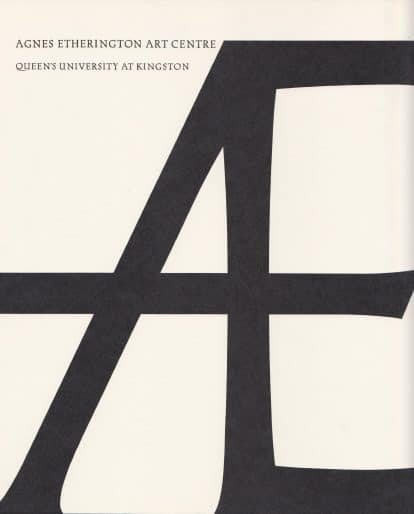
Frances K. Smith, Permanent Collection of Paintings, Drawing and Sculpture, 1968

Frances K. Smith, Permanent Collection of Paintings, Drawing and Sculpture, 1968

Frances K. Smith, Permanent Collection of Paintings, Drawing and Sculpture, 1968
The exhibition British Domestic Silver features exquisite 17th- to 19th-century pieces from the collection of brothers Drs. Stuart W. and J. F. Houston, donated in 1967. The Houston gift launches the Agnes’s silver collection, later augmented by the domestic silver of prominent Kingston and Eastern Ontario families: the Macaulays and Kirbys, the Etheringtons and Richardsons, and the Mathesons.
The Agnes’s activities are aided this year by their first Canada Council grant. In previous years, the George Taylor Richardson Fund and university operating funds were the primary sources for exhibition and programming costs.
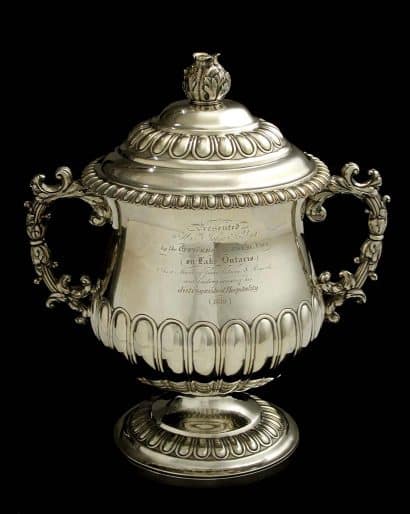
Samuel Hennel, Presentation Cup, 1815, silver. Macaulay Silver Collection, gift of Charlotte Abbott, 1986 (S86-001)
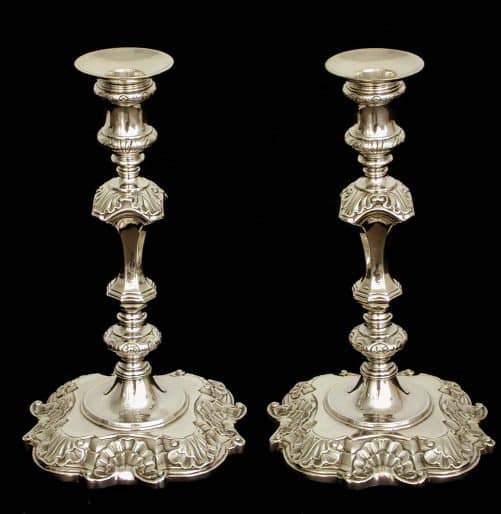
George Wickes, Candlesticks, 1742, silver. Gift of Dr. Stuart W. Houston in commemoration of Centennial, 1967 (S67-014.01)

Unknown British maker, Cup, 1685, silver. Gift of Dr. Stuart W. Houston in commemoration of Centennial, 1967 (S67-003)

Samuel Hennel, Presentation Cup, 1815, silver. Macaulay Silver Collection, gift of Charlotte Abbott, 1986 (S86-001)

George Wickes, Candlesticks, 1742, silver. Gift of Dr. Stuart W. Houston in commemoration of Centennial, 1967 (S67-014.01)
After the Agnes’s founding, many historical Indigenous objects originally housed in the Miller Museum and elsewhere on Queen’s campus are transferred to the gallery’s collection. In the late 1960s and early 1970s, documentation and research of these objects begin in earnest by Frances K. Smith and part-time researcher Jill A. Willmott. Included among these are remarkable historical objects from Nunavik, British Columbia and Northwest Territories donated to Queen’s by Hudson’s Bay Company trader, The Honourable Robert Hamilton, in the 1870s; and the Constantine Collection of Yup’ik, Iñupiaq and Athabascan objects acquired by Agnes Etherington for Queen’s in 1929.
Willmott curates the first exhibition drawn from this transferred collection, The Art of Smoking in Aboriginal North America.

Unknown Iñupiaq Artist, Alaska, Pipe, collected 1895–1898, ivory and pigment. The Constantine Collection, gift of Agnes Etherington, 1929 (M69-023). Photo: Bernard Clark
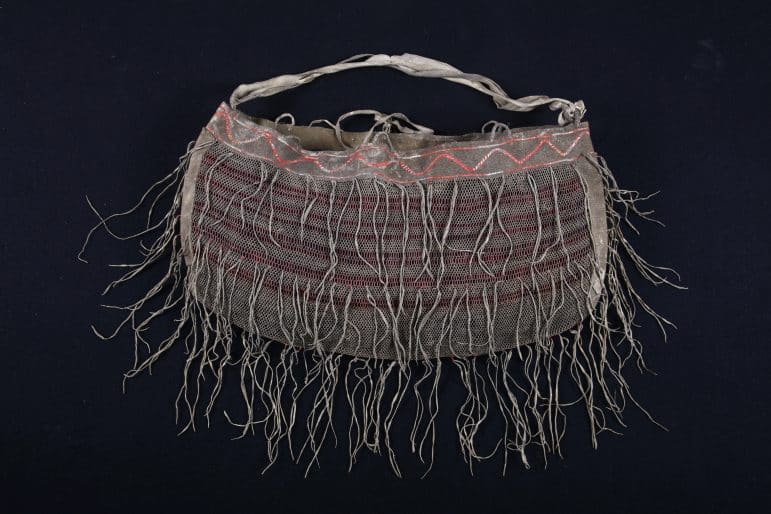
Unknown K?asho Got?ine (Hare) Artist, Lower Mackenzie River area, Northwest Territories, Babiche Bag, late 19th century, Rawhide, porcupine quill and dye. Gift of Hon. Robert Hamilton, 1873–1874 (M78-085). Photo: Bernard Clark

Unknown Iñupiaq Artist, Alaska, Pipe, collected 1895–1898, ivory and pigment. The Constantine Collection, gift of Agnes Etherington, 1929 (M69-023). Photo: Bernard Clark

Unknown K?asho Got?ine (Hare) Artist, Lower Mackenzie River area, Northwest Territories, Babiche Bag, late 19th century, Rawhide, porcupine quill and dye. Gift of Hon. Robert Hamilton, 1873–1874 (M78-085). Photo: Bernard Clark
The exhibition Gift from the Douglas M. Duncan Collection and the Milne-Duncan Bequest travels to the Agnes. This show features works from the National Gallery of Canada, part of the dispersal of the major Toronto art dealer’s estate to forty-five galleries and universities nationwide. The Agnes receives sixty works from the Duncan estate for the collection, augmenting its historical Canadian holdings.
In its early years, the Agnes primarily presents exhibitions circulated by other art institutions or organized by local or university groups. By the 1970s, exhibitions are increasingly originated by gallery staff.

Frances K. Smith, “Douglas Duncan: Art Patron and Benefactor,” Queen’s Alumni Review, March–April 1971
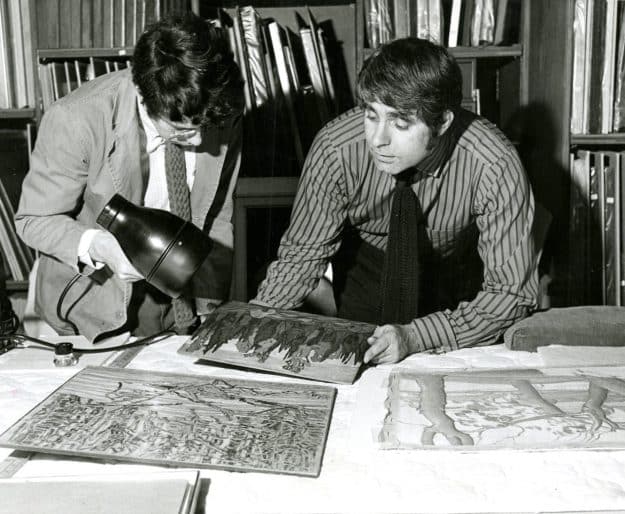
Ralph Allen, Director, and Bill Muyssen, Assistant Curator, examining gifts from the estate of Douglas Duncan, 1971
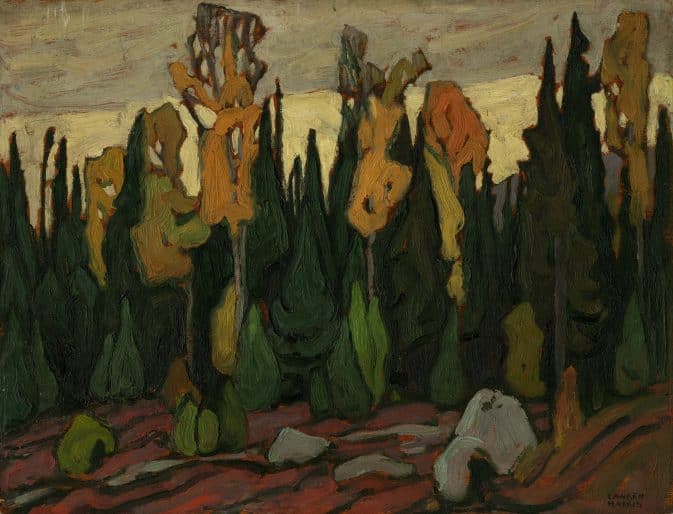
Lawren Harris, Landscape, undated, oil on wood. Gift from the Douglas M. Duncan Collection, 1970 (13-066)
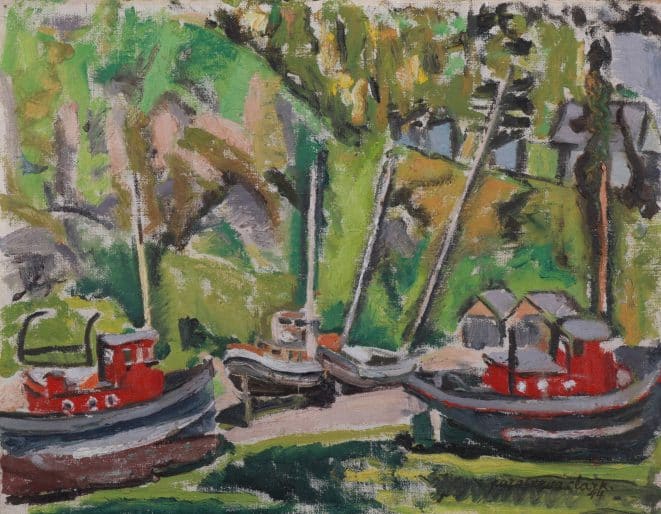
Paraskeva Clark, Sketch for Tadoussac, Boats in Dry Dock, 1944, oil on canvas. Gift from the Douglas M. Duncan Collection, 1970 (13-049). Photo: Bernard Clark

Frances K. Smith, “Douglas Duncan: Art Patron and Benefactor,” Queen’s Alumni Review, March–April 1971

Ralph Allen, Director, and Bill Muyssen, Assistant Curator, examining gifts from the estate of Douglas Duncan, 1971
As part of the Agnes’s diverse programs, an exhibition of twenty-four scroll paintings by Ma Shiu-Yu and Cho Kuen-Kuen is organized in co-operation with the Chinese Club of Queen’s University and sponsored by the Chinese Student Union of Canada. During the exhibition, the Chinese Club also hosts China Night in nearby Grant Hall. The Agnes previously collaborated with the Chinese Club in 1965 to present an exhibition and painting demonstration by noted artist Kung Fu Ng.
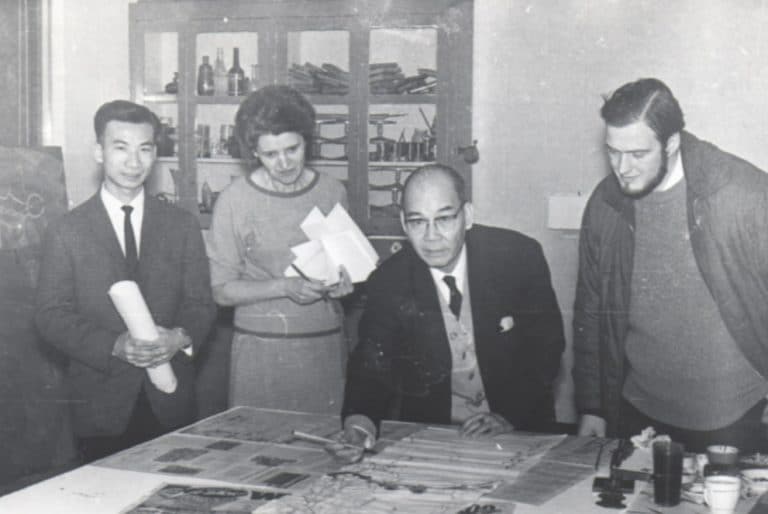
Painting demonstration by Kung Fu Ng, artist, 1965
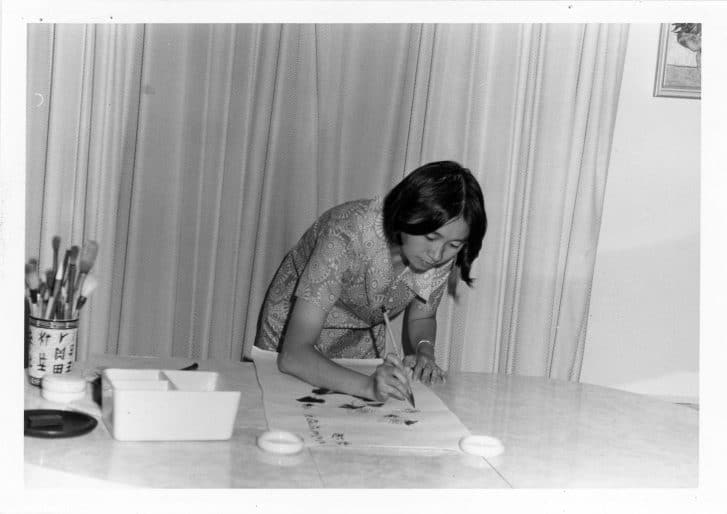
Painting demonstration by Cho Kuen-Kuen, artist, around 1972

Painting demonstration by Kung Fu Ng, artist, 1965

Painting demonstration by Cho Kuen-Kuen, artist, around 1972
A tribute to Kingston’s tercentenary, the monumental exhibition Heritage Kingston brings together over 260 historical and artistic objects, reflecting on the city’s past, with a comprehensive publication by Art History Professor J. Douglas Stewart and University Archivist Ian E. Wilson. The exhibition is installed as a complex series of mini-galleries, featuring maps, archeological artefacts, watercolour landscapes, painted portraits, architectural drawings, photographs and historical objects from private and public collections, as well as period rooms designed by local architectural historian Jennifer McKendry.
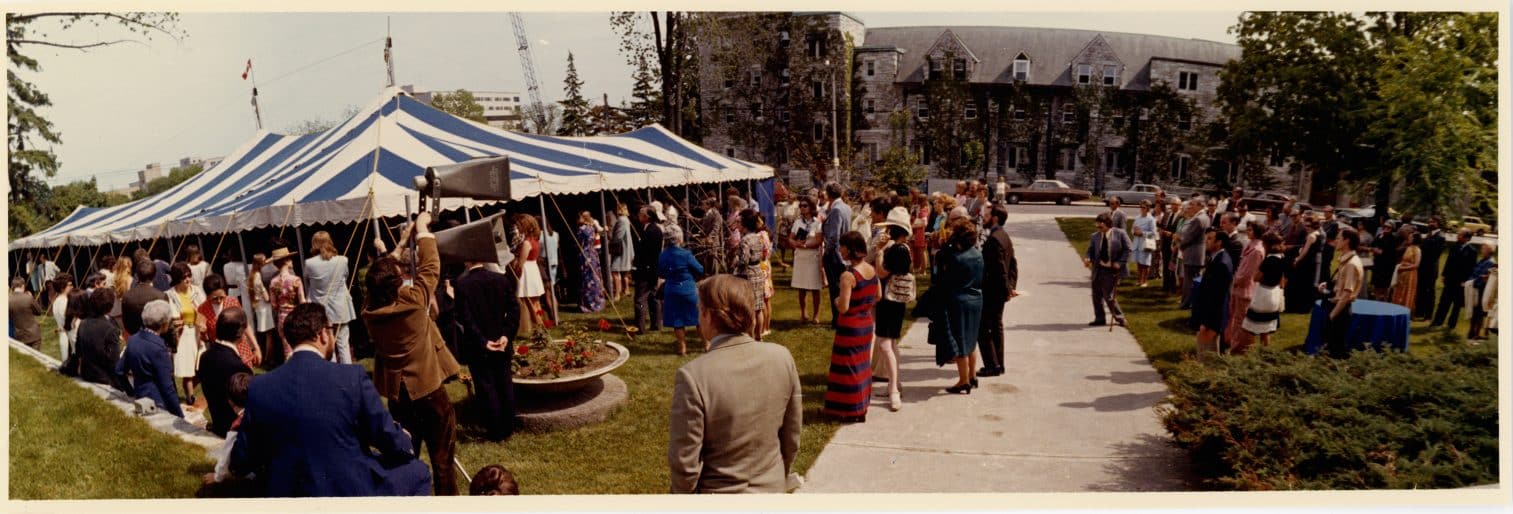
Opening of Heritage Kingston by the Honourable Hugh Faulkner, Secretary of State, 1973

J. Douglas Stewart and Ian E. Wilson, Heritage Kingston, 1973

Jennifer McKendry, designer of the period rooms, Heritage Kingston, 1973
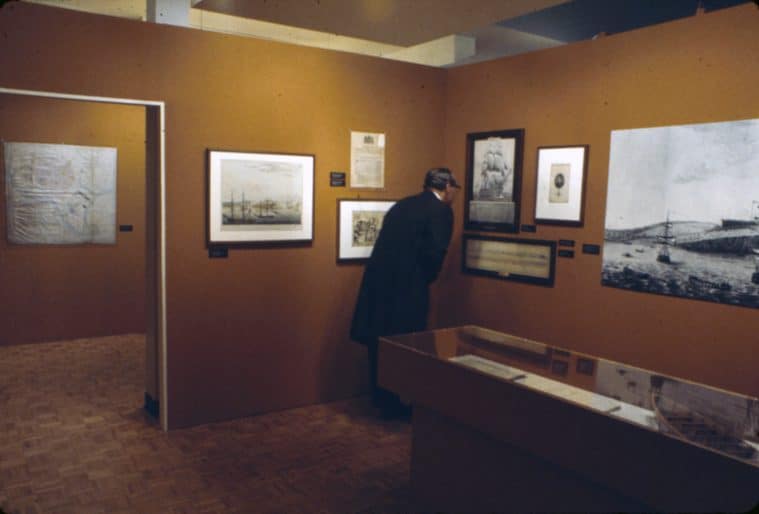
Installation view, Heritage Kingston, 1973

Opening of Heritage Kingston by the Honourable Hugh Faulkner, Secretary of State, 1973

J. Douglas Stewart and Ian E. Wilson, Heritage Kingston, 1973
Tradition+1: Patchwork Quilts from South Eastern Ontario, curated by artist Kim Ondaatje, launches a highly successful two-year tour across the country, accompanied by a catalogue and a film. The quilts are primarily made of new materials to withstand the rigours of travel. As part of the project, Ondaatje also commissioned two Jet quilts based on her own patterns, using a 20th-century symbol. The exhibition is at the forefront of renewed interest in quilts, not only as traditional craft, but also as women’s work and works of art.

Kim Ondaatje with her Jet quilt, 1979. Photo: Tim Swanky, Ottawa Citizen
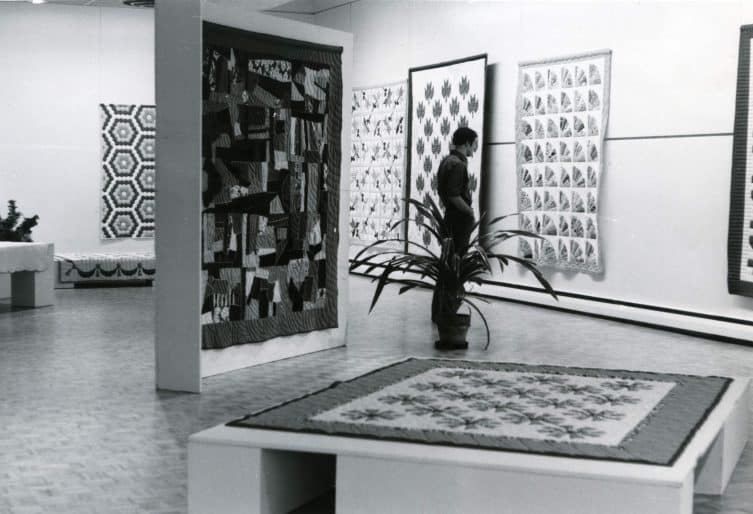
Installation view, Tradition +1, 1971

Kim Ondaatje and Margaret MacLean, Jet, 1974, cotton quilt. Gift of Kim Ondaatje, 1976 (19-081)

Kim Ondaatje with her Jet quilt, 1979. Photo: Tim Swanky, Ottawa Citizen

Installation view, Tradition +1, 1971
From Women’s Eyes: Women Painters in Canada, organized by the Agnes for International Women’s Year, is the first thematic exhibition to explore the work of Canadian historical women artists. Curated by Dorothy Farr and Natalie Luckyj, the exhibition and publication become landmarks in the field of Canadian art history, laying the foundation upon which feminist study continues to build. Farr later succeeds Frances K. Smith as the Agnes’s curator.
At the same time, the second facility extension of the Agnes formally opens, providing a new gallery and enlarged storage, as well as adjacent laboratory space for Queen’s new Master of Art Conservation program.
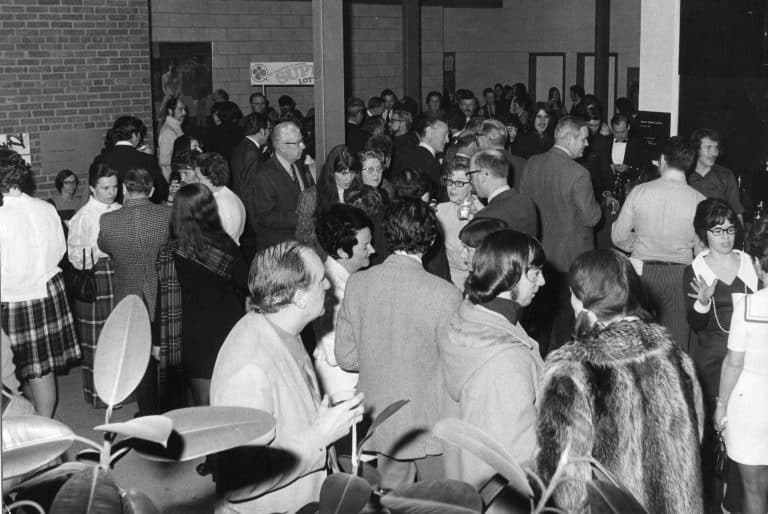
Opening, second building extension, 1975

Michael Bell, Director, Gabrielle Léger, wife of Governor General Jules Léger, and Natalie Luckyj and Dorothy Farr, curators of From Women’s Eyes, at the opening, 1975
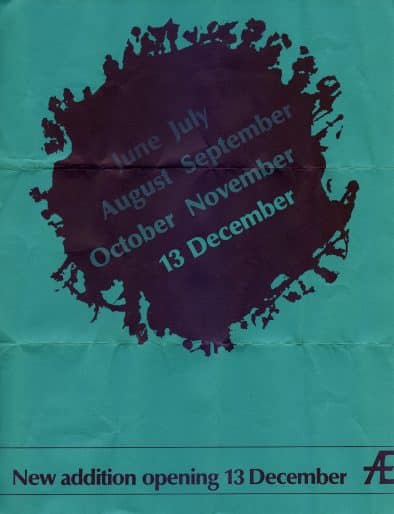
Flyer, announcing opening of second building extension, 1975
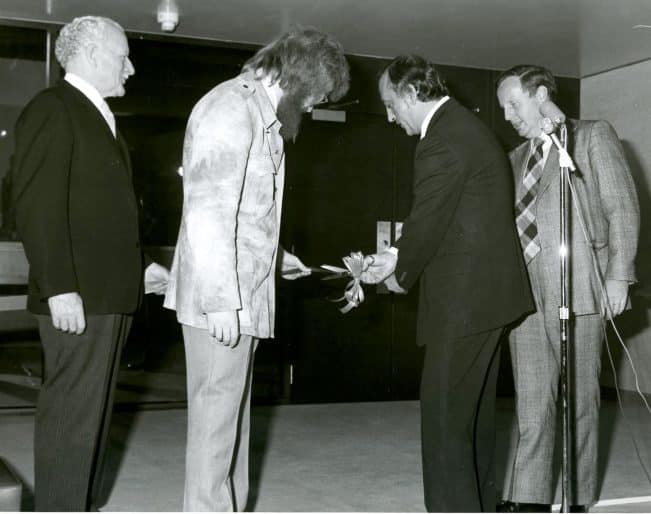
Ribbon cutting at opening of second building extension, with Chancellor Roland Michener and Michael Bell, Director, 1975

Opening, second building extension, 1975

Michael Bell, Director, Gabrielle Léger, wife of Governor General Jules Léger, and Natalie Luckyj and Dorothy Farr, curators of From Women’s Eyes, at the opening, 1975
At the forefront of contemporary art movements, the Agnes presents Celebration of the Body in the summer. Curated by conceptual art collective N. E. Thing Co. Ltd., the exhibition comprises installations, art performances and film screenings, demonstrating the place of the body in athletics and visual arts, along with a significant publication. Celebration of the Body is part of the cultural arm of the Summer Olympics, funded through special allocation along with other arts initiatives in Kingston, where the sailing competitions are held.
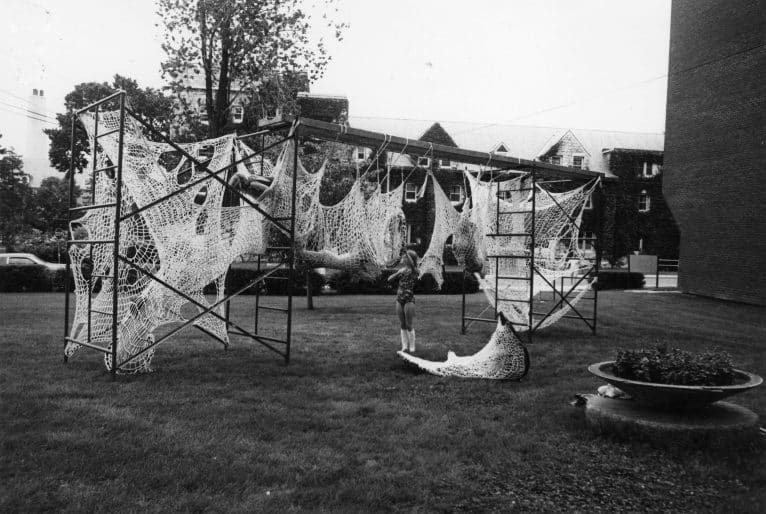
Celebration of the Body, on the grounds of the Agnes, 1976

Installation view, Celebration of the Body, 1976
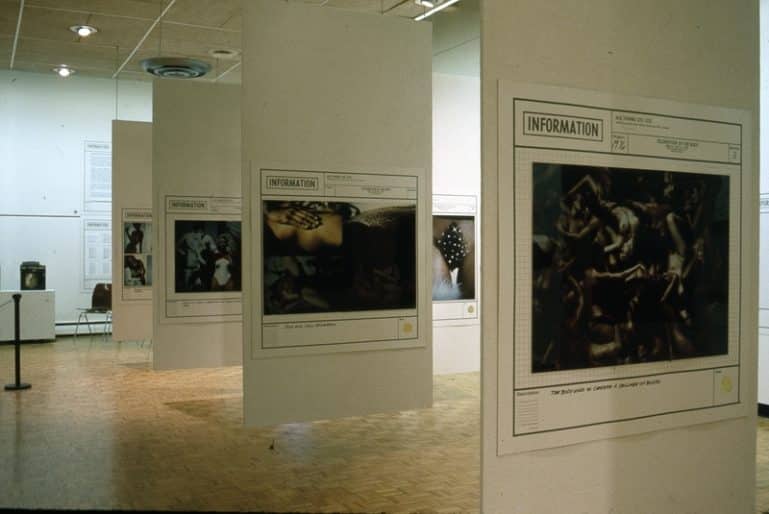
Installation view, Celebration of the Body, 1976
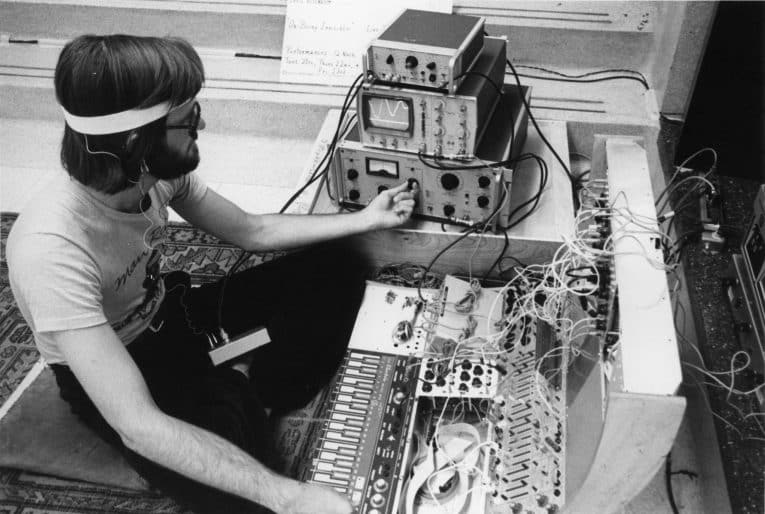
Performance, Celebration of the Body, 1976

Celebration of the Body, on the grounds of the Agnes, 1976

Installation view, Celebration of the Body, 1976
The 1970s witnesses an explosion of outdoor contemporary sculpture on campus and in the city, as public art worldwide moves beyond decorative and commemorative function. To aid in understanding this new phenomenon, the Agnes publishes Looking at Sculpture with a map locating outdoor sculptures in Kingston. The guide includes four works chosen as favourites by Agnes visitors the previous year, from a continuous slide show of twenty submissions, as part of Vote for Sculpture: Kingston Sculpture Symposium. The following year, the Agnes moves outside the gallery to mount the exhibition Sculpture Out of Doors. Another public art guide, Outdoor Sculpture at Queen’s, is produced in 2002.

Brochure, Outdoor Sculpture at Queen’s, 2002

Brochure, Looking at Sculpture, 1977

Installation in progress, Gregory Snider, Strongbow (1978), in Sculpture out of Doors, 1978
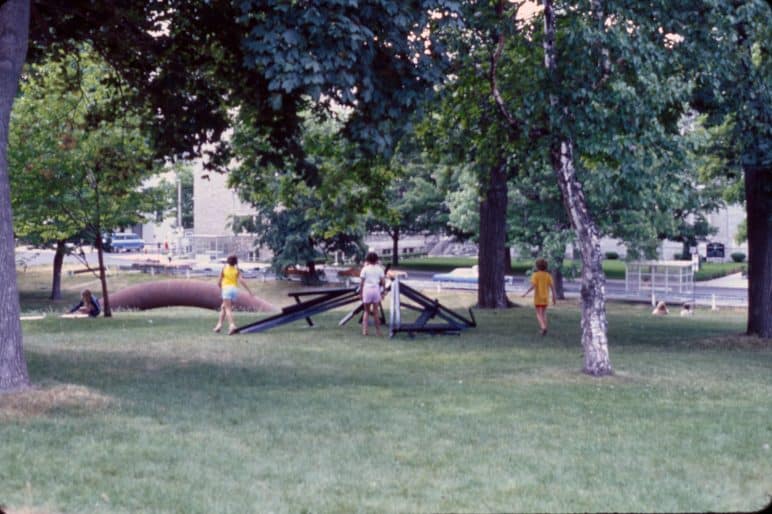
Installation view, Edward Zelenak, Untitled (undated) and David Pickering, Thicket (1978), in Sculpture out of Doors, 1978

Brochure, Sculpture Out of Doors, 1978

Brochure, Outdoor Sculpture at Queen’s, 2002

Brochure, Looking at Sculpture, 1977
Renovations result in a new public entrance on the north side of the building, among other security, fire and environmental control improvements, with the help of a Wintario grant. The new welcoming lobby improves access for large groups of school children. Upgraded track lighting also ensures safety of the artworks, a point of utmost importance to Acting Director Frances K. Smith. As renovations wrap-up, artist and arts instructor Christopher Broadhurst curates The Innocent Eye, artwork by children from the Kingston area, and Art from the Sunday Afternoon Workshop.
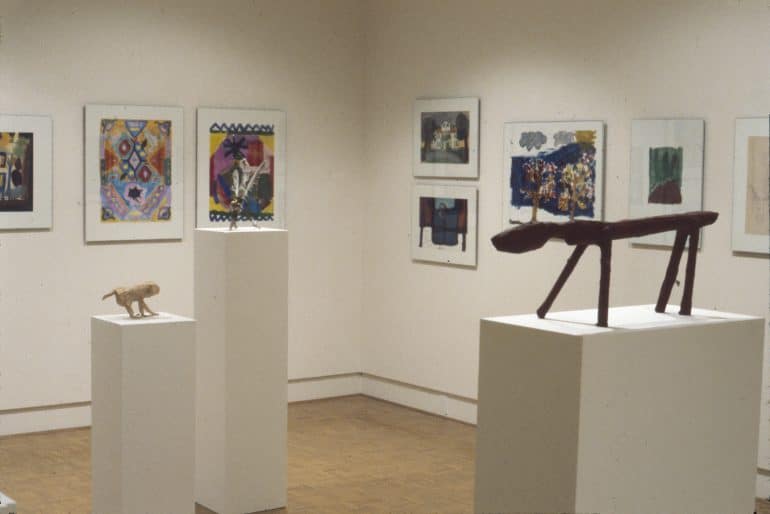
Installation view, The Innocent Eye, 1978

Main entrance, 1979

Installation view, The Innocent Eye, 1978

Main entrance, 1979
The Agnes launches two major touring exhibitions, William Brymner 1855–1925: A Retrospective and Inuit Art in the 1970’s, guest curated by Janet Braide and Marie Routledge respectively. These add to the Agnes’s growing roster of original, research-based exhibitions by in-house and guest curators, with publications that are firsts in the field of Canadian art. Other landmarks from this decade are catalogues on Horatio Walker (1977), William Sawyer (1978), George Heriot (1978), André Biéler (1980), Lilias Torrance Newton (1981), J.W. Beatty (1981), Maurice Cullen (1983), Canadian Artists in Venice (1984), John Lyman (1986), and Prudence Heward (1986).
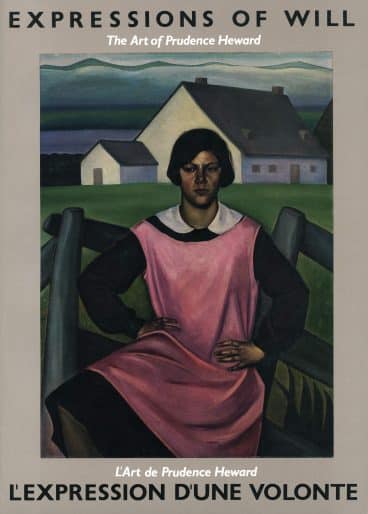
Natalie Luckyj, Expressions of Will: The Art of Prudence Heward, 1986
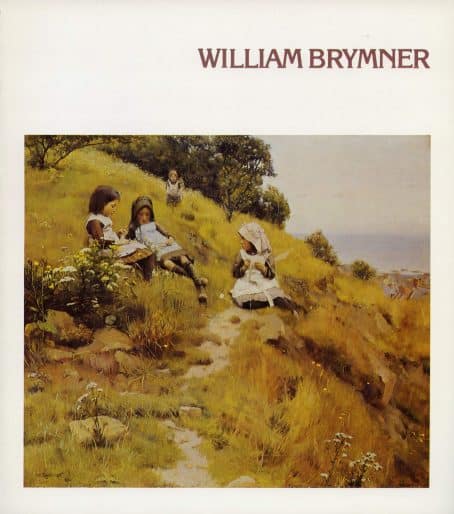
Janet Braide, William Brymner 1855–1925: A Retrospective, 1979

Installation view, Inuit Art in the 1970’s, 1979
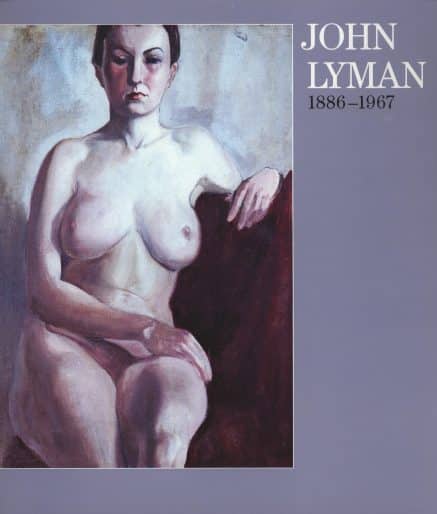
Louise Dompierre, John Lyman 1886–1967: I Live by My Eyes, 1986

Natalie Luckyj, Expressions of Will: The Art of Prudence Heward, 1986

Janet Braide, William Brymner 1855–1925: A Retrospective, 1979
To celebrate 100 years since founder Agnes Etherington’s birth, the gallery throws a Victorian Birthday Party. The event spills outdoors and is a celebration for all ages, with puppetry, parlour tunes, period costumes and three o’clock tea. A giant cake is made and decorated by artist Christopher Broadhurst.
The Agnes also begins recruiting Queen’s students and training them to deliver interactive school programs for regional children in grades 1 through 8. By 2017, the student docent program comprises some thirty docents, who welcome approximately seventy-five school groups to the gallery per year.
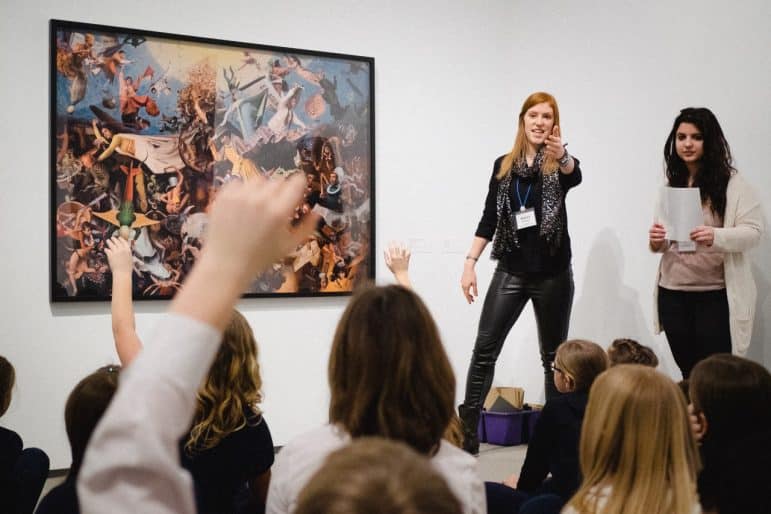
Student docents lead exhibition tour, 2016
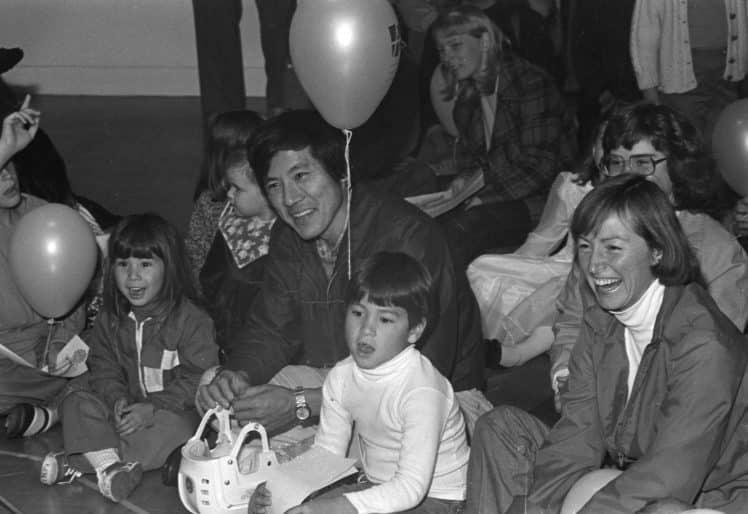
Nicole, Kanji, Blair and Susie Nakatsu, participants at A Victorian Birthday Party, 1980. Photo: David Barbour
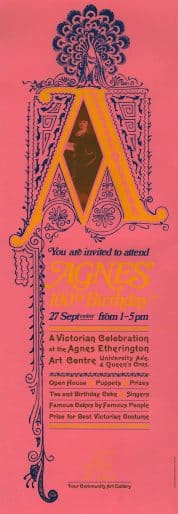
Poster, A Victorian Birthday Party, 1980

A Victorian Birthday Party cake, 1980. Photo: David Barbour

Jeri Harmsen, education officer, with student docents, 1995. Photo: Bernard Clark

Student docents lead exhibition tour, 2016

Nicole, Kanji, Blair and Susie Nakatsu, participants at A Victorian Birthday Party, 1980. Photo: David Barbour
The Heritage Quilt Collection is founded when three knowledgeable Kingston quilters—Margaret Rhodes, Diane Berry and Frances Crandall—approach Agnes director Robert Swain with a proposal to preserve quilts of historical, regional and aesthetic significance for future generations. The first catalogue is published in 1992, featuring forty-four purchases and gifts. By 2017, the Heritage Quilt Collection numbers over eighty-five stunning embroidered, stitched, pieced and appliquéd works spanning the 19th and 20th centuries.

Parthena Sweet and other quilters, Friendship Signature Chimney Sweep, detail, around 1865, cotton, cotton batting and ink. Gift of Helen Sweet, 2011 (Q11-001). Photo: Bernard Clark
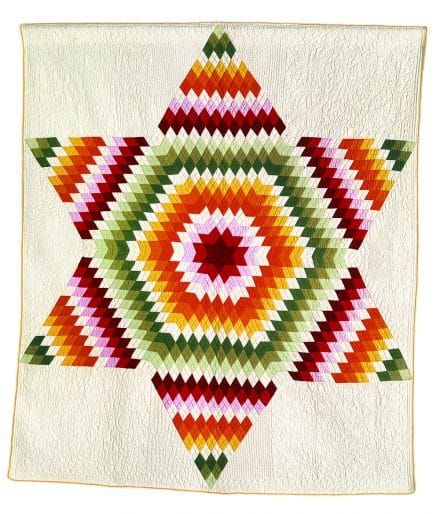
Betsy Adams Dodge, Star of Bethlehem, around 1875, cotton. Gift of Elsie Davidson in memory of her grandmother, Betsy Adams Dodge 1983 (Q83-020). Photo: Bernard Clark
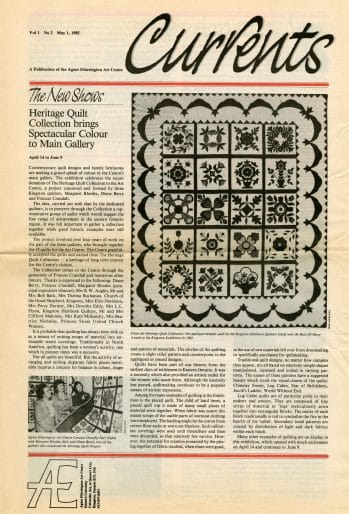
Currents, 1 May 1985
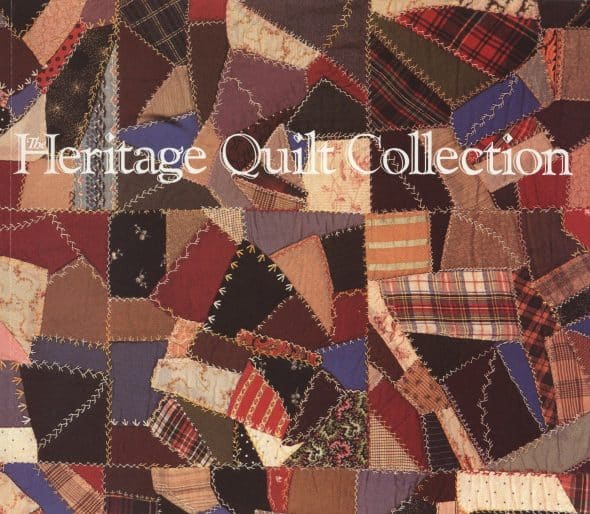
Dorothy Farr and Ruth McKendry, Heritage Quilt Collection, 1992
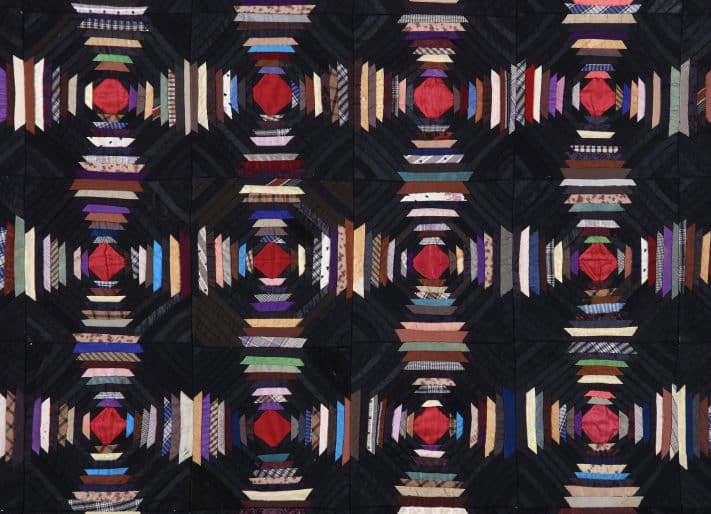
Unknown artist, Pineapple Log Cabin, detail, 1850, silk. Gift of Diane Berry, 1997 (Q97-002). Photo: Bernard Clark

Parthena Sweet and other quilters, Friendship Signature Chimney Sweep, detail, around 1865, cotton, cotton batting and ink. Gift of Helen Sweet, 2011 (Q11-001). Photo: Bernard Clark

Betsy Adams Dodge, Star of Bethlehem, around 1875, cotton. Gift of Elsie Davidson in memory of her grandmother, Betsy Adams Dodge 1983 (Q83-020). Photo: Bernard Clark
French Royal Academy of Painting and Sculpture Engraved Reception Pieces: 1672–1789, guest curated by Dr. W. McAllister Johnson, is mounted at the Agnes and travels to three provinces. It is the gallery’s first significant touring exhibition of European art, following upon the heels of Johnson’s successful 1976 French Lithography: The Restoration Salons 1817–1824.
Two years earlier, Johnson established the W. McAllister Johnson Fund for the acquisition of European prints. Other important endowments for works on paper follow, providing valuable assistance in advancing the collection: the J. Stuart Fleming Fund in 1986 and the Franks Fund in 2004.

Bernard Clark, When Darkness Falls, 2008, giclee print on paper, 1/5. Purchase, J. Stuart Fleming Fund, 2012 (55-003.02)
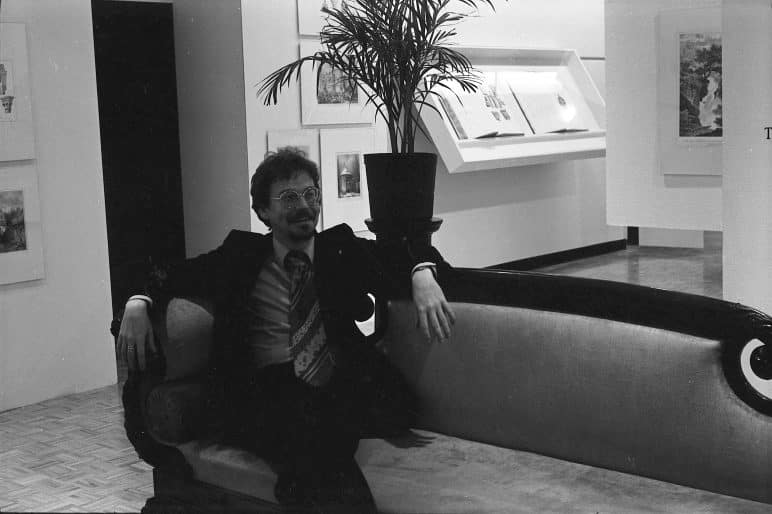
W. McAllister Johnson, in French Lithography: The Restoration Salons 1817–1824, 1976
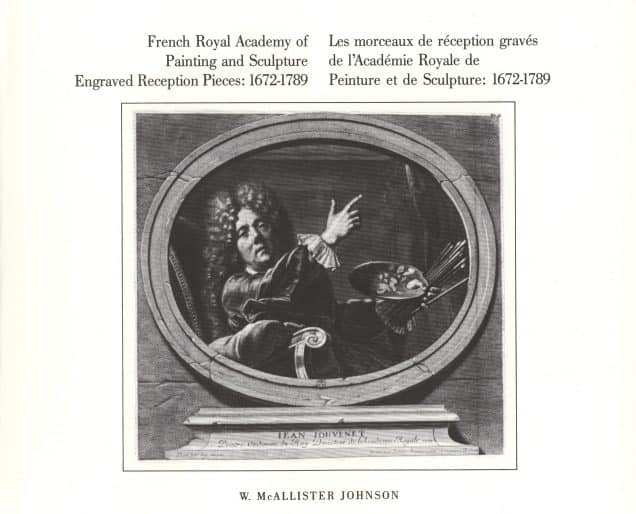
W. McAllister Johnson, French Royal Academy of Painting and Sculpture Engraved Reception Pieces: 1672–1789, 1982

James McArdell, Petit garcon à la toupie, 1756, engraving and mezzotint on paper. Purchase, George Taylor Richardson Memorial Fund and W. McAllister Johnson Fund, 1983 (26-006.02)
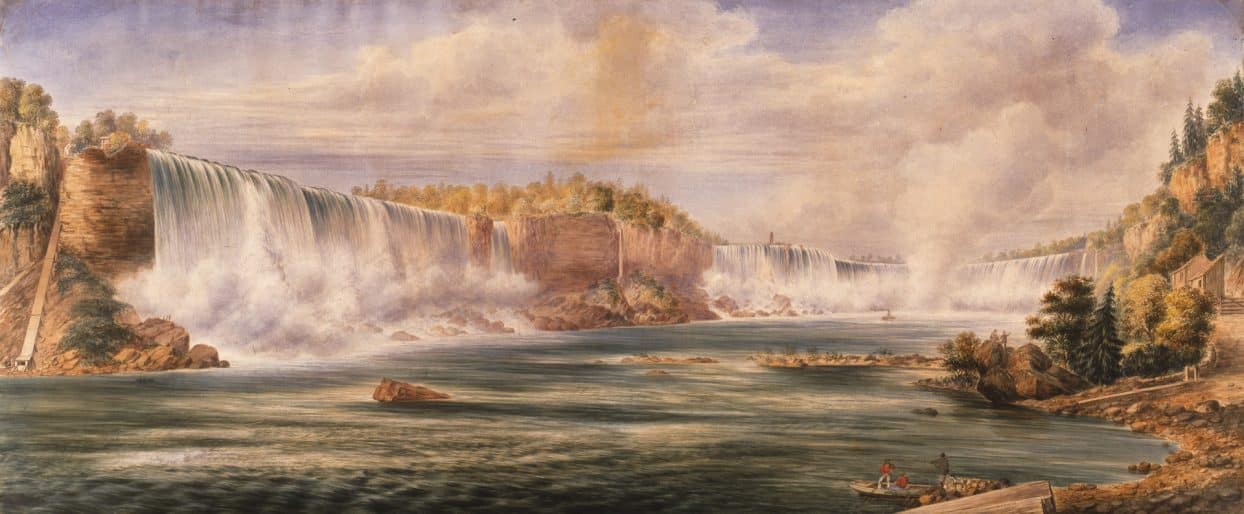
Washington Friend, View of Niagara Falls from above the Horseshoe falls from a view of the Niagara River and Gorge, watercolour on paper. Purchase, J. Stuart Fleming Fund, 1987 (30-090)

Bernard Clark, When Darkness Falls, 2008, giclee print on paper, 1/5. Purchase, J. Stuart Fleming Fund, 2012 (55-003.02)

W. McAllister Johnson, in French Lithography: The Restoration Salons 1817–1824, 1976
The Agnes celebrates its 25th anniversary with special events and exhibitions spanning 1982–1983. Something Borrowed is a loan exhibition of masterworks from art galleries across Canada, followed by Tribute to the Canada Council, featuring works from the Agnes’s collection acquired with Canada Council assistance (both the Agnes and the Council having been founded in 1957). There is also a lecture series delivered by past and present Agnes directors, a Silver Ball, a Special Unveiling and an Open House. Full-colour posters and postcards of permanent collection works are made available for purchase.
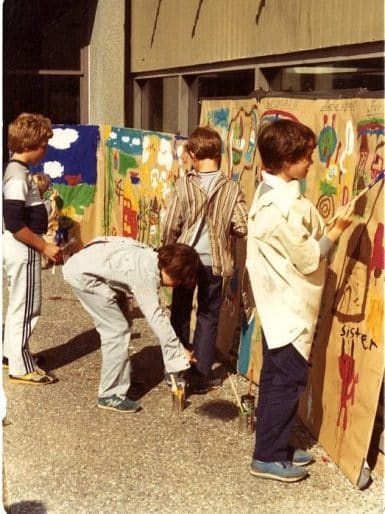
Mural painting, 25th Anniversary open house, 1983
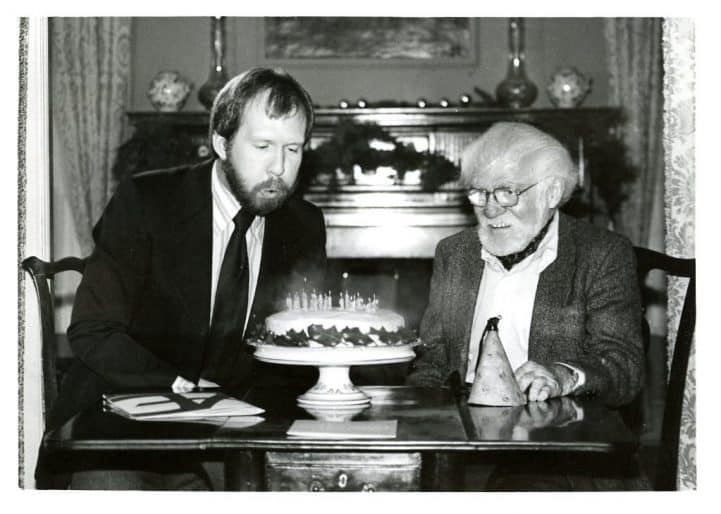
Robert Swain and André Biéler, 25th Anniversary holiday party, 1982
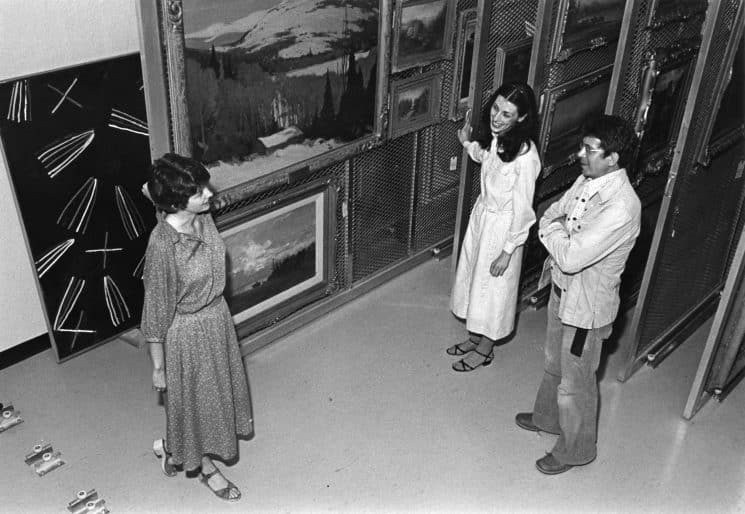
Dorothy Farr, Curator, Louise Dompierre, registrar, and Bill Muysson, Assistant Curator, in the vault, 1982. Photo: David Barbour
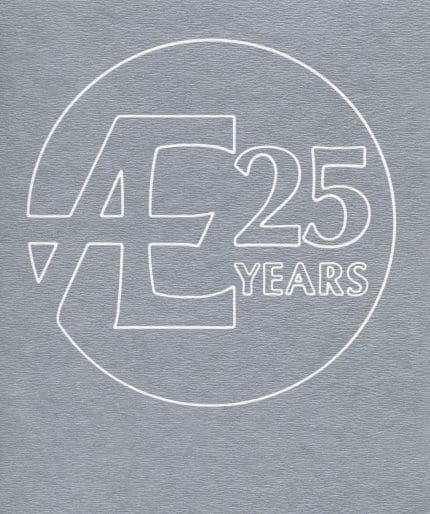
Invitation, Something Borrowed and 25th Anniversary, 1982

Mural painting, 25th Anniversary open house, 1983

Robert Swain and André Biéler, 25th Anniversary holiday party, 1982
Walking Woman Works: Michael Snow 1961–1967, curated by Louise Dompierre, is a major touring retrospective exhibition documenting the Walking Woman series by one of Canada’s most widely acclaimed contemporary artists. Snow is present for the opening of the exhibition and Pierre Théberge, then Chief Curator of the Montreal Museum of Fine Arts, delivers a special lecture on the evolution of the artist’s oeuvre. A three-night Michael Snow Film Festival is also screened in Ellis Hall, through the National Film Theatre—a group formed in the 1970s to make quality productions available to Queen’s Film Studies students.

Michael Snow, Little Blue Fold, 1964, painted foldage on print. Gift of Mrs. Ruth Soloway, 2012 (55-004.44). Photo: Bernard Clark

Louise Dompierre, Walking Woman Works: Michael Snow 1961–1967, 1984
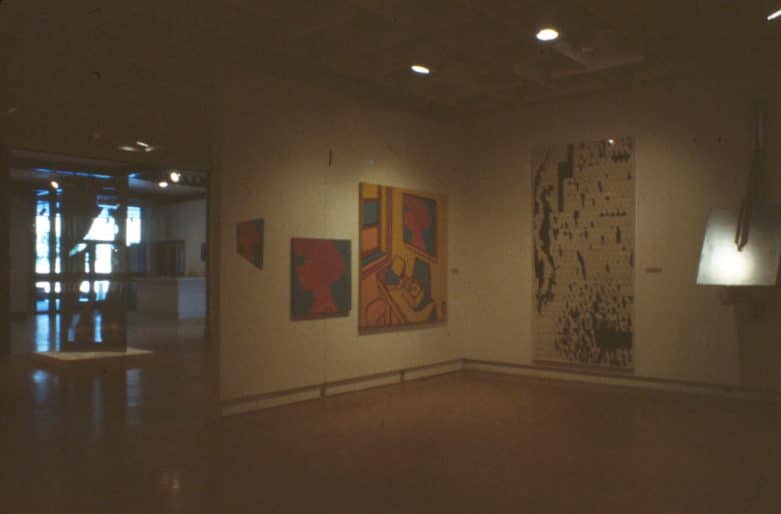
Installation view, Walking Woman Works: Michael Snow 1961–1967, 1984
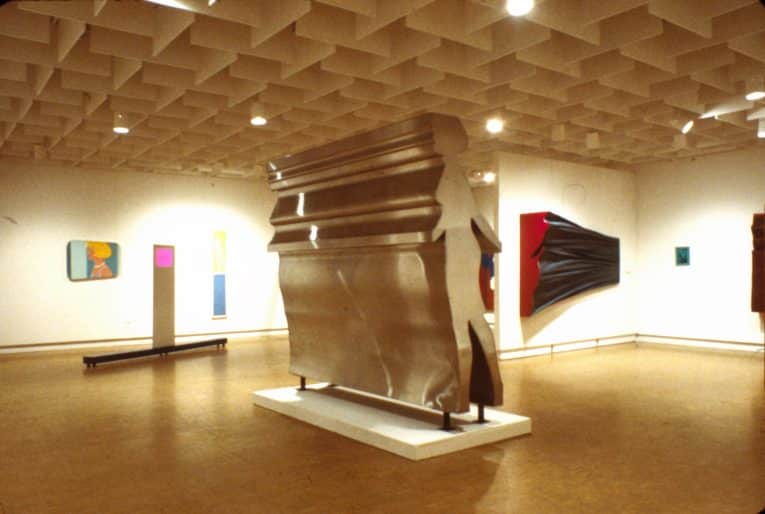
Installation view, Walking Woman Works: Michael Snow 1961–1967, 1984

Michael Snow, Little Blue Fold, 1964, painted foldage on print. Gift of Mrs. Ruth Soloway, 2012 (55-004.44). Photo: Bernard Clark

Louise Dompierre, Walking Woman Works: Michael Snow 1961–1967, 1984
Visions and Models, the inaugural exhibition of the Justin and Elisabeth Lang Collection of African Art, is accompanied by a major symposium on the art of Africa, with scholars Jacqueline Fry, Ruth Phillips, Zdenka Volavka and Roslyn Walker. The Langs’ gift, received the previous year, comprises over 500 objects—including statuary, masks and objects from ceremonial and domestic life—making the gallery a national centre for the study and exhibition of African art. The Justin and Elisabeth Lang Foundation Fund is created to enhance the intellectual equity and public profile of the Lang Collection.
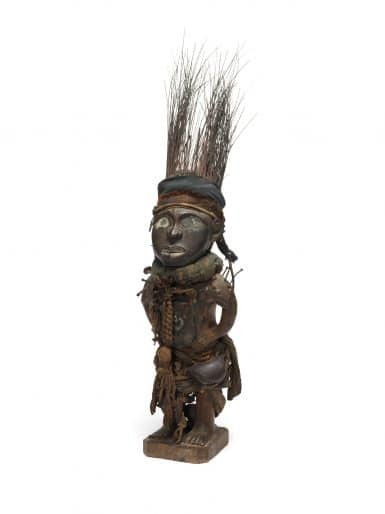
Yombe peoples, Democratic Republic of the Congo, Power Figure (Nkisi Nduda), 19th-20th century, wood, pigment, porcupine quills, resinous coating, mirror fragments, nails, iron, bells, cotton and plant fibres. Gift of Justin and Elisabeth Lang, 1984 (M84-356)

Invitation, Visions and Models: African Sculpture from the Justin and Elisabeth Lang Collection, 1984

Jacqueline Fry, Visions and Models: African Sculpture from the Justin and Elisabeth Lang Collection, 1985

Elisabeth and Justin Lang, 1984
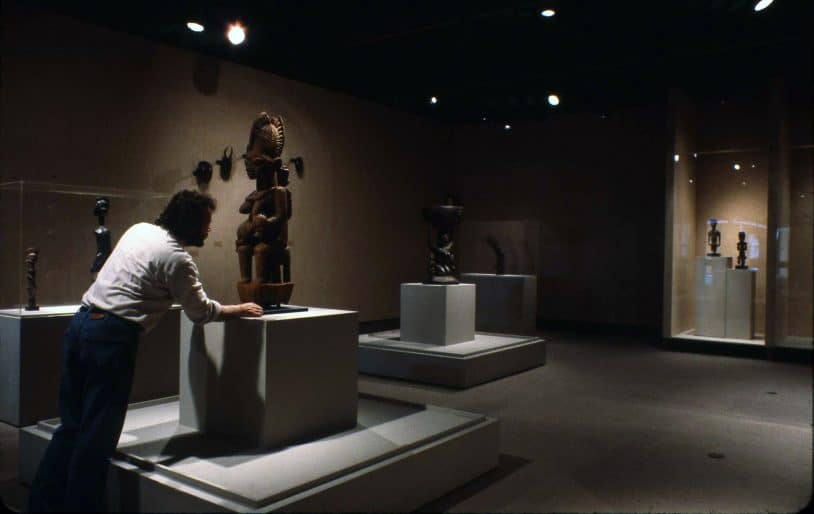
Installation in progress, Visions and Models: African Sculpture from the Justin and Elisabeth Lang Collection, 1985

Yombe peoples, Democratic Republic of the Congo, Power Figure (Nkisi Nduda), 19th-20th century, wood, pigment, porcupine quills, resinous coating, mirror fragments, nails, iron, bells, cotton and plant fibres. Gift of Justin and Elisabeth Lang, 1984 (M84-356)

Invitation, Visions and Models: African Sculpture from the Justin and Elisabeth Lang Collection, 1984
Ottawa gallery owners and collectors John and Mary Robertson present their first gifts of Inuit art. Over the next decade, the Agnes receives over 240 Inuit prints, drawings, sculpture and artefacts from the Robertsons, by such renowned artists as Kenojuak Ashevak, Pitseolak Ashoona, Jessie Oonark, Kananginak Pootoogook, Pudlo Pudlat and Joe Talirunili. The John and Mary Robertson Collection of Inuit Art substantially broadens the representation of art produced in Canada in our holdings.
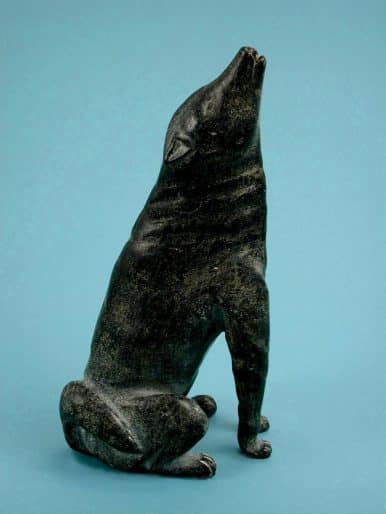
Kananginak Pootoogook, Howling Dog, undated, stone and wood. The John and Mary Robertson Collection of Inuit Art, 1994 (37-085)
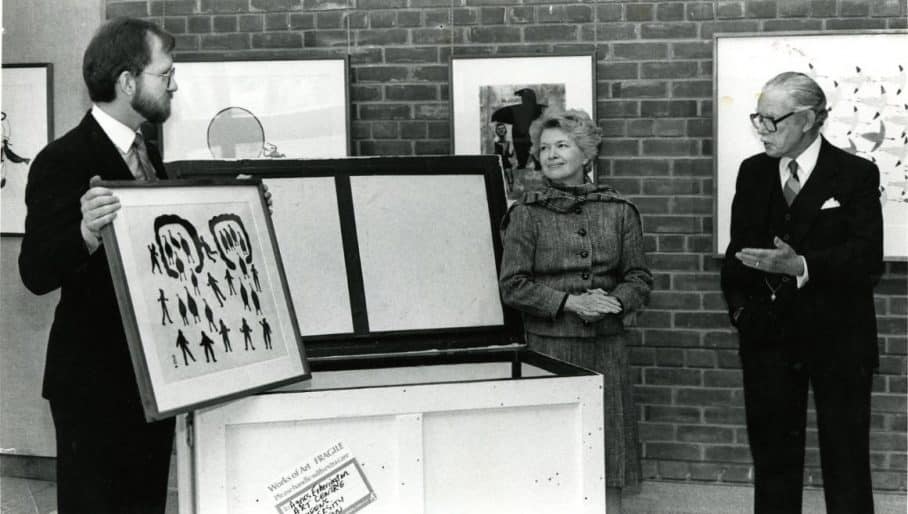
Robert Swain, Director, with Mary and John Robertson, announcing their initial gift of Inuit art, 1986
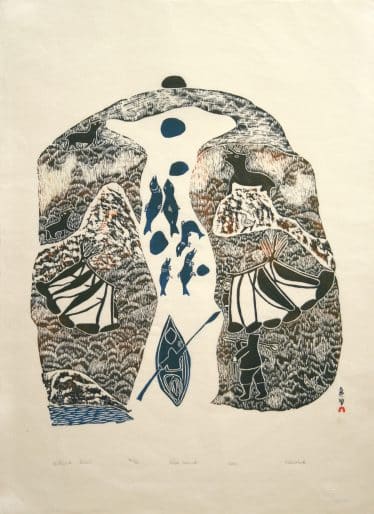
Pitseolak Ashoona, Netsilik River, 1973, stonecut on paper, 40/50, printed by Timothy Ottochie. Gift of John Robertson, 1985 (28-116)

Kananginak Pootoogook, Howling Dog, undated, stone and wood. The John and Mary Robertson Collection of Inuit Art, 1994 (37-085)

Robert Swain, Director, with Mary and John Robertson, announcing their initial gift of Inuit art, 1986
Chancellor Agnes Benidickson, the niece and namesake of Agnes Etherington and long-time patron of the gallery, donates James Pattison Cockburn’s View North along King Street near St. George’s Church (1829). Since the 1970s, the Agnes has actively collected topographical watercolours and drawings by British officers and their wives, in recognition of Kingston’s military history.
Local artist Joyce Putnam also donates paintings by her friend A. Y. Jackson, with further gifts in subsequent years, building a remarkable body of landscapes in our holdings by Group of Seven members and their colleagues.
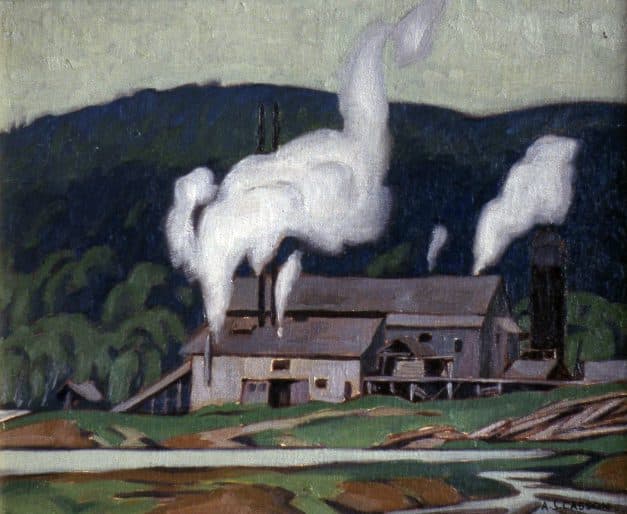
A. J. Casson, MacCrea’s Mill, Lake of Two Rivers, Algonquin Park, 1944, oil on canvas. Gift of Joyce Putnam, 1993 (36-007.03)
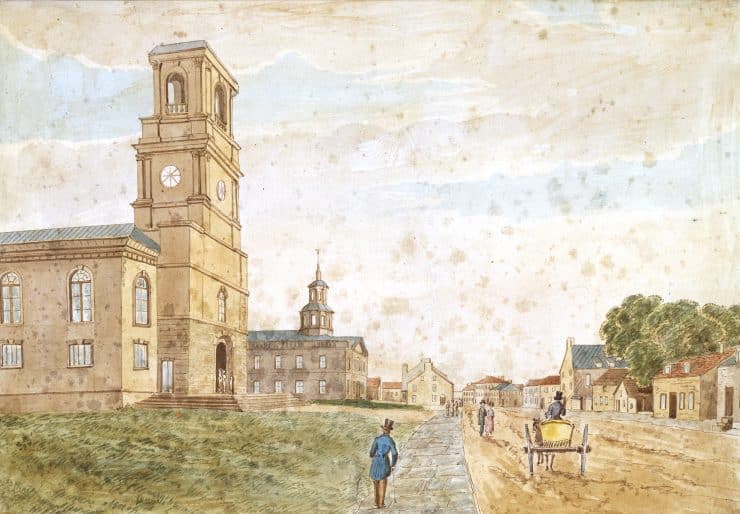
James Pattison Cockburn, View North along King Street near St. George’s Church, 1829, watercolour on paper. Gift of Chancellor Agnes Benidickson, 1987 (30-091)
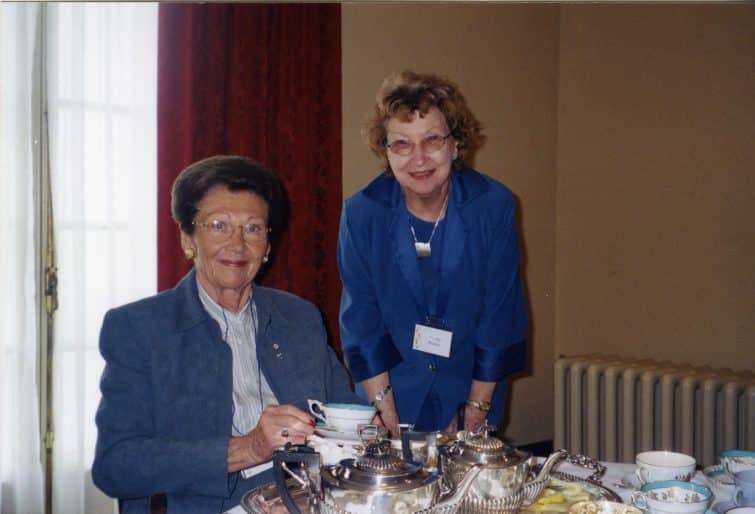
Chancellor Agnes Benidickson and Shirley Purkis, Gallery Association member, in Etherington House, 2000

A. J. Casson, MacCrea’s Mill, Lake of Two Rivers, Algonquin Park, 1944, oil on canvas. Gift of Joyce Putnam, 1993 (36-007.03)

James Pattison Cockburn, View North along King Street near St. George’s Church, 1829, watercolour on paper. Gift of Chancellor Agnes Benidickson, 1987 (30-091)
The Agnes undergoes renovation to create the Justin and Elisabeth Lang Gallery of African Art in the former sculpture terrace and to give a “facelift” to the main foyer and visitor services. At the opening, the Quammie Williams Ensemble presents traditional music and dance from Mali, Senegal and Ghana.
The Agnes also acquires eight oil paintings by Joseph Wright of Derby. Brought to Canada in 1914 by descendants of the original British owner, these landscapes were under threat of permanent export. Recognizing the value of Derby’s work on an international level, Drs. Alfred and Isabel Bader contributed funding to the purchase, supplemented by a grant under the Cultural Property Export and Import Act.
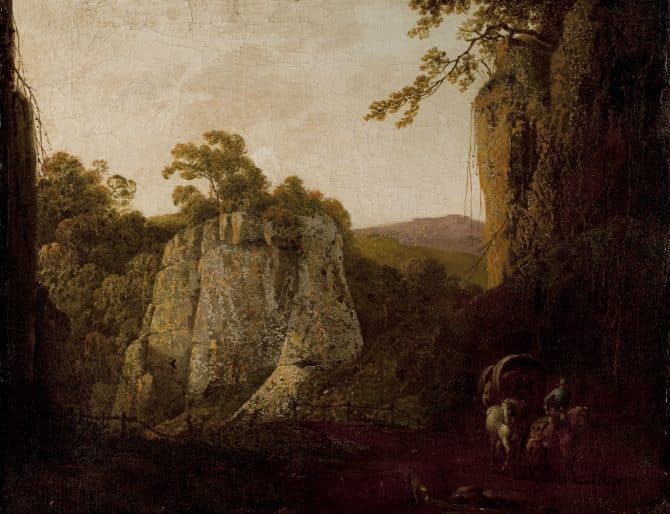
Joseph Wright of Derby, Cut through the Rock, Cromford, around 1790, oil on canvas. Purchase, Alfred and Isabel Bader and the Government of Canada, 1988 (31-008). Photo: Chris Miner
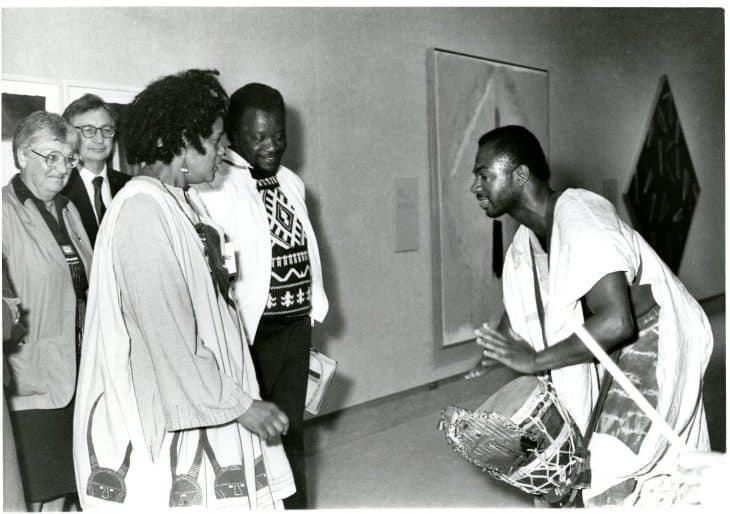
The Quammie Williams Drumming Ensemble performing at the opening of the Justin and Elisabeth Lang Gallery of African Art, 1988

The Quammie Williams Drumming Ensemble performing at the opening of the Justin and Elisabeth Lang Gallery of African Art, with Honourable Flora Macdonald, Justin Lang and Robert Swain, 1988
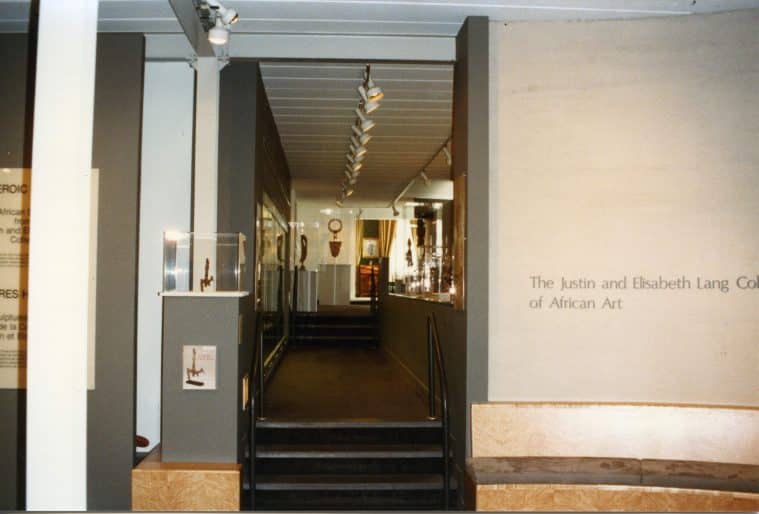
Justin and Elisabeth Lang Gallery of African Art, 1989
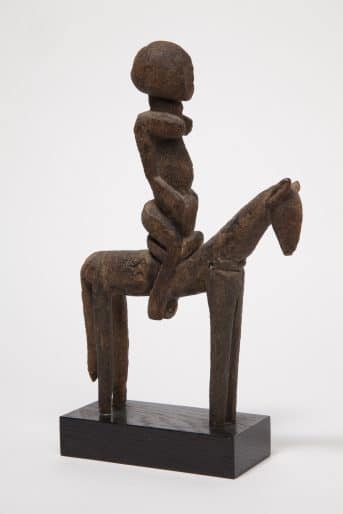
Dogon peoples, Mali, Equestrian Figure, unknown date, wood and inlaid metal. Gift of Justin and Elisabeth Lang, 1984 (M84-052). Photo: Paul Litherland

Joseph Wright of Derby, Cut through the Rock, Cromford, around 1790, oil on canvas. Purchase, Alfred and Isabel Bader and the Government of Canada, 1988 (31-008). Photo: Chris Miner

The Quammie Williams Drumming Ensemble performing at the opening of the Justin and Elisabeth Lang Gallery of African Art, 1988
Telling Images: Selections from the Bader Gift of European Paintings to Queen’s University closes at the Agnes before circulating in six provinces. The exhibition is guest curated by David McTavish, former Queen’s Art History professor then at the Art Gallery of Ontario. Two years later, McTavish returns to Queen’s as head of Art History, and later becomes the Agnes’s director. In 2016, the David McTavish Art Study Room is launched in his memory, fittingly expanding the Agnes’s capacity for academic engagement.
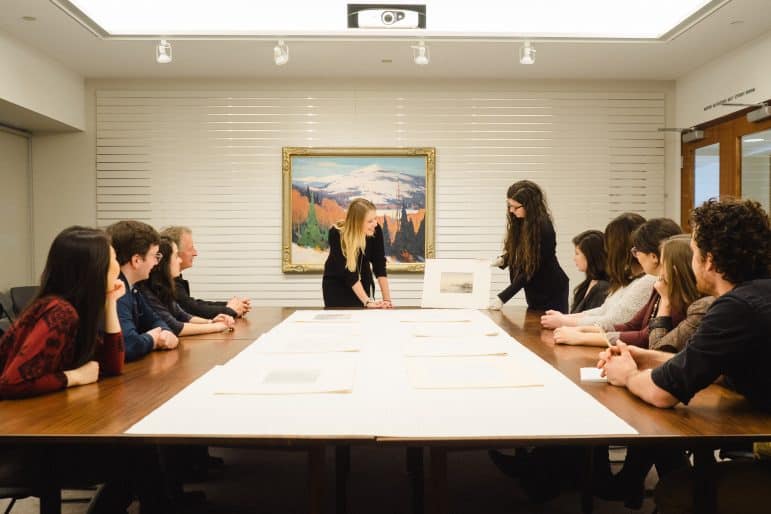
David McTavish Art Study Room, 2016
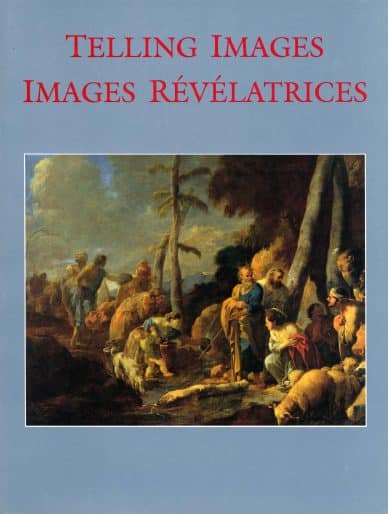
David McTavish, Telling Images: Selections from the Bader Gift of European Paintings to Queen’s University, 1989

Installation view, Telling Images, 1989
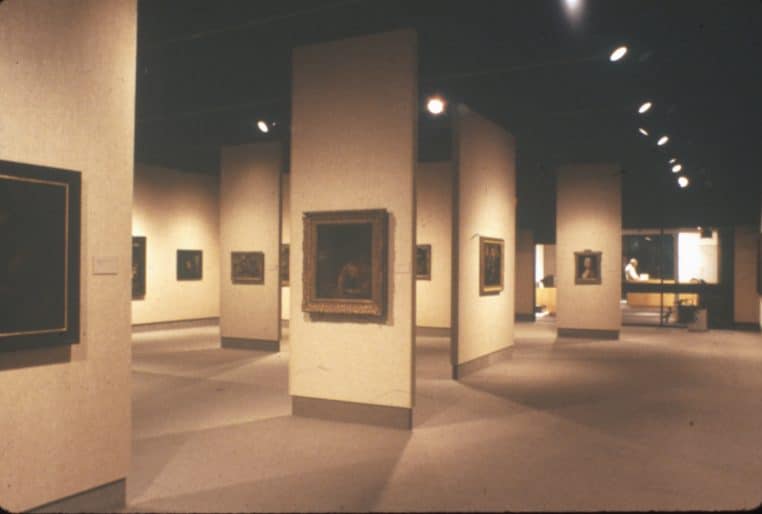
Installation view, Telling Images, 1989

David McTavish Art Study Room, 2016

David McTavish, Telling Images: Selections from the Bader Gift of European Paintings to Queen’s University, 1989
Seeing Red, curated by Michael Bell, features contemporary artists of Indigenous ancestry, including Bob Boyer, Joane Cardinal-Schubert, Edward Poitras and Jane Ash Poitras. It is followed in the next year by Reclaiming History: Robert Houle, Carl Beam and Edward Poitras. Carl Beam’s Columbus Suite (1989), Edward Poitras’s Anglais in Edom (1990) and Robert Houle’s Lost Tribes #6 and #8 (1989) are all purchased in 1990.
The McLean Foundation (Toronto) donates funds to purchase the entire collection of theatre portraits by Kingston artist Grant Macdonald, from Laurence Olivier to Robertson Davies. Another body of significant acquisitions is featured in Gifts from Herbert Bunt, recognizing the ongoing donations of contemporary works from this Queen’s alumnus. By 2017, Bunt has gifted some 289 pieces, many representing formative stages in artists’ careers.
Also in this year, the inaugural Janet Braide Memorial Award for outstanding contribution to scholarship in the field of Canadian art history is presented to scholar John O’Brian. The award becomes the Janet Braide Memorial Fund in 2001, dedicated to supporting programs and exhibitions in Canadian historical art.

Sophie Jodoin, Study for Helmets and Gasmasks #2, 2007, oil on mylar. Gift of Herbert Bunt, 2013 (56-021)

Installation view, Bob Boyer, Hewey, Dewey and Lewey: A Re-appropriation of Misappropriated Appropriation (1988–1990), in Seeing Red, 1990

Installation view, Joane Cardinel-Schubert, Preservation of the Species: Deep Freeze (1988–1990), in Seeing Red, 1990
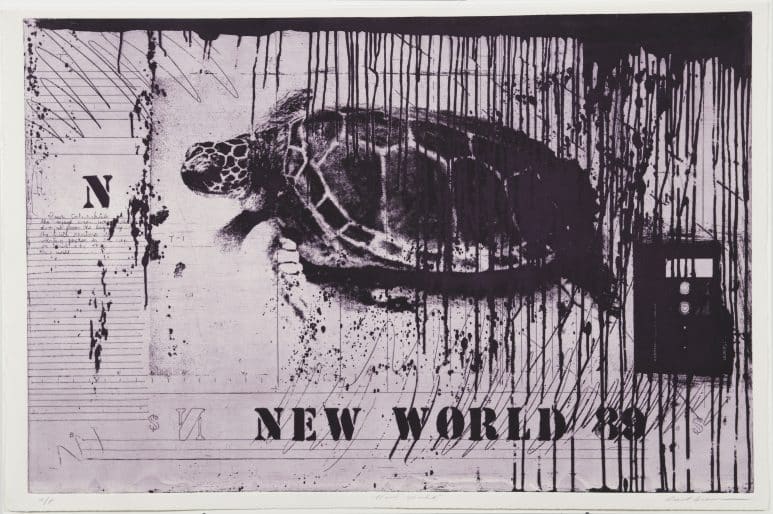
Carl Beam, New World, #1 from Columbus Suite, 1989, etching on paper. Purchase, Chancellor Richardson Memorial Fund, 1990 (33-013.01). Photo: Paul Litherland

Grant Macdonald, Robertson Davies, undated, ink and watercolour on paper. Gift of the McLean Foundation, 1990 (33-006.087). Photo: Hal Roth

Sophie Jodoin, Study for Helmets and Gasmasks #2, 2007, oil on mylar. Gift of Herbert Bunt, 2013 (56-021)

Installation view, Bob Boyer, Hewey, Dewey and Lewey: A Re-appropriation of Misappropriated Appropriation (1988–1990), in Seeing Red, 1990
Looking back at 1941 when artists from across the country met at Queen’s for the first ever Conference of Canadian Artists (the “Kingston Conference”), the Agnes organizes another national conference. Attendees explore the artist’s place within shifting cultural and political power structures and address the urgent need for full recognition of cultural diversity. “1941” is a small exhibition of works by artists who attended the first Kingston Conference and Digital Highways demonstrates continuities and differences in fine art traditions set fifty years apart.
Prince Charles visits the Agnes during the Queen’s sesquicentennial to address the convocation and receive an honourary degree. Drs. Alfred and Isabel Bader also donate seventeen paintings this year, including El Greco’s Adoration of the Shepherds (around 1567).
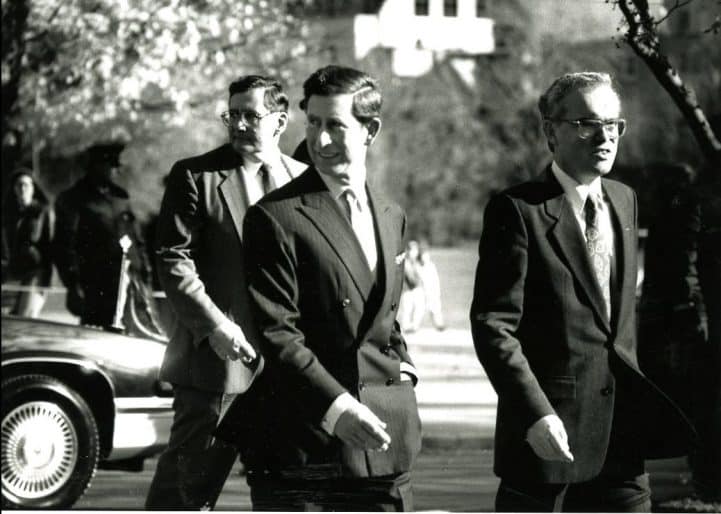
His Royal Highness Prince Charles with David McTavish, Director, 1991
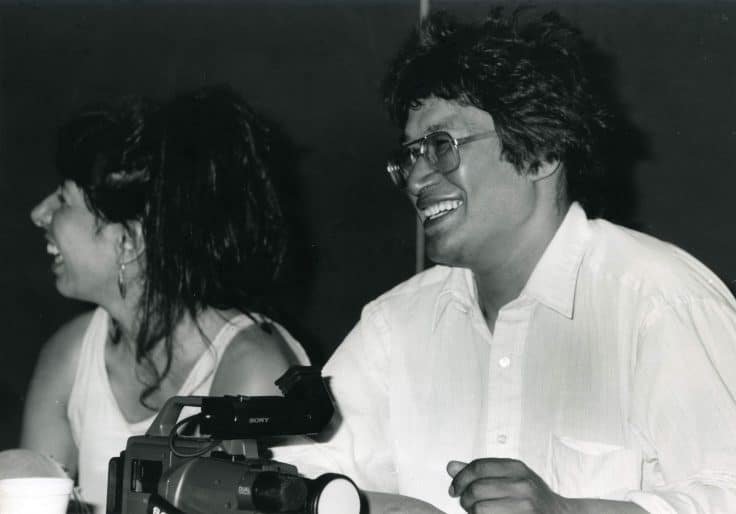
Rebecca Belmore and Zacharias Kunuk, artists, at the Fragmented Power: Art Voices for 2000 conference, 1991
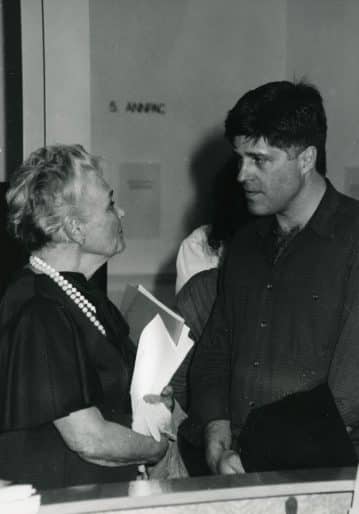
Elizabeth Harrison, artist and co-organizer of the 1941 Conference of Canadian Artists, at Fragmented Power: Art Voices for 2000, Kingston Conference, 1991
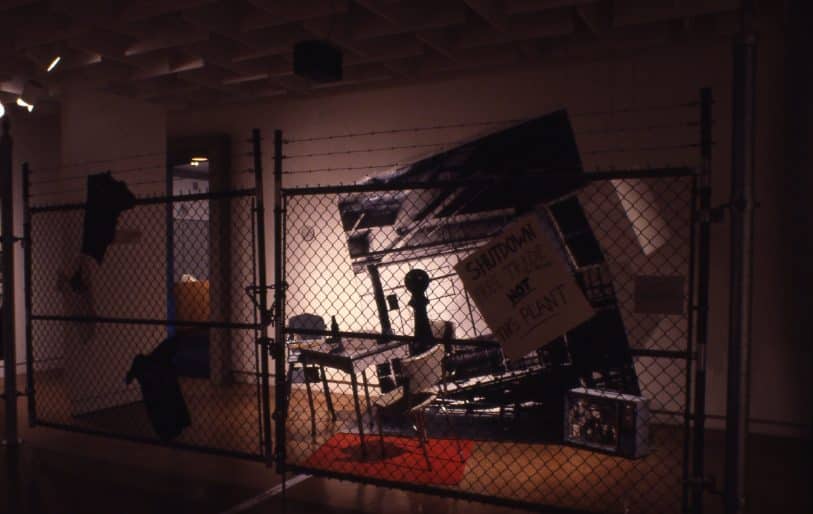
Installation view, Digital Highways, 1991
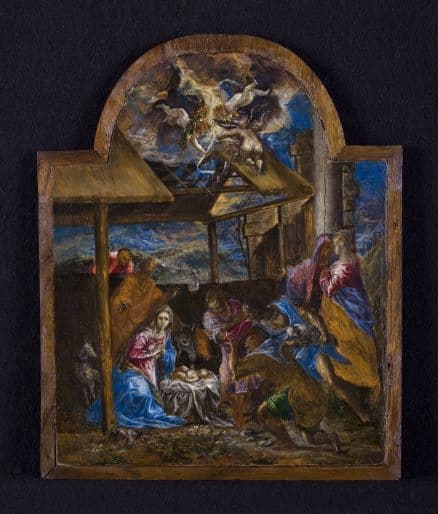
El Greco, The Adoration of the Shepherds, around 1567, oil and tempera on panel. Gift of Alfred and Isabel Bader, 1991 (34-011)

His Royal Highness Prince Charles with David McTavish, Director, 1991

Rebecca Belmore and Zacharias Kunuk, artists, at the Fragmented Power: Art Voices for 2000 conference, 1991
“All That Glitters” is the first Agnes program funded by the new David Bain Memorial Fund (later David and Patti Bain). With a roster of expert talks on silver, a cocktail buffet and a bus trip to view the silver collection at Kingston’s Royal Military College, the program is quickly subscribed. Participants are invited to bring a silver piece for appraisal by keynote speaker Christopher Hartop of Christie’s New York. Established in 1991 in memory of Kingston interior designer David Bain, the fund continues to support public events focused on the decorative arts.

Participants admire antique ceramic tableware at Perfect Setting, the second David and Patty Bain Decorative Arts Program, 1993
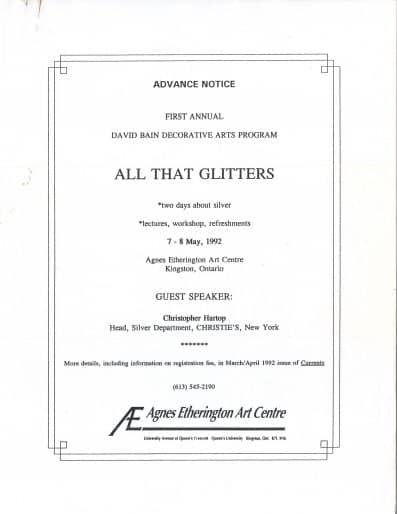
Flyer, All That Glitters, the second David and Patty Bain Decorative Arts Program, 1992

Participants admire antique ceramic tableware at Perfect Setting, the second David and Patty Bain Decorative Arts Program, 1993

Flyer, All That Glitters, the second David and Patty Bain Decorative Arts Program, 1992
Hear to See II: Looking at Contemporary Art builds on the success of the first Hear to See in 1990. Education Officer Jeri Harmsen curates a show of six contemporary works from the collection, by Michael Snow, Katja Jacobs, Richard Gorenko, Milly Ristvedt, Carl Beam and Betty Goodwin. Using state-of-the art telephone technology, visitors listen to commentary and interviews with the artists. The exhibition wins the Ontario Association of Art Galleries Educators’ Award, reflecting the Agnes’s leadership in its use of in-gallery technology.

Hear to See: Experiences in Looking at Art, 1990
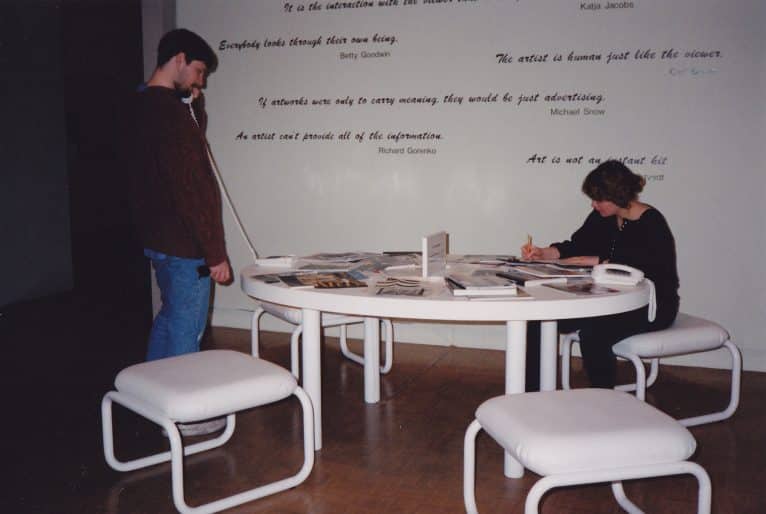
Hear to See II: Looking at Contemporary Art, 1993
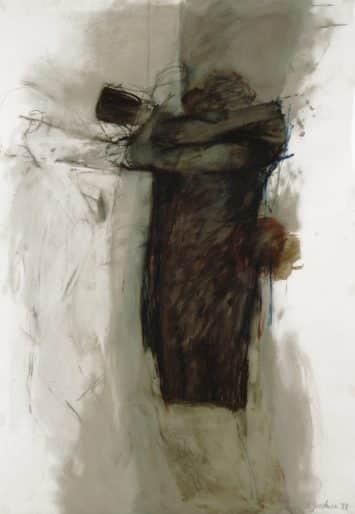
Betty Goodwin, Figure with Megaphone, 1988, ink and pastel on Geofilm. Purchase, Gallery Association and Canada Council, 1989 (32-014). Photo: Amanda Gray

Hear to See: Experiences in Looking at Art, 1990

Hear to See II: Looking at Contemporary Art, 1993
In September, renowned Canadian artist Alex Colville gives a talk, “Artist as Magician: Alex Colville,” to a packed house in conjunction with an exhibition of his drawings on tour from the Owens Art Gallery, Mount Allison University. Earlier in the year, Colville’s watercolour Three Weeds (1958) is featured in the Recent Acquisitions Corner, a mid-1990s exhibition series of singular collection highlights. The Agnes acquires its first figural painting by Colville, Nude on a Rug (1954), in 2012—an eerie, intimate portrait of the artist’s wife.
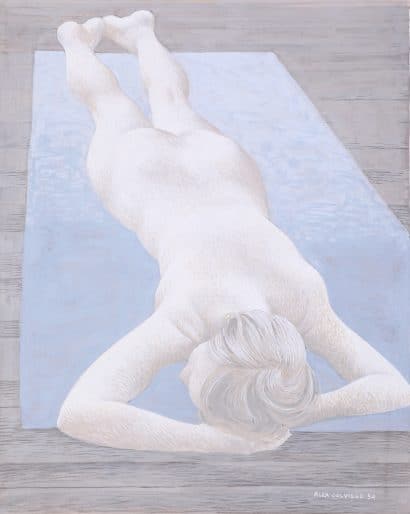
Alex Colville, Nude on a Rug, 1954, casein tempera on paper. Gift of Mrs. Ruth Soloway, 2012 (55-004.11). Photo: Bernard Clark
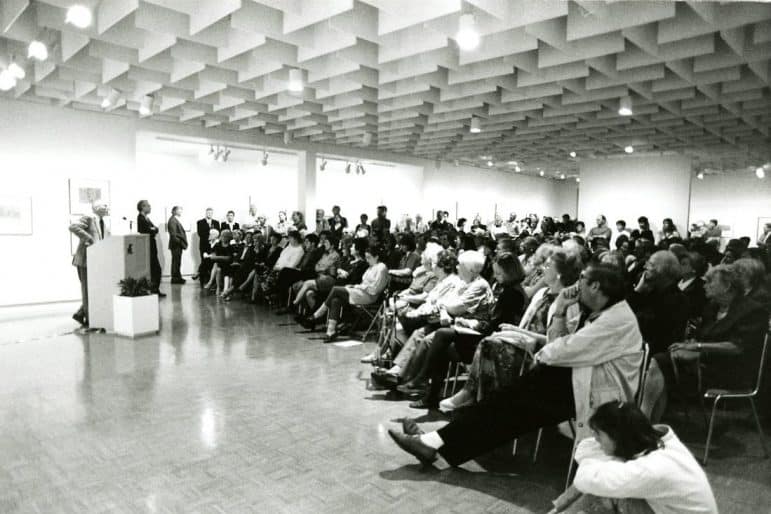
Alex Colville delivers lecture at opening of Alex Colville: Selected Drawings, 1994

Alex Colville delivers lecture at opening of Alex Colville: Selected Drawings, 1994

Alex Colville, Nude on a Rug, 1954, casein tempera on paper. Gift of Mrs. Ruth Soloway, 2012 (55-004.11). Photo: Bernard Clark

Alex Colville delivers lecture at opening of Alex Colville: Selected Drawings, 1994
The Female Imaginary features works that speak back to patriarchy and offer inventive speculation on equitable alternatives. After a day of dialogue at the related symposium “Feminist Practice in the Visual Arts,” Winnipeg-based artist duo Shawna Dempsey and Lorri Millan perform The Thin Skin of Normal. Part of a series of feminist group exhibitions curated by Jan Allen, The Female Imaginary is followed by Rx: Taking Our Medicine and, in 1996, Fertile Ground—by which time Allen occupies a newly created position at the Agnes, Curator of Contemporary Art.

Jin-me Yoon, Intersection 1, 1996, C-print transmounted on plexiglas. Purchase, the Chancellor Richardson Memorial Fund, 1997 (40-018)

Shawna Dempsey, performing Thin Skin Normal, at Feminist Practice in the Visual Arts symposium, 1995

Jan Allen, The Female Imaginary, 1995, Jan Allen and Kim Sawchuk, Rx: Taking Our Medicine, 1995, and Jan Allen, Fertile Ground, 1996
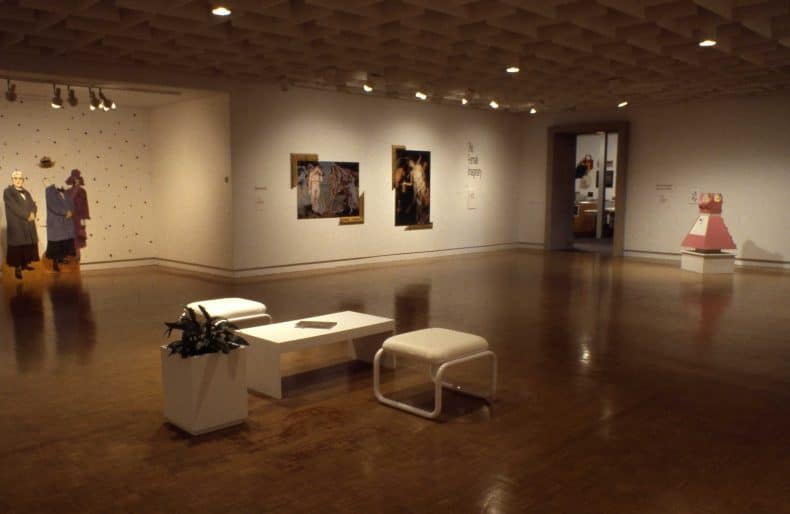
Installation view, The Female Imaginary, 1995

Installation view, Rx: Taking Our Medicine, 1995

Jin-me Yoon, Intersection 1, 1996, C-print transmounted on plexiglas. Purchase, the Chancellor Richardson Memorial Fund, 1997 (40-018)

Shawna Dempsey, performing Thin Skin Normal, at Feminist Practice in the Visual Arts symposium, 1995
The capital campaign for gallery expansion is launched with the exhibition Wisdom, Knowledge and Magic: The Image of the Scholar in Seventeenth-Century Dutch Art. Seventeen works are lent by Drs. Alfred and Isabel Bader, along with others from the National Gallery of Canada, Art Gallery of Ontario, Metropolitan Museum of Art, and others. The exhibition is prepared by Dr. Volker Manuth, Bader Chair in the Department of Art, in collaboration with graduate students. Described as “unique in its ambitiousness in this country” for a student-organized exhibition, Wisdom, Knowledge and Magic and its catalogue mark a major step in contextualizing paintings in The Bader Collection.
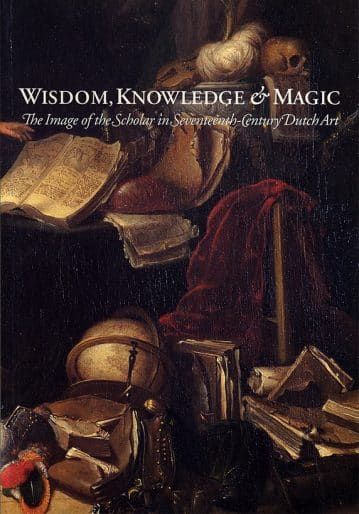
Volker Manuth et al, Wisdom, Knowledge and Magic: The Image of the Scholar in Seventeenth-Century Dutch Art, 1996

Dr. Volker Manuth with students, examining Jacob van Spreeuwen’s Allegory of Vanitas, for the exhibition Wisdom, Knowledge and Magic, 1996
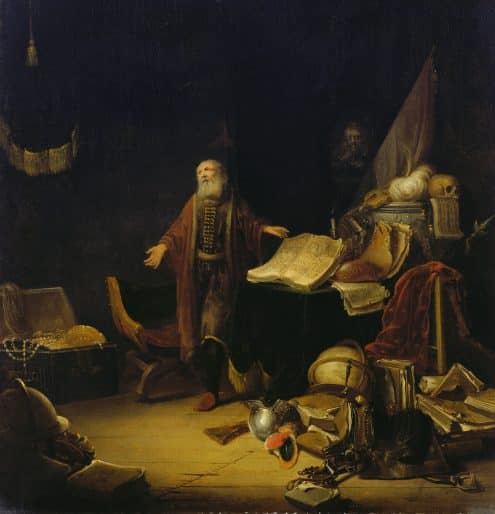
Jacob van Spreeuwen, Allegory of Vanitas, around 1645, oil on canvas. Gift of Alfred and Isabel Bader, 1991 (34-020.08). Exhibited in Wisdom, Knowledge and Magic, 1996

Volker Manuth et al, Wisdom, Knowledge and Magic: The Image of the Scholar in Seventeenth-Century Dutch Art, 1996

Dr. Volker Manuth with students, examining Jacob van Spreeuwen’s Allegory of Vanitas, for the exhibition Wisdom, Knowledge and Magic, 1996
The “old” Agnes goes out on a high note with its successive fall shows. The Hip Collects features selected works by local contemporary artists from the collections of members of The Tragically Hip, Kingston’s premier rock band, followed by Social Process/Collaborative Action: Mary Kelly, 1970–75, on tour from the Charles H. Scott Gallery, Vancouver. The latter exhibition is animated by the American conceptual artist’s residency at Queen’s, during which she delivers a public lecture and works with students in the Departments of Art, Women’s Studies and Film Studies. The Agnes practicum is also offered for the first time, providing Art History graduate students with the opportunity to gain hands-on museum experience as part of their course work.
After a final holiday celebration sponsored by the Gallery Association, the Agnes closes to the public to begin packing for a major building renovation and expansion.
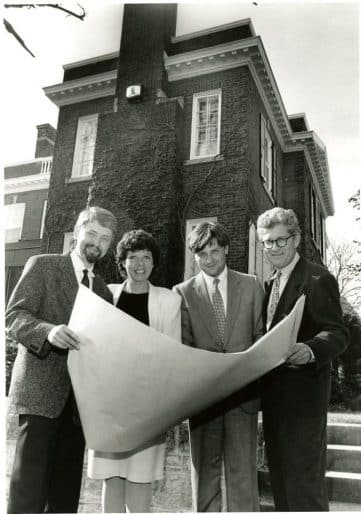
Patricia Howorth, project manager, with Gerry Shoalts, Ray Zaback and Donald Schmidt, architects, 1996
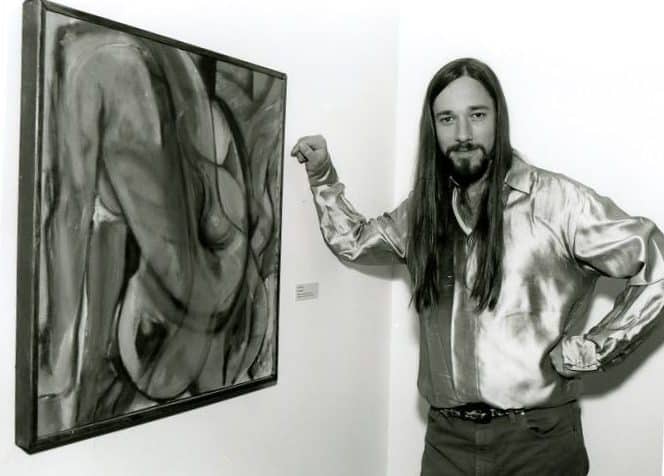
Rob Baker of The Tragically Hip at the opening of The Hip Collects, 1997
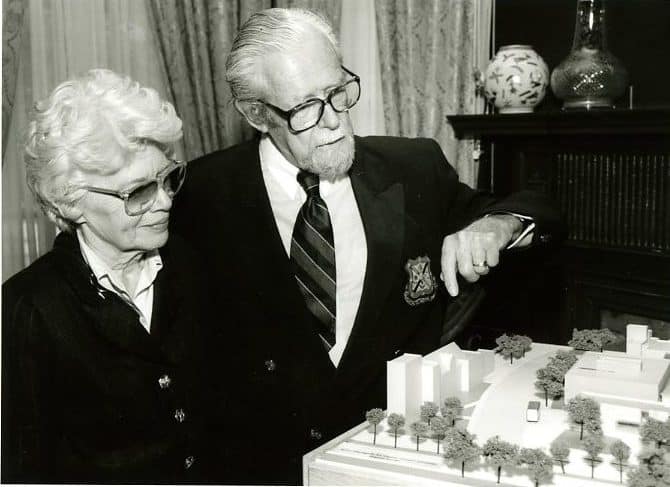
Mary and John Robertson, donors, examine gallery building model, 1997

Patricia Howorth, project manager, with Gerry Shoalts, Ray Zaback and Donald Schmidt, architects, 1996

Rob Baker of The Tragically Hip at the opening of The Hip Collects, 1997
The collection moves to temporary storage, and the Agnes’s staff relocates to a former gymnasium at 218 Barrie Street, renamed The Interim Agnes, with offices and a small gallery space, for the next two years. Among the artworks is an important collection of 169 Italian drawings spanning the 16th through 19th centuries, donated in this year by Bayside Lakeshore Properties Ltd., Montreal.
Exhibitions at The Interim Agnes include Jayce Salloum: Neutral | Brakes | Steering, a syncopated installation of urban photography, and in the following year, Sylvat Aziz: Maqamaat, featuring critical cultural dialogue works by the new Queen’s Fine Art professor.

Construction phase, 1998. Photo: Patricia Howorth

Volunteers helping to pack final items in Etherington House, 1998
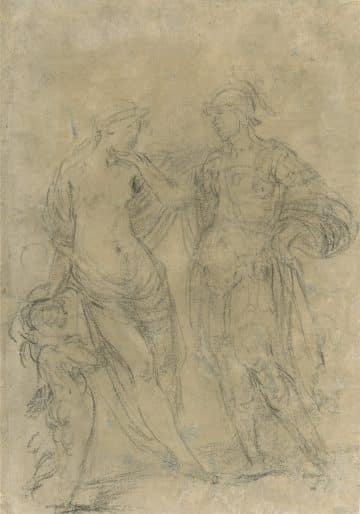
Guido Reni, Mars, Venus and Cupid, black chalk on prepared buff paper. Gift of Bayside Lakeshore Properties Ltd., Montreal, 1998 (41-018.31)
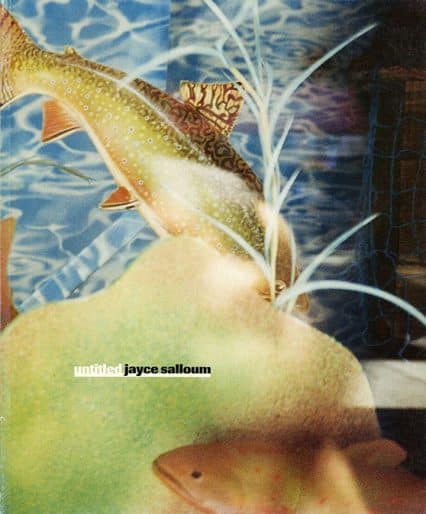
Jim Drobnick and Jennifer Fisher, Untitled: Jayce Salloum, 1999

Construction phase, 1998. Photo: Patricia Howorth

Construction phase, 1998. Photo: Patricia Howorth

Volunteers helping to pack final items in Etherington House, 1998
During construction, the longstanding “Agnes Goes to School” program is reintroduced with vigour. Student docents visit local schools with highly interactive “looking at art” presentations, making use of slides and mounted reproductions.
This year also marks the start of the community docent program, comprised of non-student Kingston residents who begin training to deliver exhibition tours for the public when the new gallery opens. As of 2017, the Community Docent program is still going strong at the Agnes, providing around eighty specialized in-gallery tours each year.
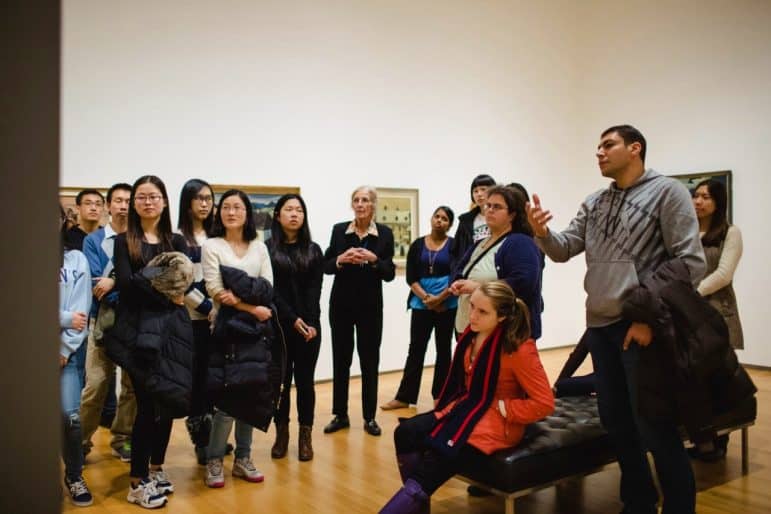
Janet Robertson, community docent, leads tour for international students, 2016

Kristy Holmes, student docent, at The Interim Gallery, 1999
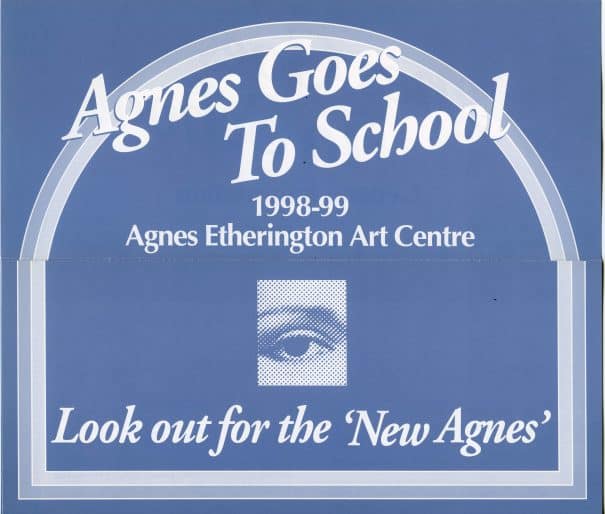
Flyer, Agnes Goes to School, 1998–1999

Janet Robertson, community docent, leads tour for international students, 2016

Kristy Holmes, student docent, at The Interim Gallery, 1999
Micah Lexier’s commissioned A Minute of My Time (September 29, 1998 15:04 – 15:05), a Millennium Project, graces the facade of the new Agnes. The building, designed by A. J. Diamond, Donald Schmitt, and Company, Toronto, in a joint venture with Shoalts and Zaback Architects, Kingston, boasts eight new galleries, expanded storage, the André Biéler Studio for school programs and art classes, the Murie Meisel Seminar Room for academic engagement, and a welcoming Atrium for gatherings and lectures. Some 1300 people attend the grand re-opening festivities.

Atrium, 2016

Micah Lexier, A Minute of My Time (September 29, 1998 15:04 – 15:05), 1999, steel. Commissioned with the support of the Millennium Arts Fund of the Canada Council for the Arts, the Chancellor Richardson Memorial Fund and Thyssen Marathon Canada Limited, 1999 (42-032)
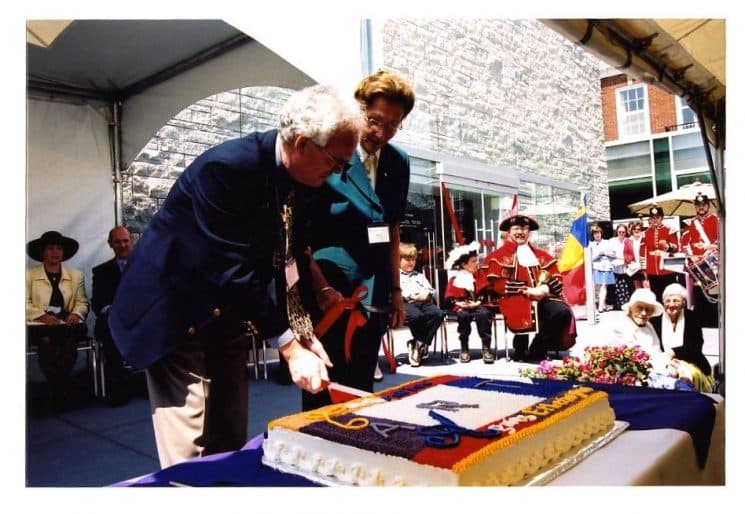
David McTavish, Director, and Chancellor Agnes Benidickson cut the cake at the Grand Re-Opening, 2000

Pat Sullivan, Public Programs Officer, and David McTavish, Director, at Open House, 2000

David Rokeby, The Giver of Names, 1991–2003, installation. Purchased with the support of the Canada Council for the Arts Acquisition Grants program, Chancellor Richardson Memorial Fund, 2009 (52-001a-t). One of the first works exhibited in the renovated Agnes and later purchased. Photo: Paul Litherland

Atrium, 2016

Micah Lexier, A Minute of My Time (September 29, 1998 15:04 – 15:05), 1999, steel. Commissioned with the support of the Millennium Arts Fund of the Canada Council for the Arts, the Chancellor Richardson Memorial Fund and Thyssen Marathon Canada Limited, 1999 (42-032)
Museopathy: Contemporary Art in Kingston Heritage Sites is an innovative multi-site exhibition, guest curated by Jim Drobnick and Jennifer Fisher, initiated and coordinated by Jan Allen. Site-specific interventions by eminent contemporary artists are installed in ten participating museums and heritage sites throughout the city, while over 300 select objects from these museums’ collections are displayed at the Agnes in a contemporary kunstkammer, or cabinet of curiosities.
A new curatorial position is created through generous endowment. David De Witt is hired as Bader Curator of European Art—at the time, one of the very few privately funded museum positions in Canada—bringing much needed expertise to the gallery as this collection grows.
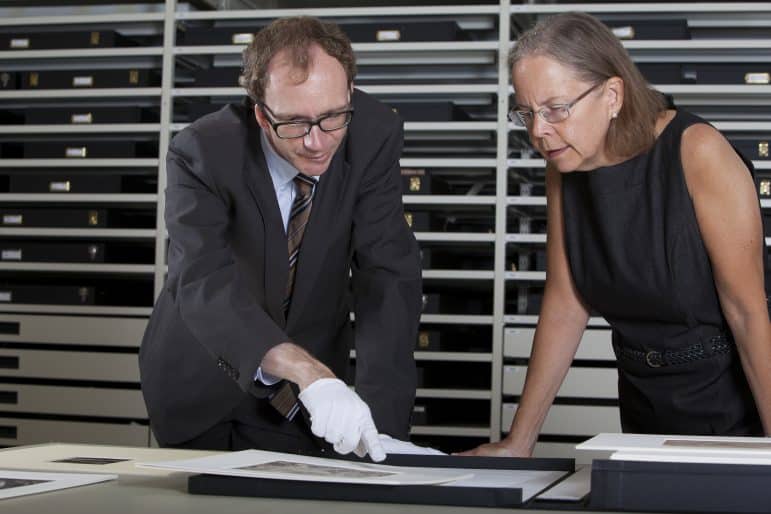
David de Witt, Bader Curator of European Art, with Stephanie Dickey, Professor and Bader Chair in Northern Baroque Art, 2012
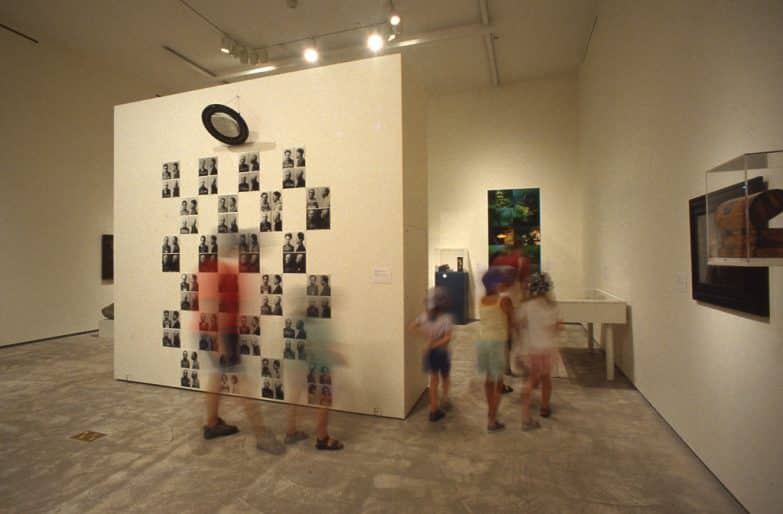
Installation view, Collectioneering, at Agnes Etherington Art Centre, as part of Museopathy, 2001

Installation view, Brian Jungen, Isolated Depiction of the Passage of Time (2001), at Correctional Service of Canada Museum, as part of Museopathy, 2001
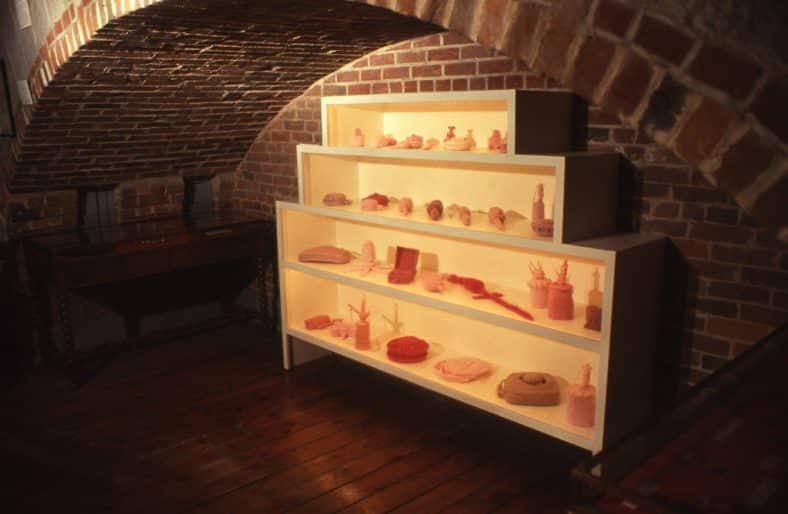
Installation view, Barbara Hunt, antipersonnel (1998–2001), at Royal Military College of Canada Museum, as part of Museopathy, 2001
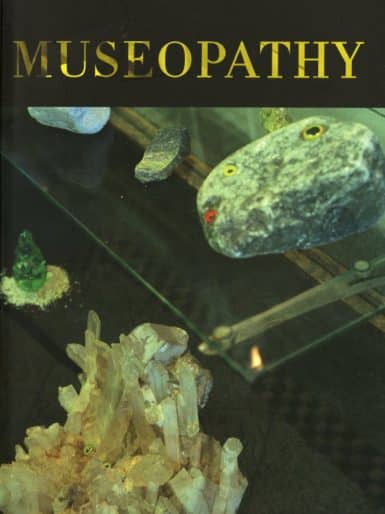
Jan Allen, Jim Drobnick and Jennifer Fisher, Museopathy, 2002
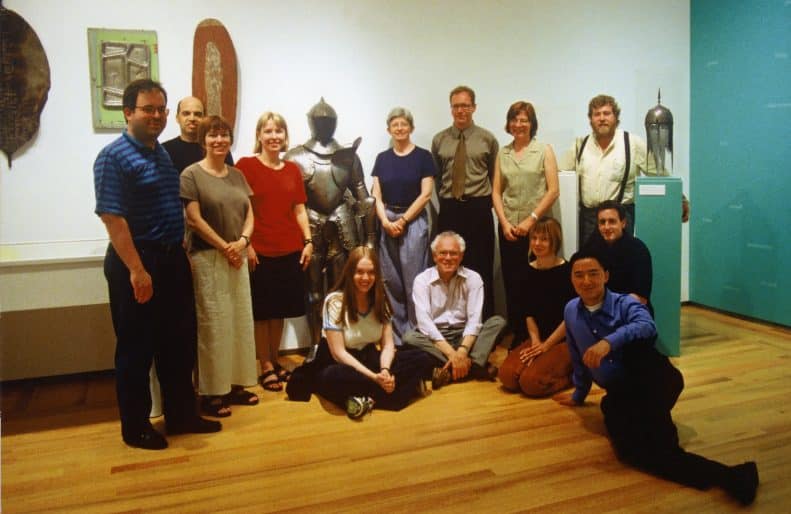
Agnes staff in Museopathy exhibition. Standing: Barry Fagan, Nigel Barnett, Pat Sullivan, Liz Ziminica, Dorothy Farr, David de Witt, Jan Allen, Spencer Bardell (photographer); seated: David McTavish, Julie Fiala, Cameron O, York Lethbridge

David de Witt, Bader Curator of European Art, with Stephanie Dickey, Professor and Bader Chair in Northern Baroque Art, 2012

Installation view, Collectioneering, at Agnes Etherington Art Centre, as part of Museopathy, 2001
The inaugural Rita Friendly Kaufman Lecture is delivered by Nancy Yeide of the National Gallery of Art, Washington, DC, to a packed auditorium. Dr. Nathan Kaufman endowed the annual lecture in honour of his wife to bring to Kingston notable figures in the visual arts. Over the next thirteen years, invited speakers from around the world take their place at the podium. In 2015, the terms of the fund are revised to support visual art and cultural programming at the gallery, especially for children.
In 2002, the exhibition Better Worlds: Activist and Utopian Projects by Artists and its associated publication and symposium examine the relationship between individual and state.
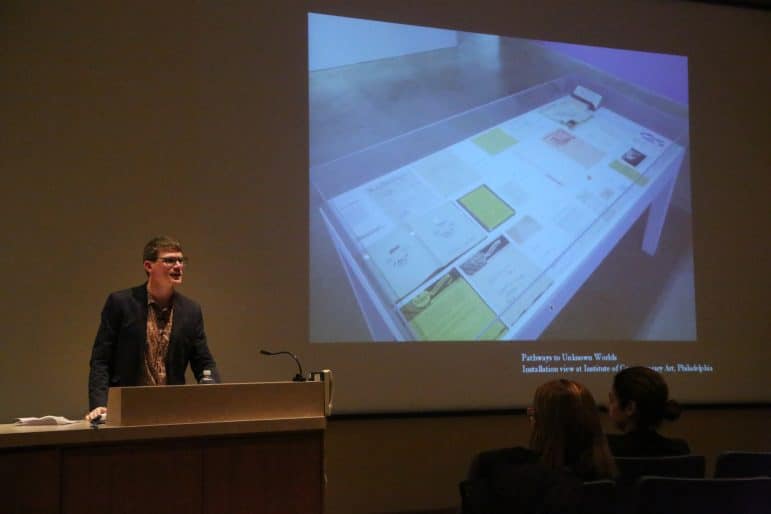
Anthony E. Elms, Kaufman lecturer, 2013
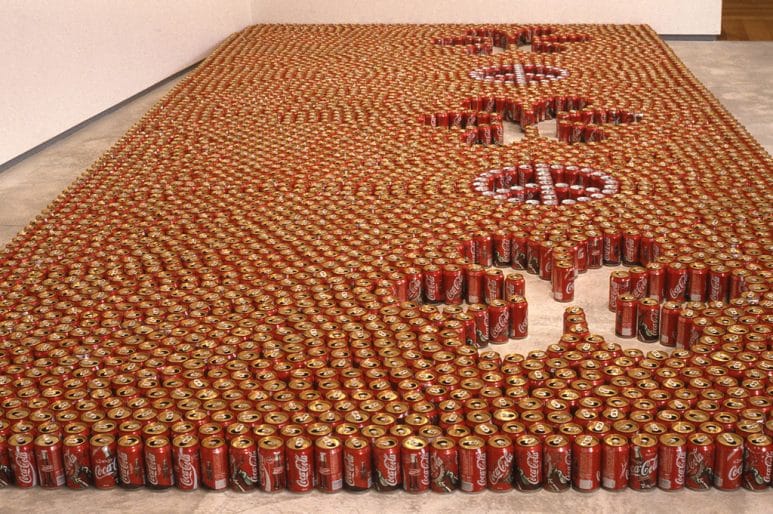
Installation view, Mindy Yan Miller, drop out (2001), in Better Worlds, 2002. Photo: Cheryl O’Brien
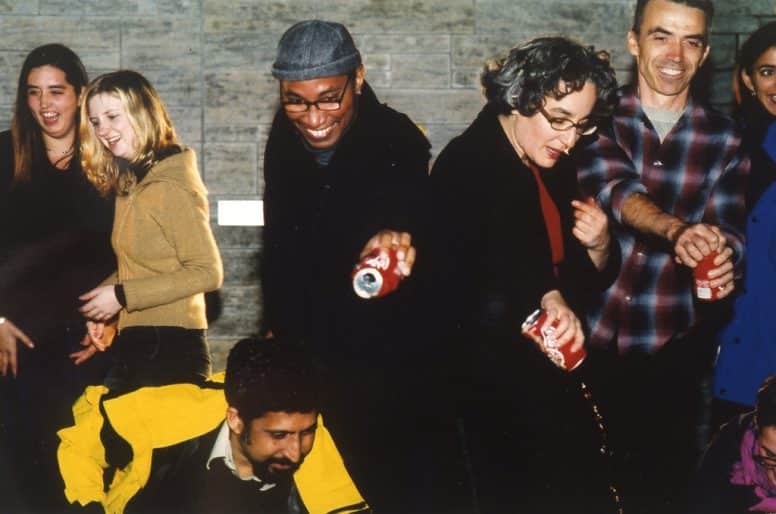
Demonstration view, Mindy Yan Miller, coke dump, 2002, in Better Worlds, 2002. Photo: Cheryl O’Brien
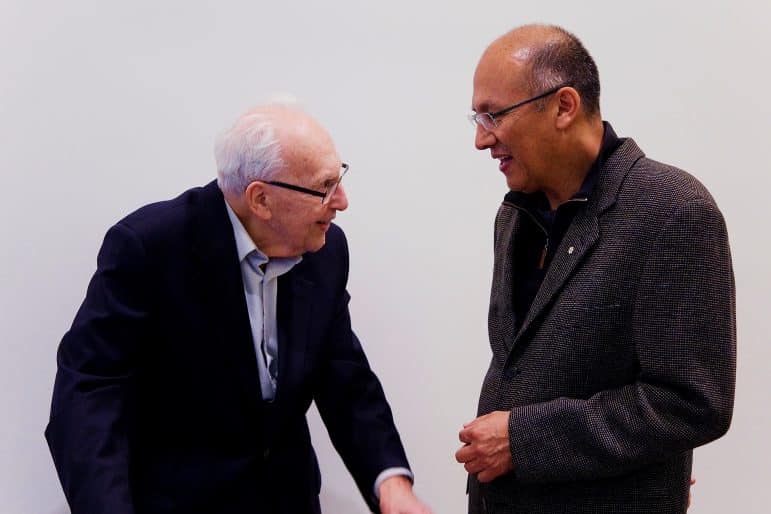
Dr. Nathan Kaufman with Gerald McMaster, Kaufman lecturer, 2011

Anthony E. Elms, Kaufman lecturer, 2013

Installation view, Mindy Yan Miller, drop out (2001), in Better Worlds, 2002. Photo: Cheryl O’Brien
Drs. Alfred and Isabel Bader donate Head of an Old Man in a Cap (around 1630) by Rembrandt van Rijn, the first painting by the master to enter a public collection in Canada in almost fifty years.
In the “mindscaping kingston mills” project, students from Queen Elizabeth Collegiate and Vocational Institute participate in an innovative workshop with Kingston artists Robert Mulder and Kristi Allik, a faculty member at Queen’s School of Music. Using sights and sounds from Kingston Mills Lock Station, they create short multimedia pieces. The project complemented Mulder and Allik’s exhibition Fragrances of Time and Space: Block D, an audio-visual invocation of the history of a former industrial site on Kingston’s waterfront.
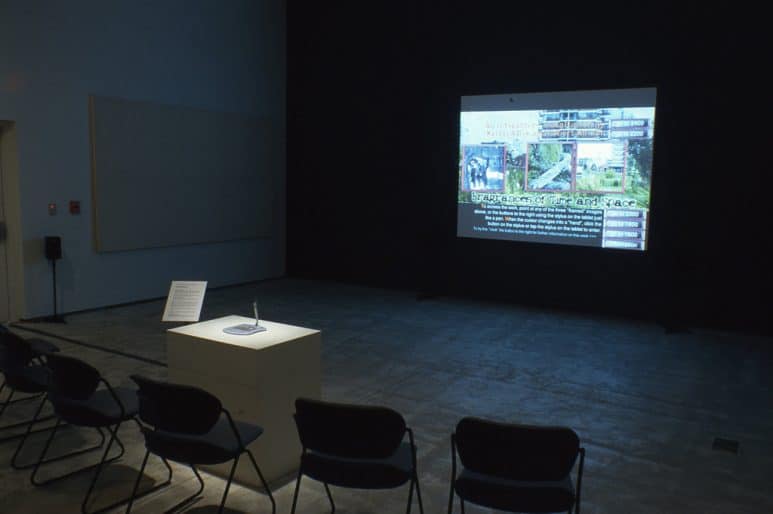
Installation view, Kristi Allik and Robert Mulder: Fragrances of Time and Space: Block D, 2003

Rembrandt van Rijn, Head of an Old Man in a Cap, around 1630, oil on panel. Gift of Alfred and Isabel Bader, 2003 (46-031)

Drs Isabel and Alfred Bader with Rembrandt’s Head of an Old Man in a Cap, 2003
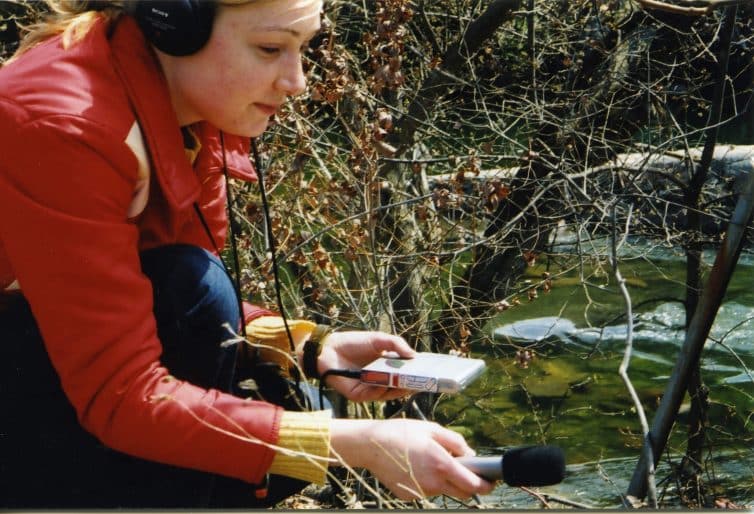
“mindscaping kingston mills” workshop with teens, 2003
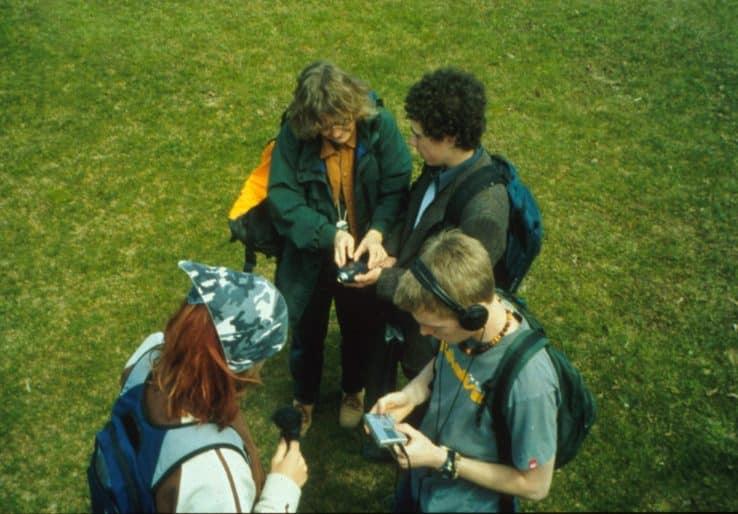
“mindscaping kingston mills” workshop with teens, 2003

Installation view, Kristi Allik and Robert Mulder: Fragrances of Time and Space: Block D, 2003

Rembrandt van Rijn, Head of an Old Man in a Cap, around 1630, oil on panel. Gift of Alfred and Isabel Bader, 2003 (46-031)
Norman White’s The Helpless Robot (1987–2002), purchased for the collection, is the focal point of the exhibition Machine Life, investigating artists’ use of robotics through the work of White and the circle of artists he taught and influenced. Further extending the Agnes’s contemporary programming internationally, Sarindar Dhaliwal: Record Keeping, co-organized by the Agnes and the Organization of Visual Arts (OVA), London, opens at Canada House, then tours in the UK and Canada over the next three years.
In the same year, Ah, Wilderness! Resort Architecture in the Thousand Islands meshes exhibition production with academic engagement as a project developed by Dr. Pierre du Prey and his Art History students. Similarly, Cache: Three Contemporary Videos from Igloolik, in the following year, is curated by graduate students under Dr. Lynda Jessup.
Pierre de la Ruffinière du Prey et al, Ah, Wilderness! Resort Architecture in the Thousand Islands, 2004

Norman White, The Helpless Robot, 1987–2002, steel, plywood, electronics and custom software. Purchased with the support of the Canada Council for the Arts Acquisition Assistance Program and the Chancellor Richardson Memorial Fund, 2003 (46-003)
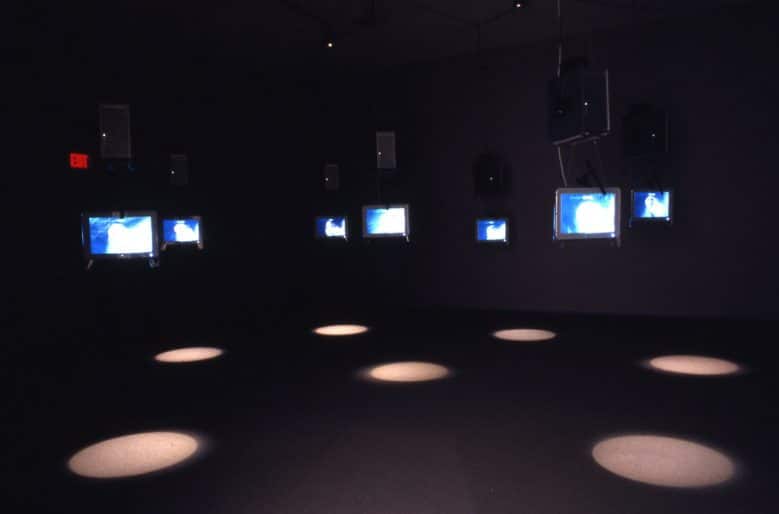
Installation view, Machine Life, 2004. Photo: Cheryl O’Brien

Installation view, Sarindar Dhaliwal, Punjabi Sheets #3: Birbansian, 1953 (1991), in Sarindar Dhaliwal Record Keeping, 2005

Sarindar Dhaliwal, Punjabi Sheets #2: Family Tree, 1989, pigment, slate and coconut shells. Purchased, Chancellor Richardson Memorial Fund and Canada Council Acquisition Assistance Fund, 1997 (40-036). Photo: Cheryl O’Brien

Installation view, Ah, Wilderness! Resort Architecture in the Thousand Islands, 2004
Pierre de la Ruffinière du Prey et al, Ah, Wilderness! Resort Architecture in the Thousand Islands, 2004

Norman White, The Helpless Robot, 1987–2002, steel, plywood, electronics and custom software. Purchased with the support of the Canada Council for the Arts Acquisition Assistance Program and the Chancellor Richardson Memorial Fund, 2003 (46-003)
Another form of student engagement, the second annual StART your year with ART! involves 446 Queen’s students with over a week of programs at the Agnes. The project spawns variations in the following years: stress busters, open houses and other studio events organized by students for students.
To mark 2005 as the 125th anniversary of Agnes Etherington’s birth, a new Celebrating Agnes Endowment Fund is established to support programming at the Agnes; and, in the following year, the James Richardson & Sons Limited Fund is created for ongoing upgrades and maintenance of the Agnes.
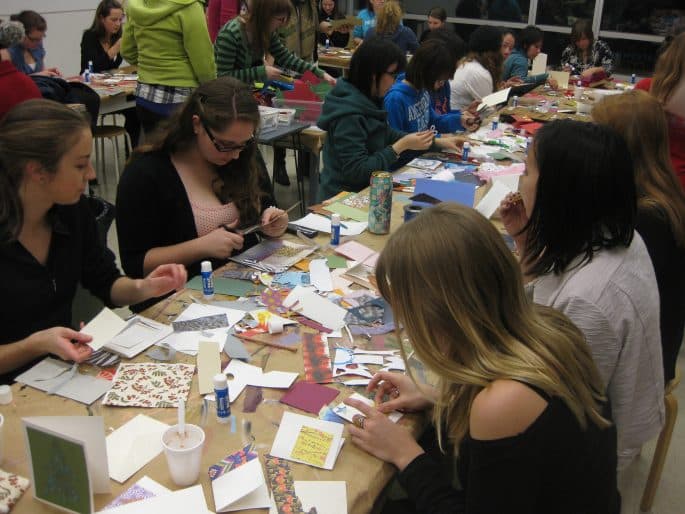
Queen’s University student stress buster, 2008
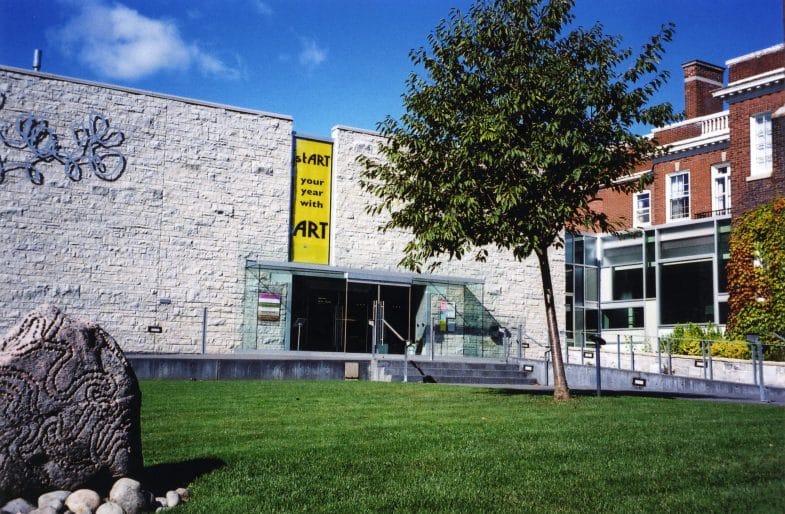
Façade view with StART Your Year with ART banner, 2004
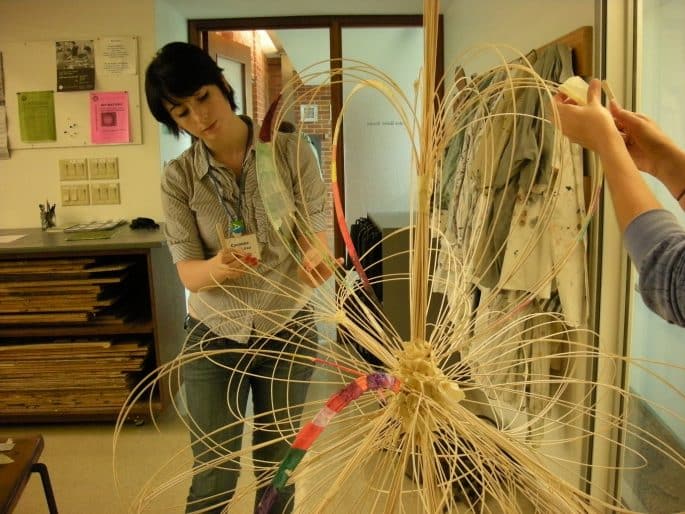
Queen’s University student stress buster, 2008

Queen’s University student stress buster, 2008

Façade view with StART Your Year with ART banner, 2004
An Artist After All: Daniel Fowler in Canada enriches the Agnes’s history of exhibitions devoted to this 19th-century local Amherst Island artist, building on shows mounted in 1964 and 1979. Curator Dorothy Farr wins an Ontario Association of Art Galleries Curatorial Writing Award for the catalogue essay. The exhibition provides occasion for the inaugural Frances K. Smith Lecture in Canadian Art by curator Charles C. Hill of the National Gallery of Canada.
In the same year, Neutrinos They Are Very Small, developed in partnership with the Art Gallery of Sudbury, presents three artists’ responses to the research of the Sudbury Neutrino Observatory, a major international research project headed by Queen’s University’s Dr. Arthur B. McDonald, who later receives a Nobel Prize.
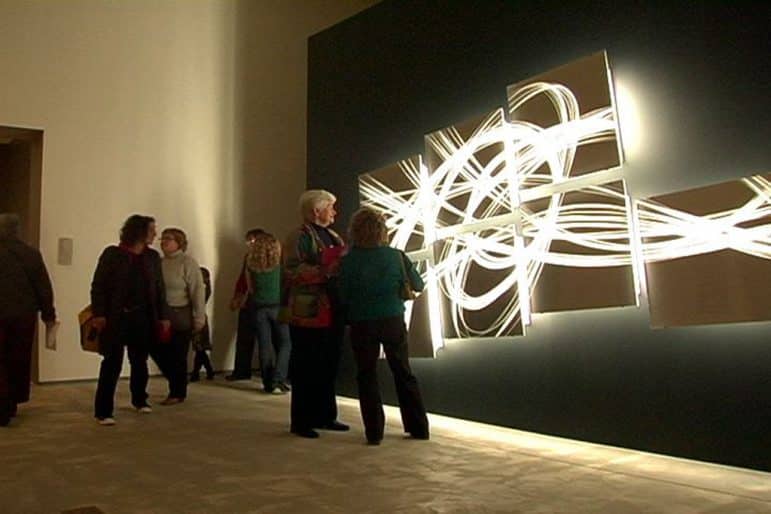
Gallery visitors, in Neutrinos They Are Very Small, 2006
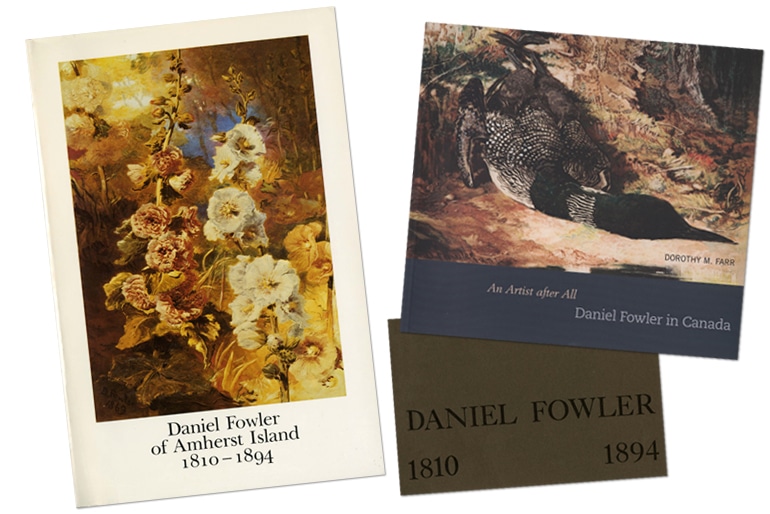
Frances K. Smith, Daniel Fowler of Amherst Island, 1810–1894, 1979, Dorothy Farr, An Artist After All: Daniel Fowler in Canada, 2006, and Ralph Allen, Daniel Fowler: An Exhibition, 1964
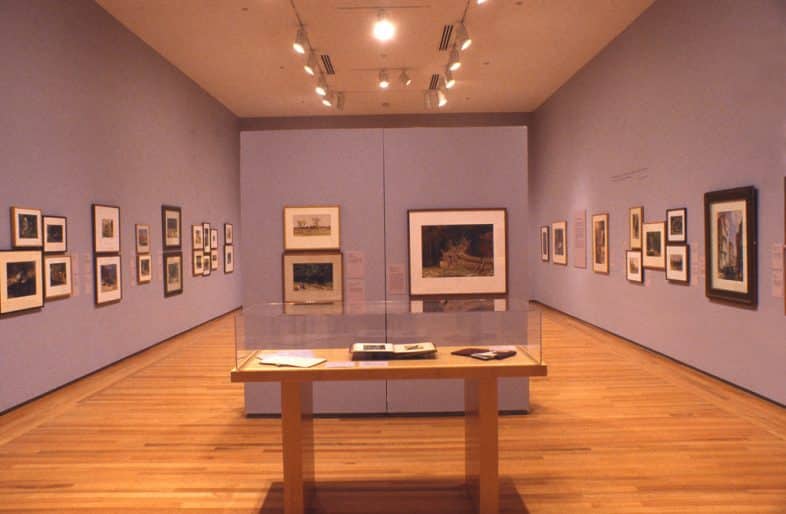
Installation view, An Artist After All, 2006
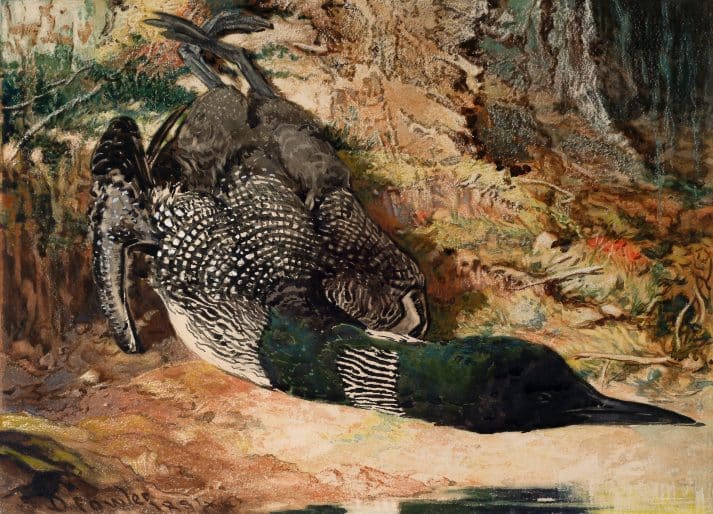
Daniel Fowler, Loon, 1881, watercolour on paper. Gift of Ernest C. Gill, 1966 (09-042)

Jan Allen, Corinna Ghaznavi and Allison Morehead, Neutrinos They Are Very Small, 2006

Gallery visitors, in Neutrinos They Are Very Small, 2006

Frances K. Smith, Daniel Fowler of Amherst Island, 1810–1894, 1979, Dorothy Farr, An Artist After All: Daniel Fowler in Canada, 2006, and Ralph Allen, Daniel Fowler: An Exhibition, 1964
As part of the Agnes’s 50th anniversary celebration, Roll Out unfolds in the galleries. Beginning with the first piece acquired, works are hung in the order in which they entered the collection, refreshed with later acquisitions throughout the run. Agnes Etherington: A Legacy, by Public Programs Officer Pat Sullivan, is published, along with Beyond the Silhouette: Fashion and the Women of Historic Kingston by M. Elaine MacKay, the first exhibition catalogue focusing on the Queen’s University Collection of Canadian Dress.
In another cause for celebration, a second painting by Rembrandt van Rijn, Head of a Man in a Turban (around 1661), joins The Bader Collection.

Rembrandt van Rijn, Head of a Man in a Turban, around 1661, oil on oak panel. Gift of Alfred and Isabel Bader, 2007 (50-001). Photo: Paul Litherland
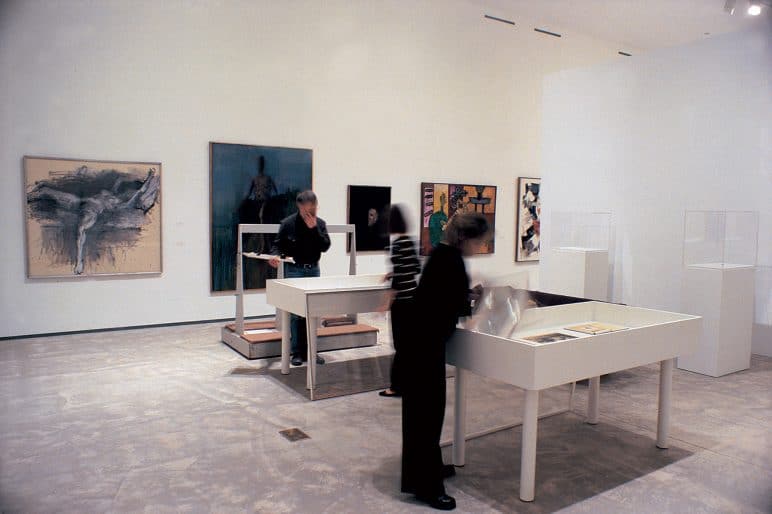
Installation in progress, Roll Out, 2007
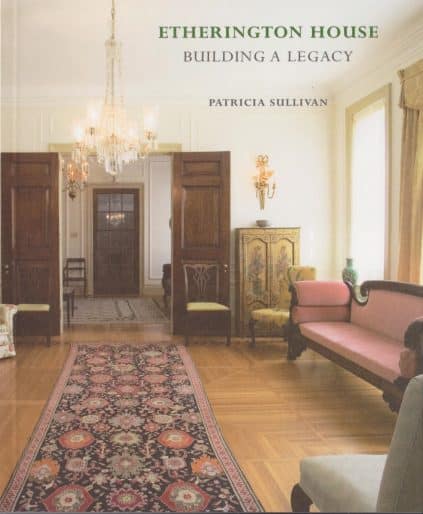
Patricia Sullivan, Agnes Etherington: A Legacy, 2007
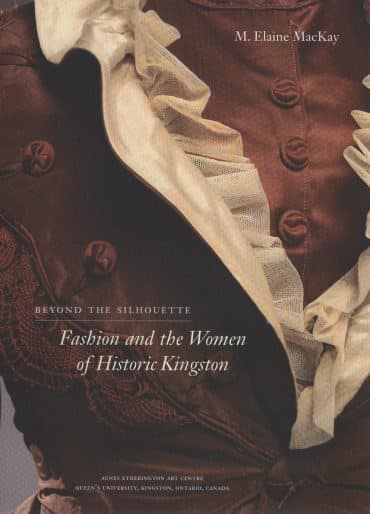
M. Elaine MacKay, Beyond the Silhouette: Fashion and the Women of Historic Kingston, 2007

Rembrandt van Rijn, Head of a Man in a Turban, around 1661, oil on oak panel. Gift of Alfred and Isabel Bader, 2007 (50-001). Photo: Paul Litherland

Installation in progress, Roll Out, 2007
The in-gallery film Community Matters: The Art of Carole Condé and Karl Beveridge is created for the retrospective, touring exhibition Carole Conde and Karl Beveridge: Working Culture, expanding the Agnes’s interpretive offerings. The short documentary features the artist-activist duo working in their studio and discussing their practice, as well as informed commentators on the significance of their work. The project wins the first Ontario Association of Art Galleries (OAAG) Visual Art Film Award. Jan Allen also receives an OAAG Curatorial Writing Award for her essay in Condé and Beveridge: Class Works, co-published with NSCAD University Press.
Harun Farocki: One Image Doesn’t Take the Place of the Previous One, organized by the Leonard & Bina Ellen Gallery, Concordia University, is the first exhibition in North America to bring together installations by the German filmmaker.
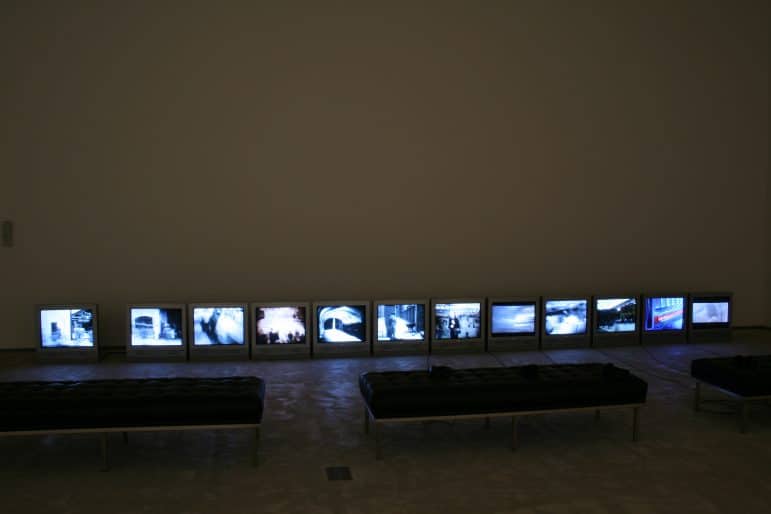
Installation view, Harun Farocki: One Image Doesn’t Take the Place of the Previous One, 2008

Carole Condé and Karl Beveridge, The Fall of Water, 2006-2007, light jet print. Purchase, J. Stuart Fleming Fund, 2011 (54-002.02)

Installation view, Carole Condé and Karl Beveridge: Working Culture, 2008

Work in Progress banner, on Queen’s University campus, as part of Carole Condé and Karl Beveridge: Working Culture, 2008

Installation view, Harun Farocki: One Image Doesn’t Take the Place of the Previous One, 2008

Carole Condé and Karl Beveridge, The Fall of Water, 2006-2007, light jet print. Purchase, J. Stuart Fleming Fund, 2011 (54-002.02)
The Solo Studio-Watch Series spans the year with solo exhibitions by six local artists, held in the former study of Agnes Etherington’s husband, Dr. Frederick Etherington. The Study is one of Etherington House’s few spaces (along with the Dining Room prior to 2000) that retain a historical feel while also serving as programmed gallery space. Since the gallery’s inception, the downstairs front rooms of Etherington House are maintained as they were in Agnes Etherington’s lifetime, with occasional artistic interventions.
The Agnes is busy lending works from its collection to institutions around the world. Among them, Jan Lievens’s Profile Head of an Old Woman (around 1630) travels to Amsterdam, Washington and Milwaukee; Parmigianino’s The Holy Family with Saint Elizabeth and the Infant Baptist (around 1524–1527) to Ottawa; Marlene Creates’s Questions about the Place, Nova Scotia, 1998 (1998) to Regina; El Greco’s The Adoration of the Shepherds (around 1567) to New York City; and Arthur Lismer’s Quebec Village (1926) to Hamilton. In the most recent decade, the Agnes averages eight loans annually with two going to international venues.
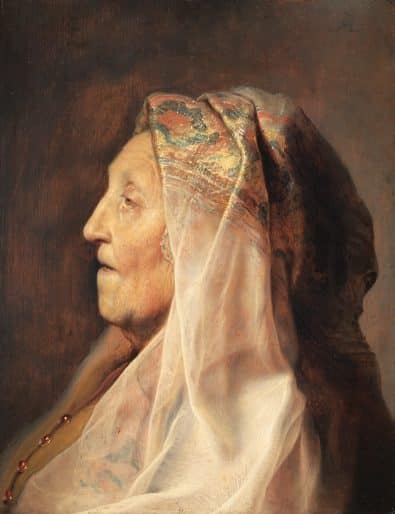
Jan Lievens, Profile Head of an Old Woman, around 1630, oil on panel. Gift of Alfred and Isabel Bader, 2005 (48-001)
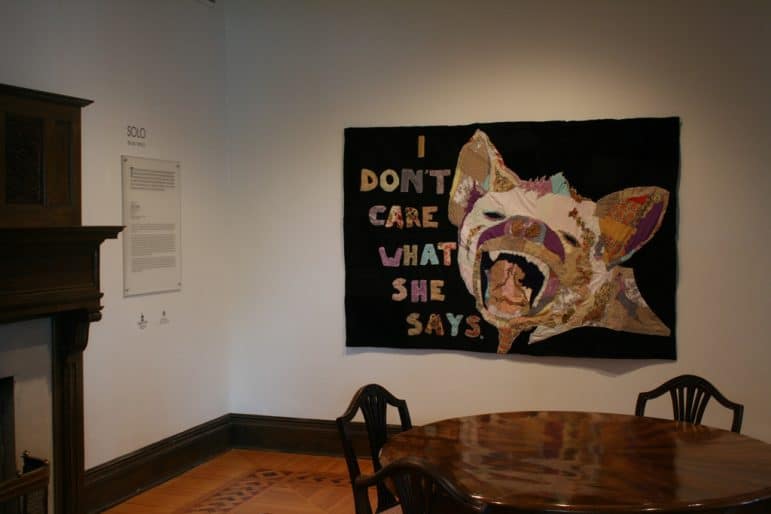
Installation view, Feature Artist: Lisa Visser, Solo Studio-Watch Series, 2009
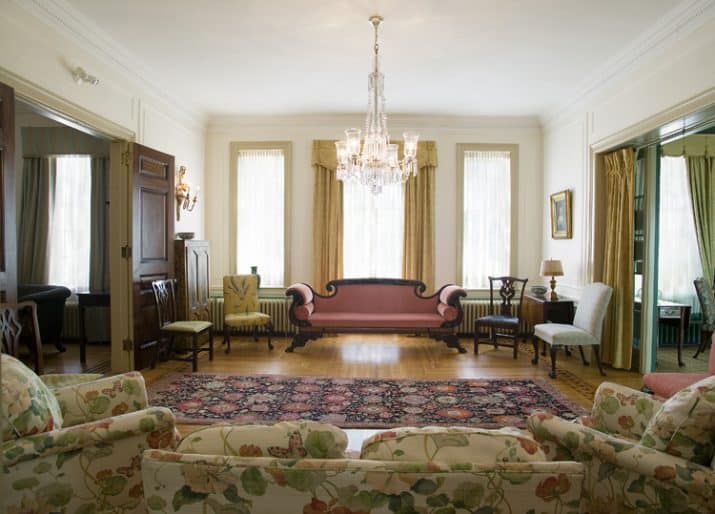
Drawing Room, Etherington House, 2009

Jan Lievens, Profile Head of an Old Woman, around 1630, oil on panel. Gift of Alfred and Isabel Bader, 2005 (48-001)

Installation view, Feature Artist: Lisa Visser, Solo Studio-Watch Series, 2009
Sorting Daemons: Art, Surveillance Regimes and Social Control, curated by Jan Allen and PhD candidate Sarah E. K. Smith, addresses the widening data net in collaboration with “The New Transparency” project of Queen’s Surveillance Studies Centre. As part of the exhibition, Kathleen Ritter’s Hidden Camera (2006) is installed at the Union Gallery. Another exhibition, Don Maynard: Franken Forest, plumbs environmental anxieties, through local artist Maynard’s fantastical grove of trees.
To acknowledge an invaluable campus-based fund, New Canadiana: The Chancellor Richardson Memorial Fund and Art as Social History exhibits Canadian works purchased with the fund’s assistance since 1973. By 2017, the Chancellor Richardson Memorial Fund makes 663 acquisitions possible at the Agnes.
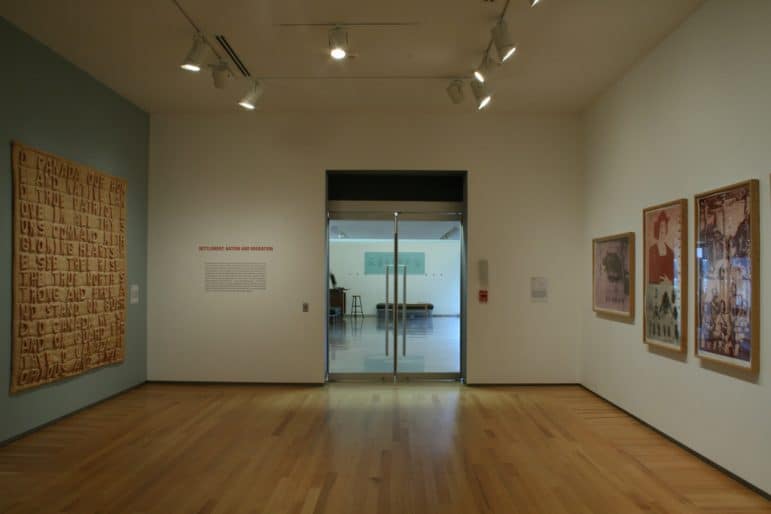
Installation view, New Canadiana: The Chancellor Richardson Memorial Fund and Art as Social History, 2010
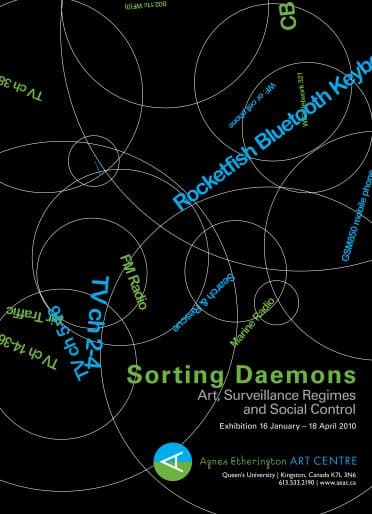
Poster, Sorting Daemons: Art, Surveillance Regimes and Social Control, 2010

Installation view, David Rokeby, Sorting Daemon (2003), in Sorting Daemons, 2010. Photo: Paul Litherland
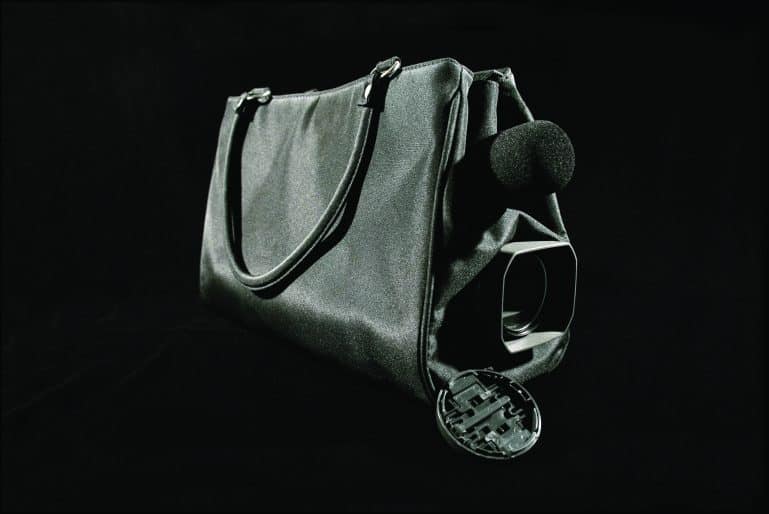
Kathleen Ritter, Hidden Camera, 2006, pigment print, 1/5. Purchase, J. Stuart Fleming Fund, 2011 (54-019)

Installation view, Don Maynard: Franken Forest, 2010
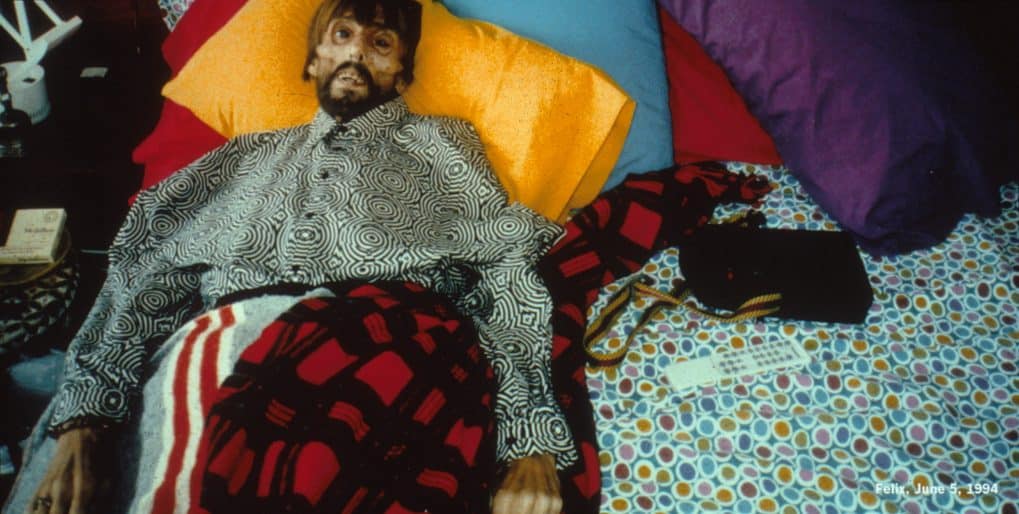
AA Bronson, Felix, June 5, 1994, 2000, photograph, 2/3. Purchase, Canada Council for the Arts Acquisition Assistance Program and the Chancellor Richardson Memorial Fund, 2001 (44-015)

Installation view, New Canadiana: The Chancellor Richardson Memorial Fund and Art as Social History, 2010

Poster, Sorting Daemons: Art, Surveillance Regimes and Social Control, 2010
Caterina Florio is the first Isabel Bader Fellow in Textile Conservation and Research in residence at Queen’s. Jointly offered every two years by the Agnes and Queen’s Master of Art Conservation Program, the fellow and a graduate intern support learning and the study, care and treatment of historical textiles, especially the Queen’s University Collection of Canadian Dress.
The Summer SmARTS series of one-week programs for children and youth are initiated with the support of the Iva Speers Fund for Art Education, created by bequest in 2007. Due to continuing popular demand, camp sessions increase to three weeks in 2015.
Another important bequest, The Donald Murray Shepherd Fund becomes a vital source for acquiring significant Canadian art.
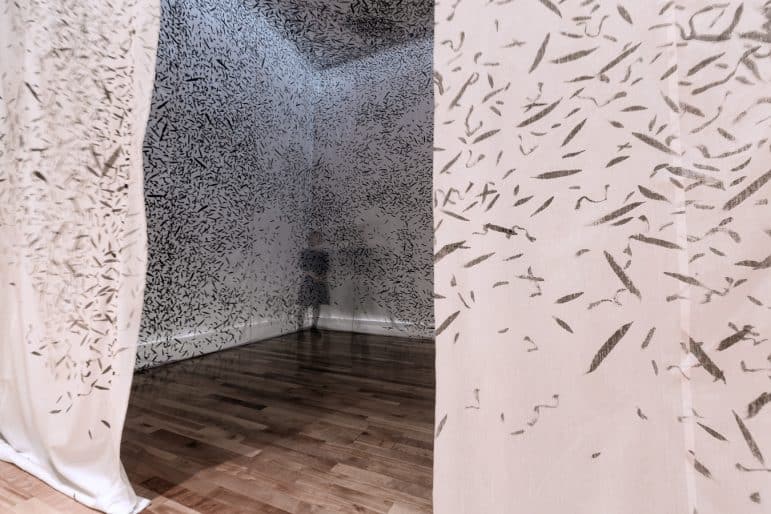
Jinny Yu, Don’t They Ever Stop Migrating?, 2015, ink on polyester and cotton fabric and sound installation. Purchase, the Canada Council for the Arts Acquisition Grants program and the Donald Murray Shepherd Fund, 2016 (59-012)

Caterina Florio, Isabel Bader Research Fellow in Textile Conservation, 2011

Summer SmARTs camp, with Peter Kolisnyk’s outdoor sculpture Ground Outline (1978) on Queen’s campus, 2011
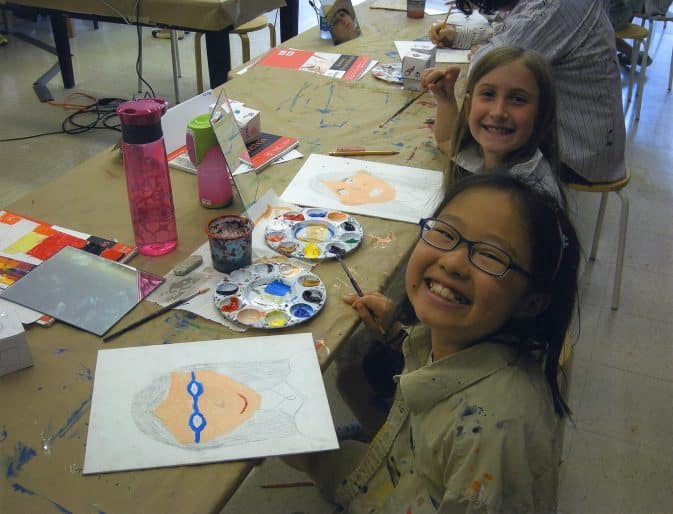
Summer SmARTs camp, 2015

Marian Dale Scott, Tulip, around 1939, oil on canvas. Purchase, Chancellor Richardson Memorial Fund and Donald Murray Shepherd Bequest Fund, 2012 (55-016). Photo: Paul Litherland

Jinny Yu, Don’t They Ever Stop Migrating?, 2015, ink on polyester and cotton fabric and sound installation. Purchase, the Canada Council for the Arts Acquisition Grants program and the Donald Murray Shepherd Fund, 2016 (59-012)

Caterina Florio, Isabel Bader Research Fellow in Textile Conservation, 2011
Ottawa philanthropist Ruth Soloway donates sixty-one paintings, prints, drawings and sculpture from her collection, making it one of the most significant gifts of Canadian art in the gallery’s history.
Two exhibitions respond to the bicentennial of the War of 1812. In Howie Tsui: Friendly Fire, a collaboration with the Museum of Health Care, the artist incorporates and responds to 1812-era medical instruments and practices, undermining dominant narratives that historicize the war, while Art, Elegance and Hospitality: The War of 1812 contemplates the war’s impact on cultural life in Kingston. A riveting cross-disciplinary series of talks, Beyond the Battlefield: The World of 1812, addresses both shows. At the reception, members of the Heritage Ambassadors, in historical dress, mingle with guests.

Reception, Beyond the Battlefield program, with the Heritage Ambassadors of Kingston in period dress, 2012
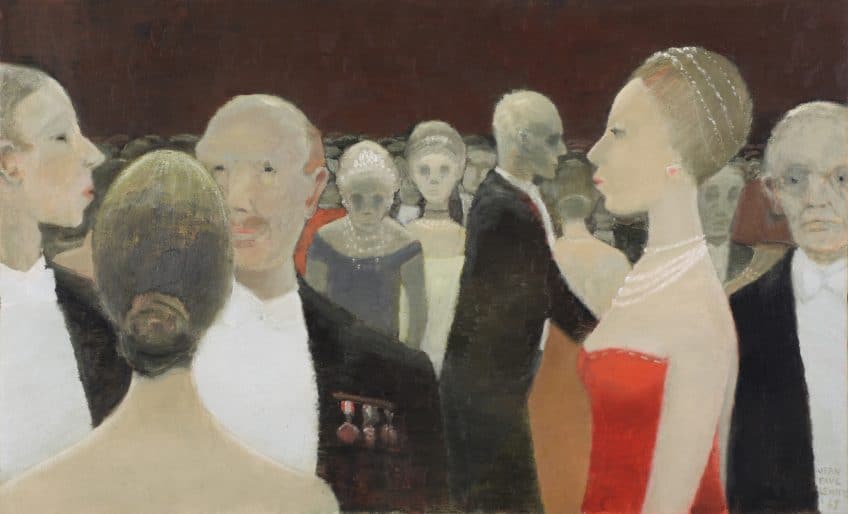
Jean Paul Lemieux, Le beau monde, 1969, oil on canvas. Gift of Mrs. Ruth Soloway, 2012 (55-004.29). Photo: Bernard Clark

Installation view, Howie Tsui Friendly Fire, 2012
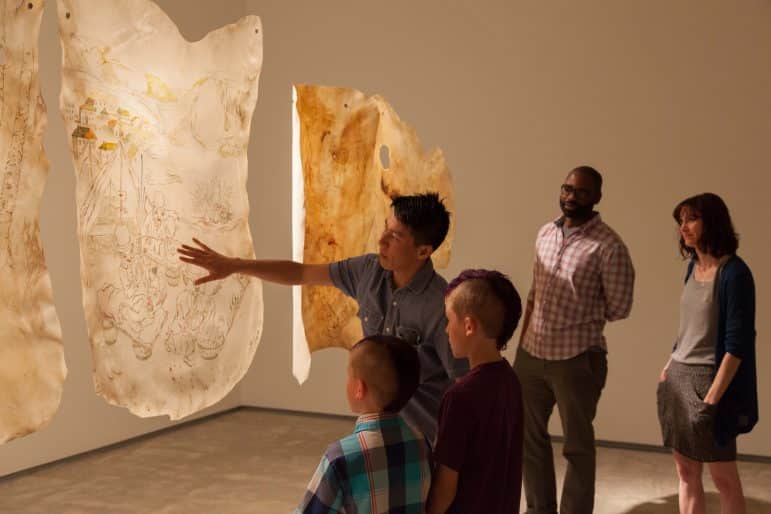
Howie Tsui, artist, with visitors in Howie Tsui Friendly Fire, 2012
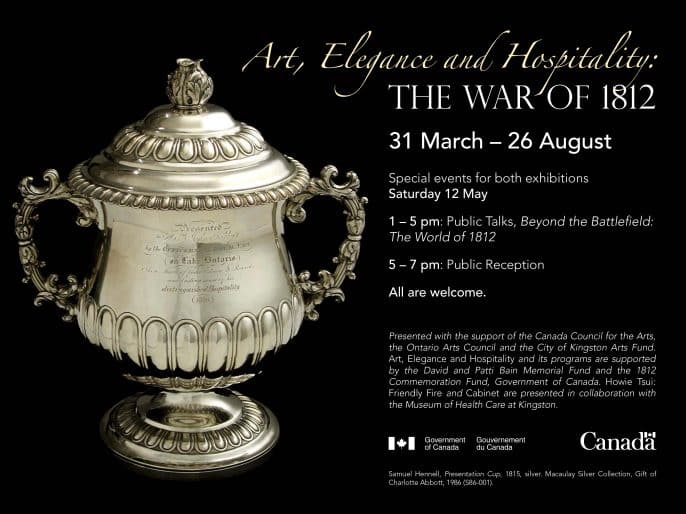
Invitation, Art, Elegance and Hospitality: The War of 1812, 2012

Reception, Beyond the Battlefield program, with the Heritage Ambassadors of Kingston in period dress, 2012

Jean Paul Lemieux, Le beau monde, 1969, oil on canvas. Gift of Mrs. Ruth Soloway, 2012 (55-004.29). Photo: Bernard Clark
The Agnes hosts Student Affairs’ Canvas on Campus, welcoming first-year students, who deposit “canvases” about their experience of coming to Queen’s in the Atrium.
A Vital Force: The Canadian Group of Painters is the first major touring exhibition to focus exclusively on this artistic group from the 1930s to 1950s. Alicia Boutilier, Curator of Canadian Historical Art, receives an Ontario Association of Art Galleries Curatorial Writing Award for her catalogue essay. Akram Zaatari: All Is Well, guest curated by Victoria Moufawad-Paul, is the first Canadian solo exhibition of works by one of Lebanon’s most respected contemporary artists.
The Agnes arranges for photographer Geoffrey James to visit Kingston Penitentiary through its final months of operation. The resulting show, Geoffrey James: Inside Kingston Penitentiary, is presented the following year, and forty-five of his photographs are acquired.
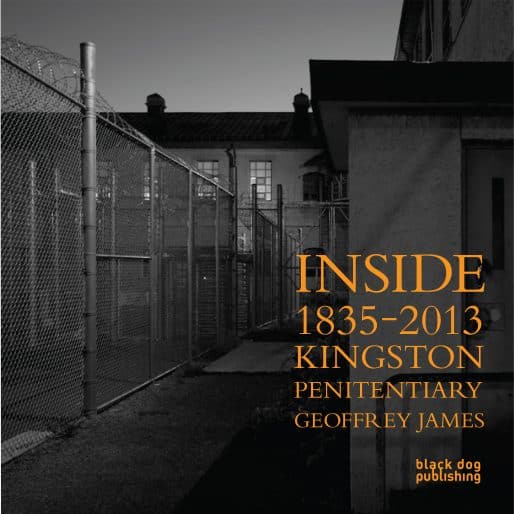
Geoffrey James and Jan Allen, Inside Kingston Penitentiary (1835–2013): Geoffrey James, 2014

Canvas on Campus, 2015
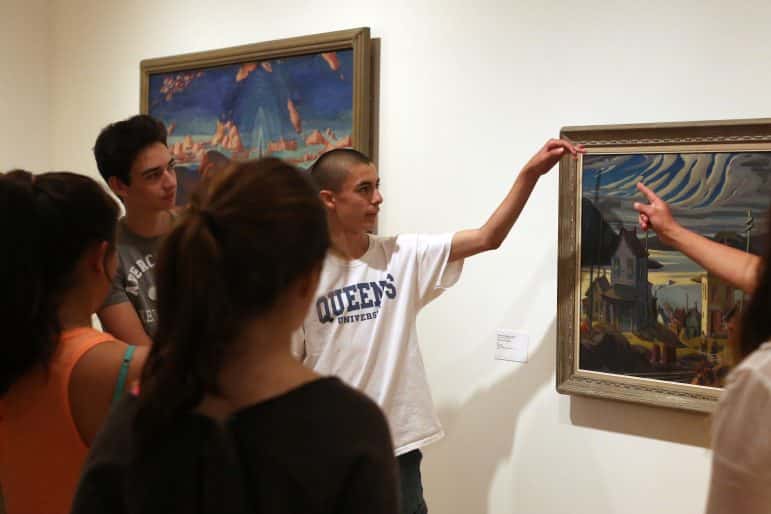
School tour in A Vital Force, 2013
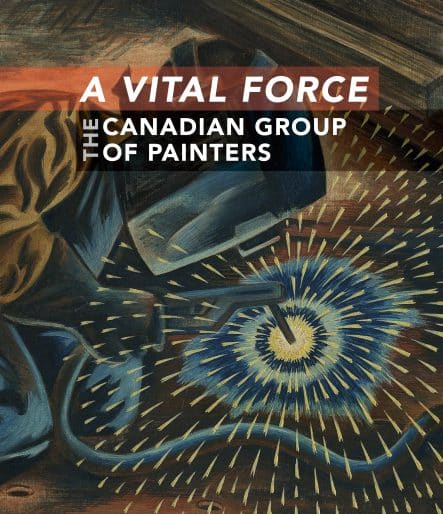
Alicia Boutilier, Anna Hudson, Heather Home and Linda Jansma, A Vital Force: The Canadian Group of Painters, 2013
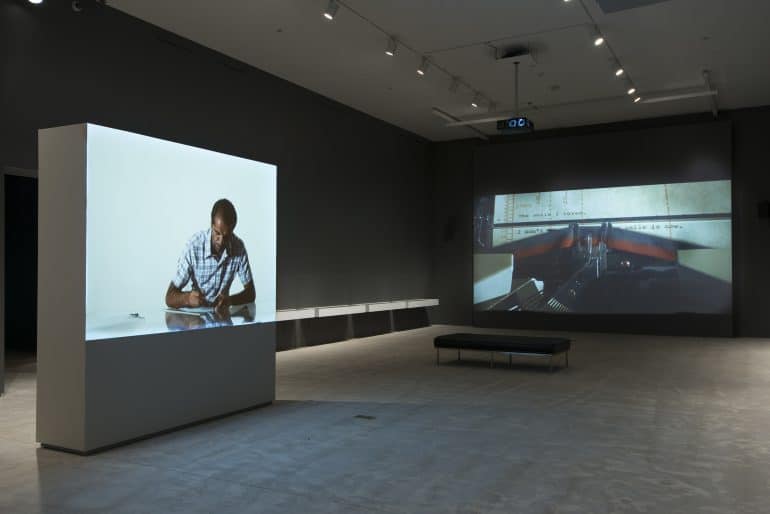
Installation view, Akram Zaatari: All Is Well, 2013
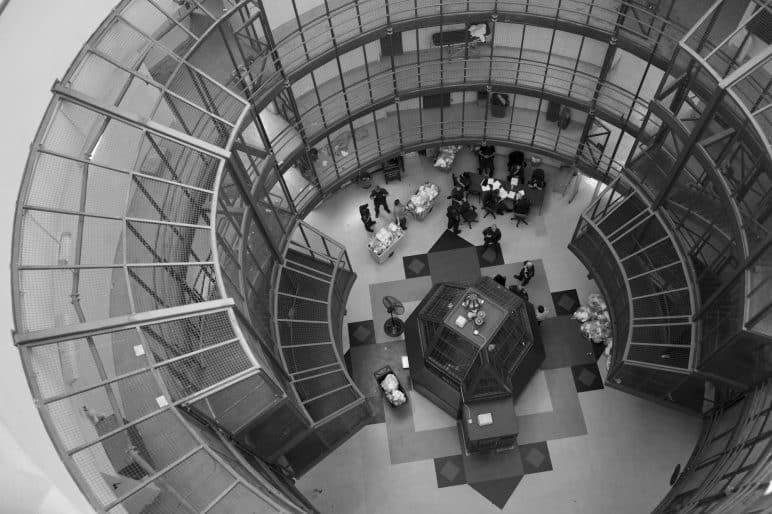
Geoffrey James, The Dome from above, 2013, photograph, 1/10, Purchase, J. Stuart Fleming Fund and Donald Murray Shepherd Bequest Fund, 2014 (57-003.01)

Geoffrey James and Jan Allen, Inside Kingston Penitentiary (1835–2013): Geoffrey James, 2014

Canvas on Campus, 2015
Bader Curator of European Art David De Witt publishes his second volume on the Bader collection, The Bader Collection: European Paintings, following upon his authoritative 2008 The Bader Collection: Dutch and Flemish Paintings. The publication caps a transformative donation by Drs. Alfred and Isabel Bader of sixty-eight paintings. To sustain and enhance work with the Bader Collection, the couple generously creates the Bader Legacy Fund.
Sunny Kerr is appointed Curator of Contemporary Art and Norman Vorano, cross-appointed to Art History and the Agnes as a Queen’s National Scholar, becomes the Agnes’s first Curator of Indigenous Art.
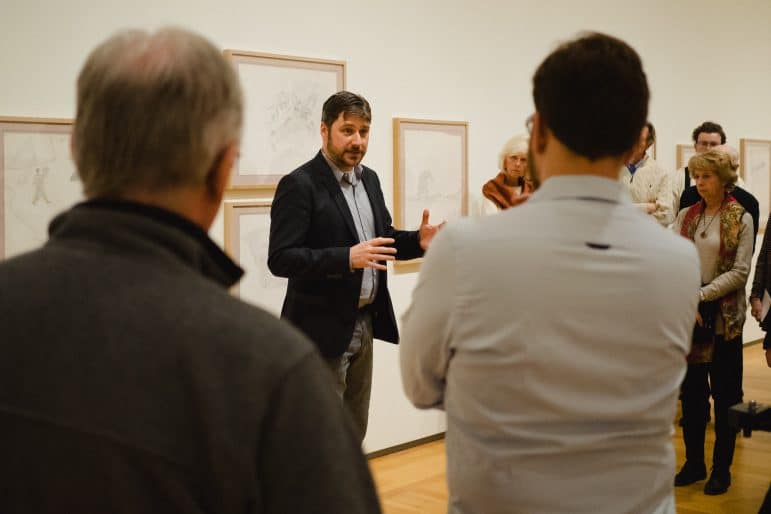
Norman Vorano, Curator of Indigenous Art, in Picturing Arctic Modernity, 2017
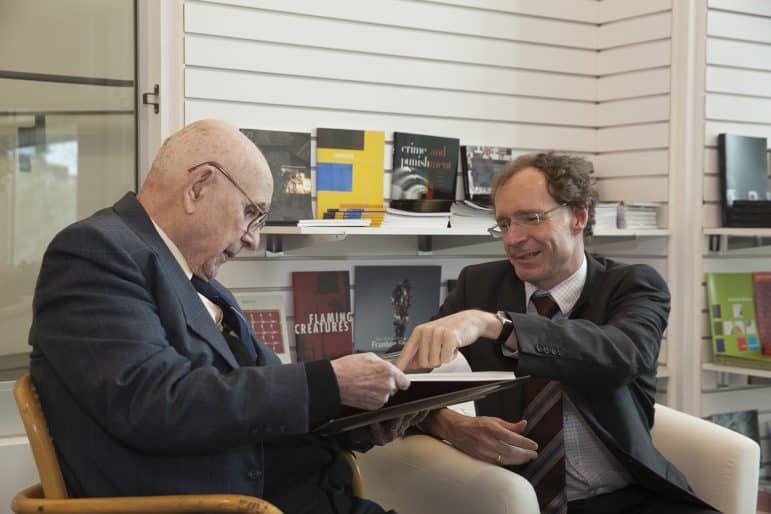
David de Witt, Bader Curator of European Art, with Dr. Alfred Bader looking at The Bader Collection: European Paintings, 2014

David de Witt, The Bader Collection: European Paintings, 2014 and The Bader Collection: Dutch and Flemish Paintings, 2008
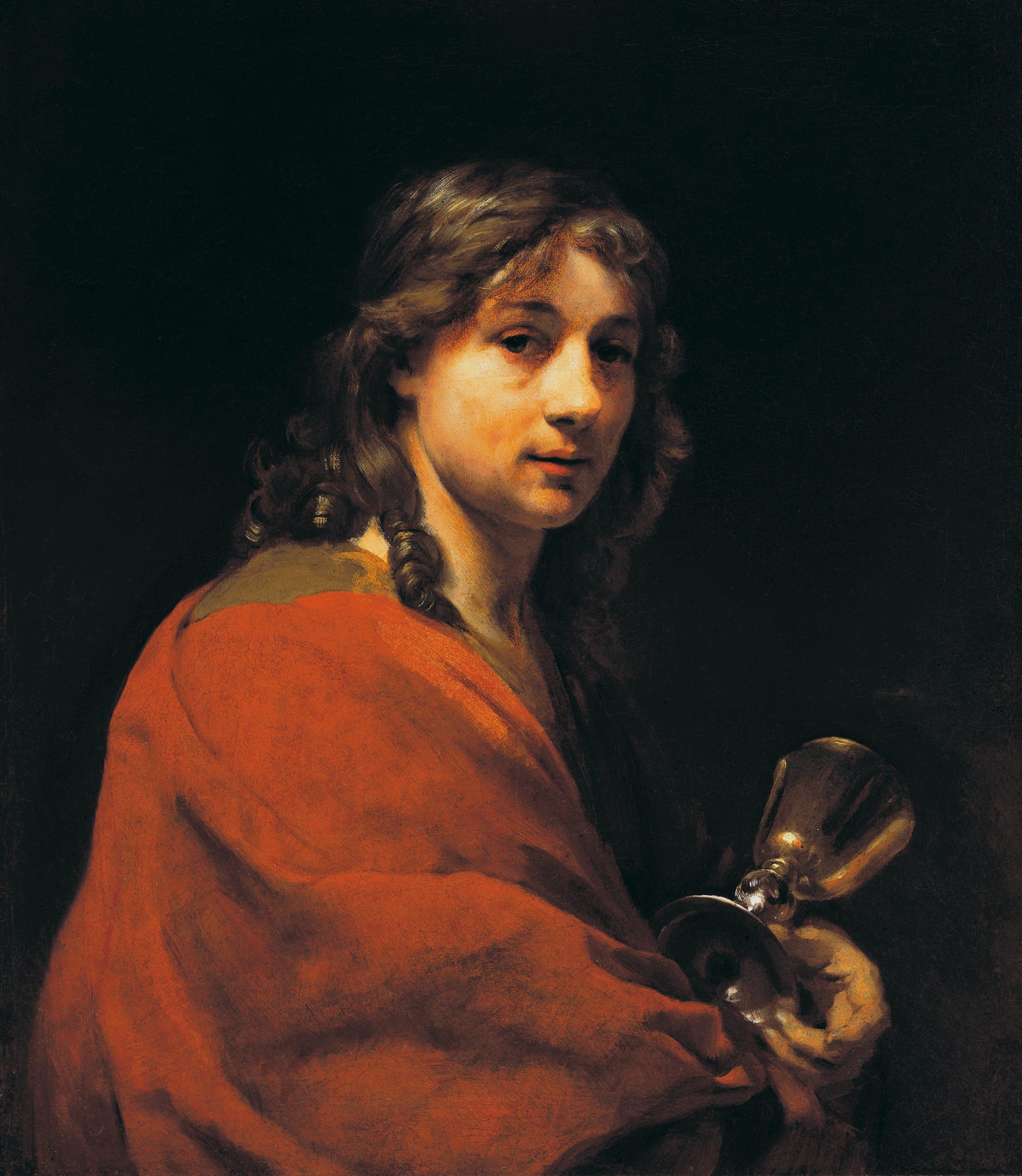
Willem Drost, Self-Portrait as St. John the Evangelist, around 1655, oil on canvas. Gift of Alfred and Isabel Bader, 2013 (56-003.13)
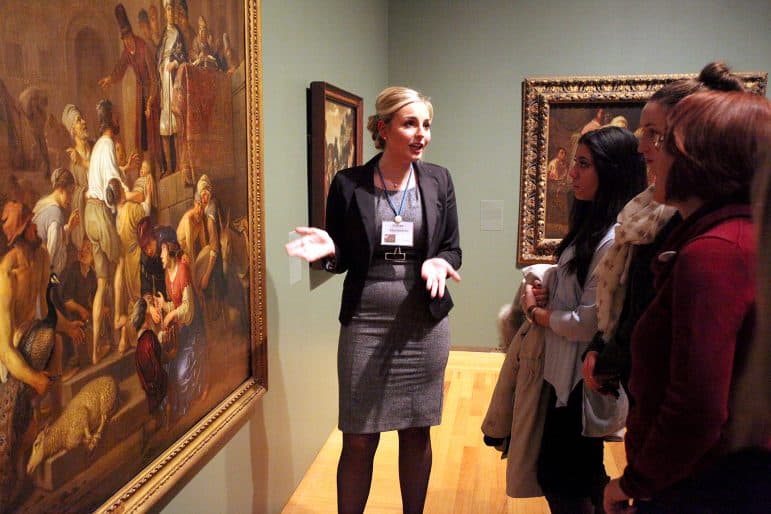
Kirsten Christopherson, graduate student, presenting in the exhibition Rembrandt’s Circle: Making History, curated by Stephanie Dickey, Bader Chair in Northern Baroque Art, with her Topics in Northern Renaissance and Baroque Art class, 2014
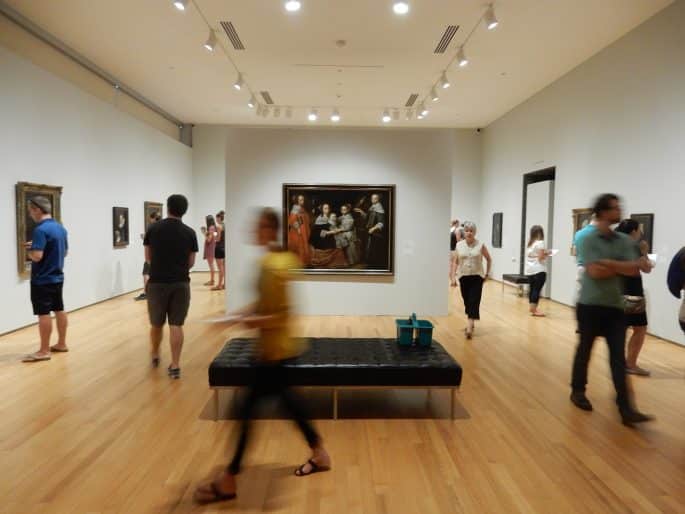
Queen’s University students in Medicine develop their observational skills in The Bader Gallery, 2016

Sunny Kerr, Curator of Contemporary Art, in The hold: studies in the contemporary collection, 2016

Norman Vorano, Curator of Indigenous Art, in Picturing Arctic Modernity, 2017

David de Witt, Bader Curator of European Art, with Dr. Alfred Bader looking at The Bader Collection: European Paintings, 2014
Charles Stankievech’s Monument as Ruin extends the Agnes’s curatorial investment in themes of surveillance and wins a Solo Exhibition of the Year Award from the Ontario Association of Art Galleries.
The Artist Herself: Self-Portraits by Canadian Historical Women Artists, co-produced with the Art Gallery of Hamilton, is the first exhibition to focus on self-portraits by historical women artists in Canada, and a first, for the Agnes, to use in-gallery interactive tablets. 2015 also features two exhibitions curated by Queen’s graduate students as part of the Art History practicum course: I hope humanity… by Elysia French and The Park and the Forest by Marla Dobson.
The collections database is made available online for browsing and searching, through the efforts of Collections Manager Jennifer Nicoll and a team of assistants. In 2016, Nicoll receives the Ontario Association of Art Galleries Colleague of the Year Award.
The Agnes’s new Bader Curator and Researcher of European Art, Jacquelyn N. Coutré, shepherds in the gallery’s third Rembrandt gift from Drs. Alfred and Isabel Bader. Portrait of a Man with Arms Akimbo (1658) is unveiled to the public the following year, making the Agnes the repository for three of the six authenticated paintings by Rembrandt in public Canadian collections.
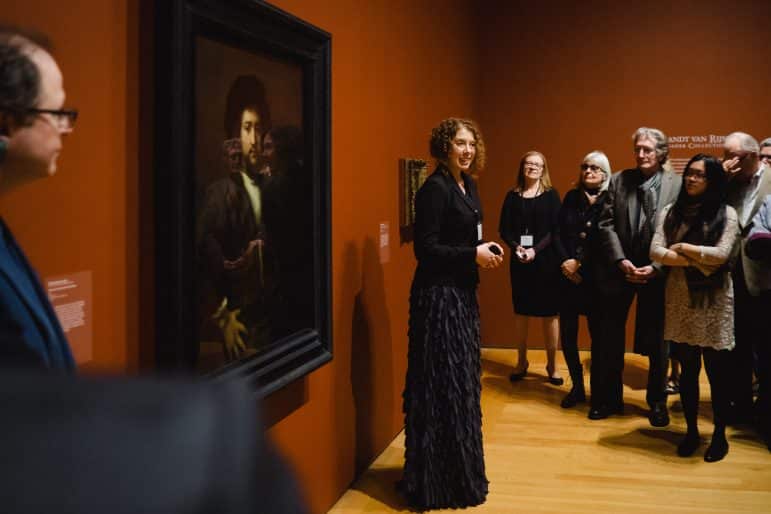
Jacquelyn N. Coutré, Bader Curator and Researcher of European Art, with Rembrandt’s Portrait of a Man with Arms Akimbo (1658), 2016
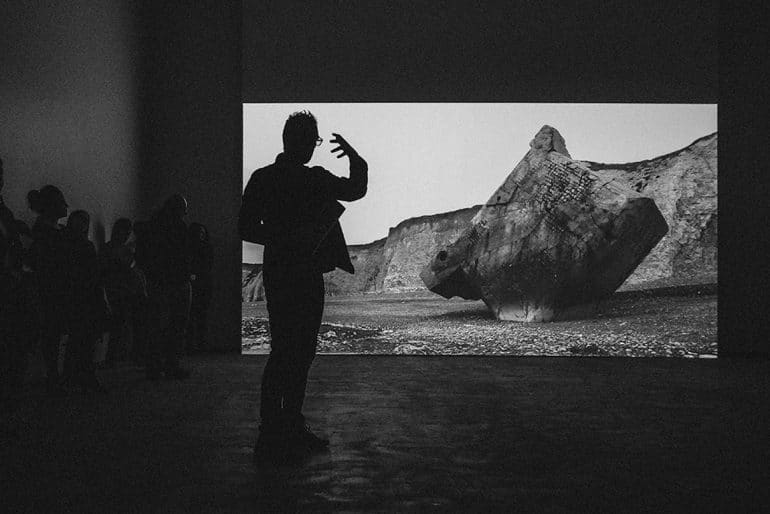
Charles Stankievech, artist’s talk in Charles Stankievech: Monument as Ruin, 2015
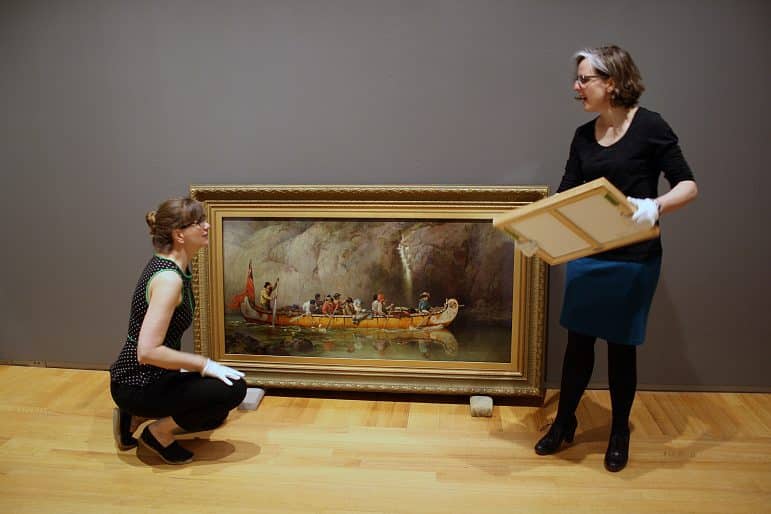
Installation in progress, Tobi Bruce and Alicia Boutilier, curators of The Artist Herself, 2015

Installation view at the Season Launch, The Artist Herself, 2015
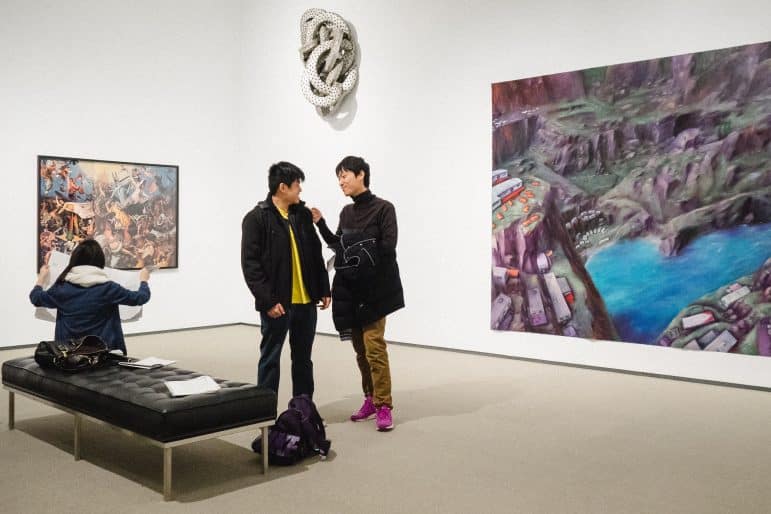
Queen’s Art History class in I hope humanity…, 2015
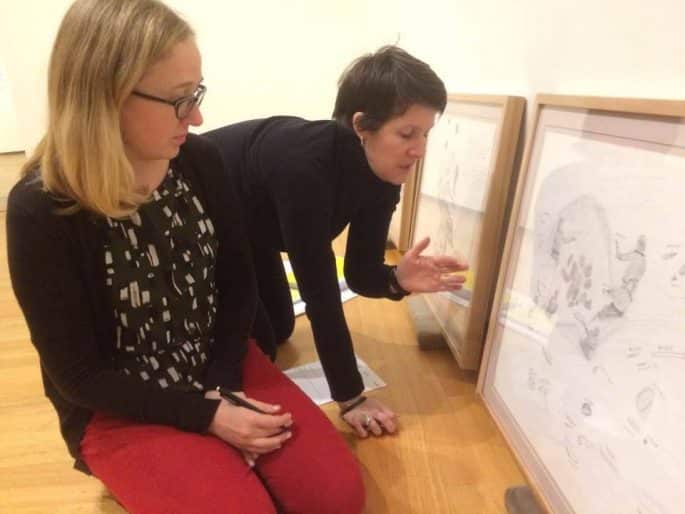
Jennifer Nicoll, Collections Manager, assessing artwork with Marla Dobson, Collections Assistant, 2017
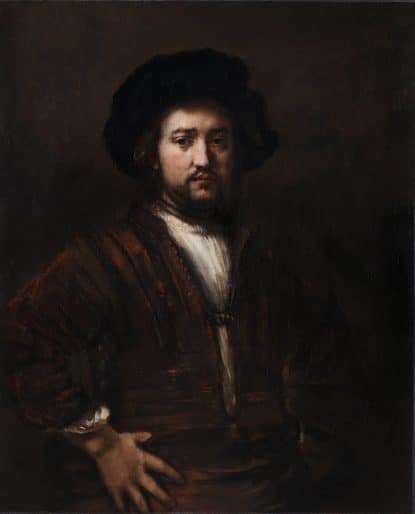
Rembrandt van Rijn, Portrait of a Man with Arms Akimbo, 1658, oil on canvas. Gift of Alfred and Isabel Bader, 2015 (58-008)

Jacquelyn N. Coutré, Bader Curator and Researcher of European Art, with Rembrandt’s Portrait of a Man with Arms Akimbo (1658), 2016

Charles Stankievech, artist’s talk in Charles Stankievech: Monument as Ruin, 2015
Brendan Fernandes: Lost Bodies and Stories to Tell: Africans and the Diaspora Respond to the Lang Collection bring artists and community members into dialogue with the Justin and Elisabeth Lang Collection of African Art. Both exhibitions challenge the problematic history of colonial-era appropriation, collection and display of African art in Western museums. Lost Bodies also incorporates objects from exhibiting partner the Textile Museum of Canada. At the opening, Lost Bodies is activated through dance performance by Lua Shayenne; and the newly acquired mask-based neon sculpture by Fernandes, 1978.412.367 (2010), flashes above the gallery entrances.
Visiting Artist-in-Residence Ciara Phillips’s Workshop (2010–ongoing) transforms the Davies Foundation Gallery into a participatory screen-printing studio as part of her exhibition Ciara Phillips: Comrade Objects.
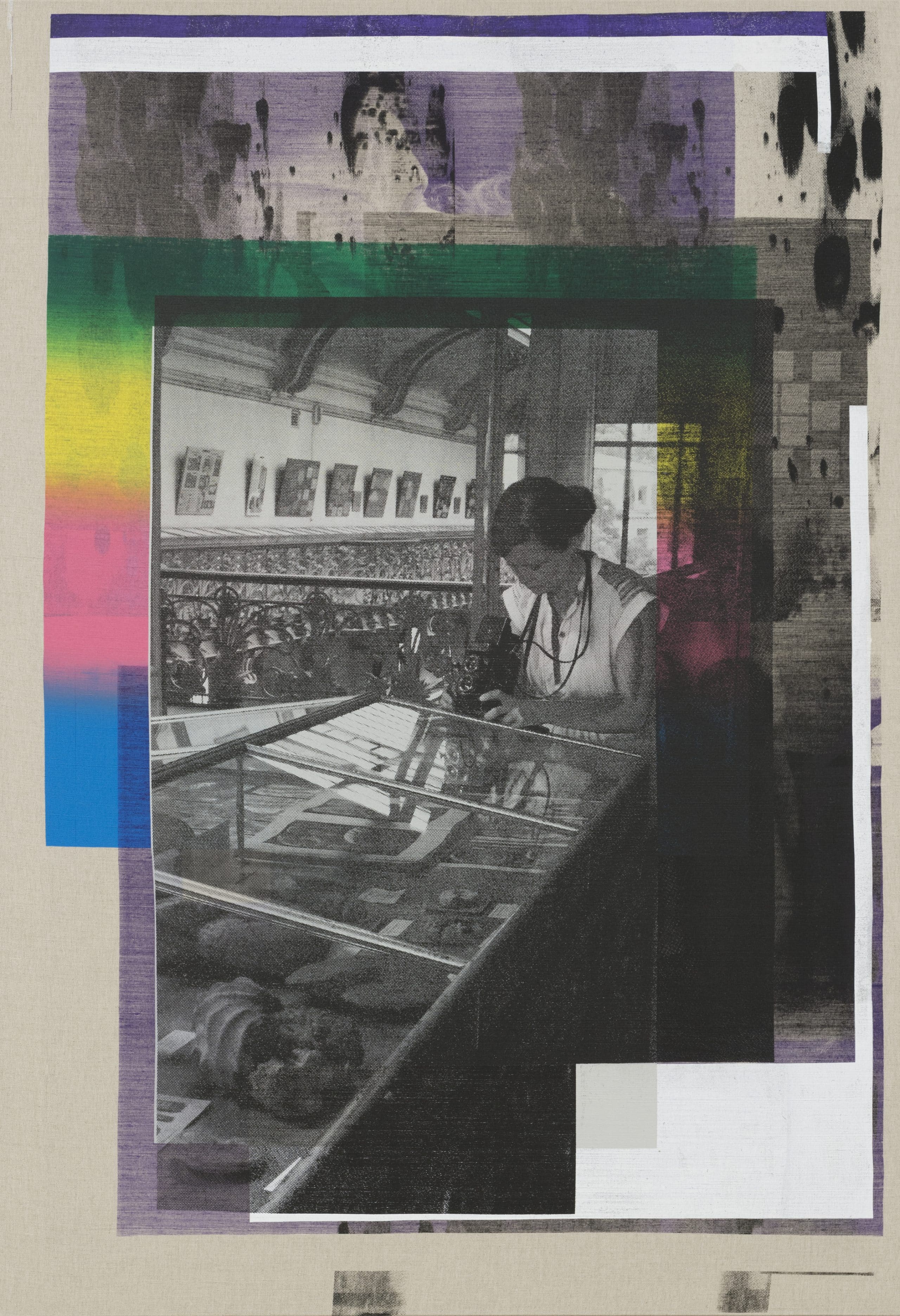
Ciara Phillips, Corin Looking, 2015, screenprint on linen. Purchase, Gallery Association Purchase Fund, 2017. Photo: Paul Litherland
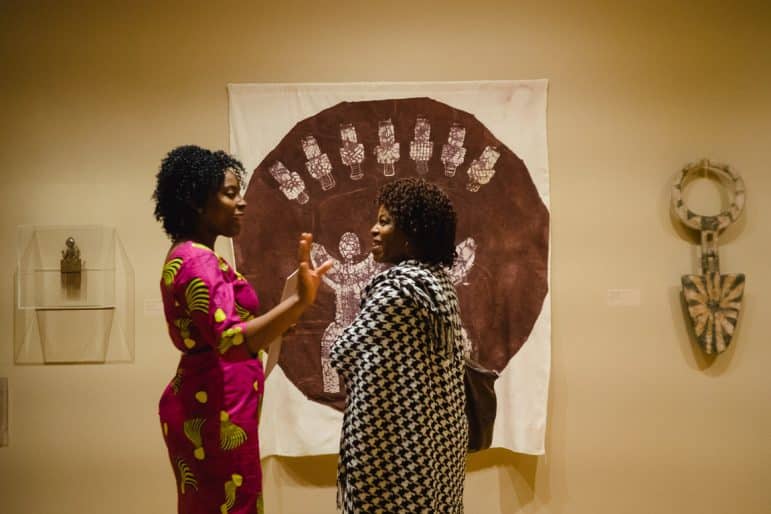
Alvine Kamaha and Nomusa Mngoma, members of the advisory committee for Stories to Tell, in the exhibition, 2016
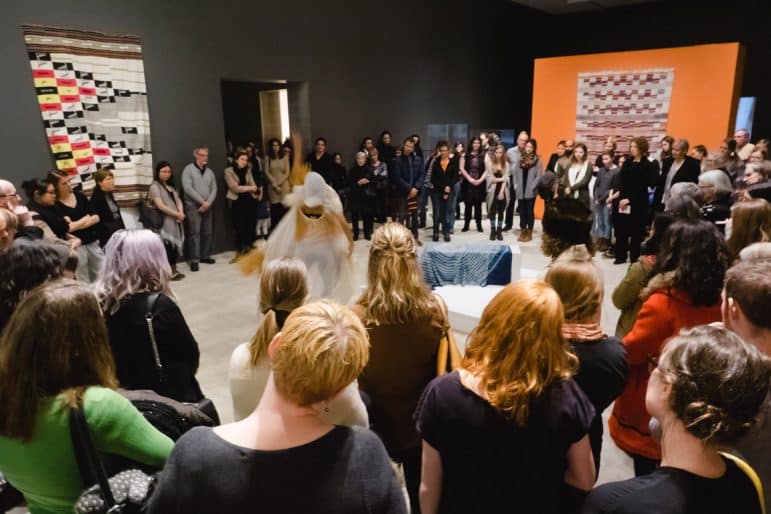
Installation view at the Season Launch, Brendan Fernandes: Lost Bodies with Lua Shayenne’s dance performance of “In Touch,” choreographed by Brendan Fernandes, 2016
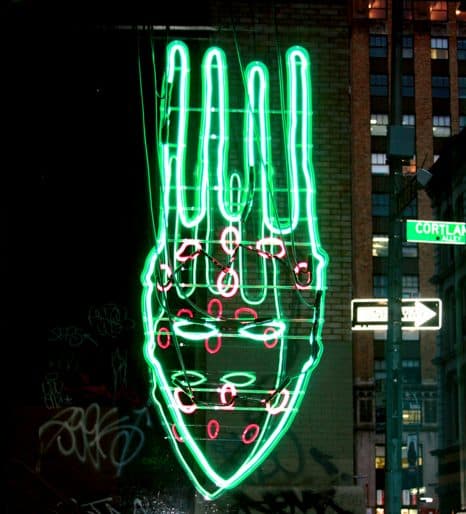
Brendan Fernandes, 1978.412.367, 2010, glass, neon, Plexiglas, transformer and wires. Purchased with the support of the Canada Council for the Arts Acquisition Grants program and the Donald Murray Shepherd Fund, 2013 (56-019)
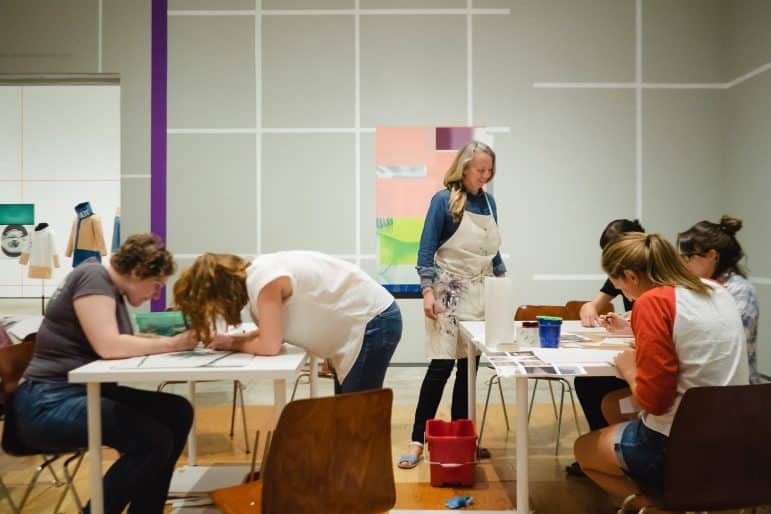
Ciara Phillips’s Workshop, in the exhibition Ciara Phillips: Comrade Objects, 2016

Ciara Phillips, Corin Looking, 2015, screenprint on linen. Purchase, Gallery Association Purchase Fund, 2017. Photo: Paul Litherland

Alvine Kamaha and Nomusa Mngoma, members of the advisory committee for Stories to Tell, in the exhibition, 2016
2017 is a year of anniversaries and firsts, with the exhibitions Alfred Bader Collects: Celebrating Fifty Years of The Bader Collection; Road Trip: Across Canada with Alan C. Collier, which marks the nation’s sesquicentennial as well as a gift from the artist’s son; and At Home: The Interior in Canadian Art, the Agnes’s 60th-anniversary feature show. The Canadian artist duo, Richard Ibghy and Marilou Lemmens, is the Agnes’s inaugural Stonecroft Foundation Artist-in-Residence. And Picturing Arctic Modernity: North Baffin Drawings from 1964, having garnered the Agnes’s largest exhibition grant ever from the Museums Assistance Program, travels to the Nunatta Sunakkutaangit Museum, Iqaluit, Nunavut.
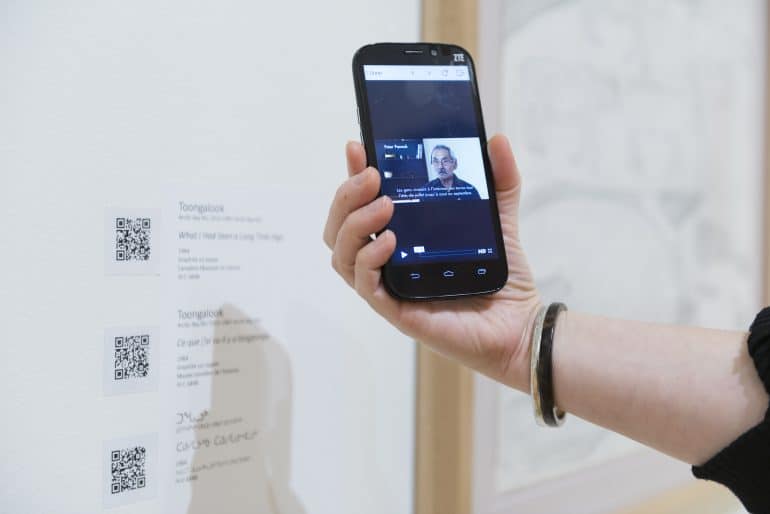
Installation view, Picturing Arctic Modernity: North Baffin Drawings from 1964, 2017. Photo: Paul Litherland
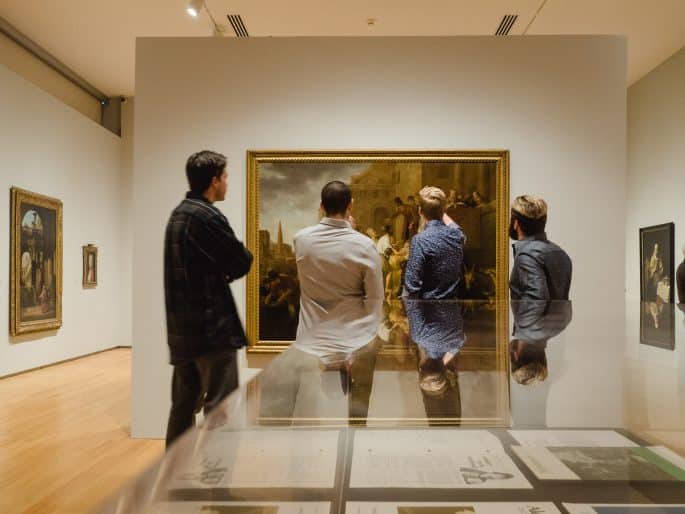
Installation view at the Season Launch, Alfred Bader Collects: Celebrating Fifty Years of The Bader Collection, 2017

Installation view, Road Trip: Across Canada with Alan C. Collier, 2017. Photo: Paul Litherland
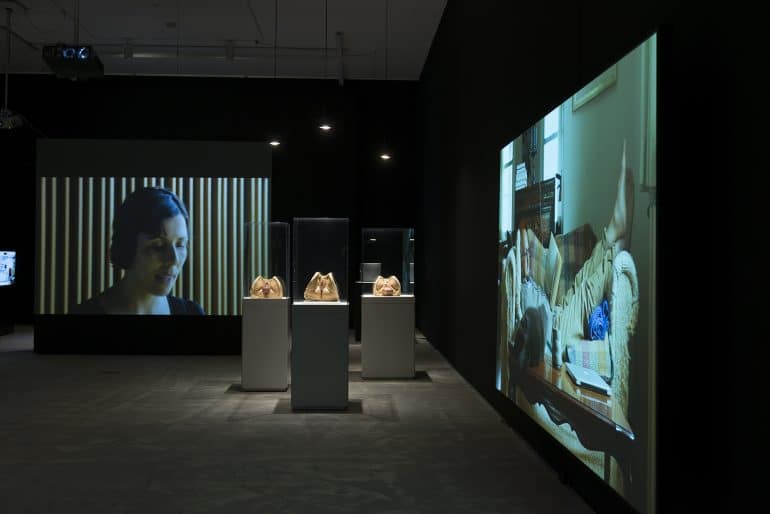
Installation view, The Golden USB: Richard Ibghy and Marilou Lemmens, 2017
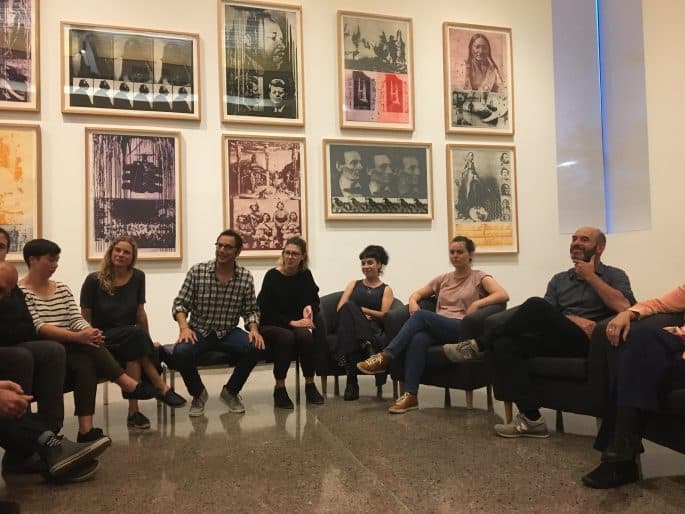
Richard Ibghy and Marilou Lemmens, Stonecroft Artists-in-Residence, lead an open workshop, 2017

Installation view, Picturing Arctic Modernity: North Baffin Drawings from 1964, 2017. Photo: Paul Litherland

Installation view at the Season Launch, Alfred Bader Collects: Celebrating Fifty Years of The Bader Collection, 2017